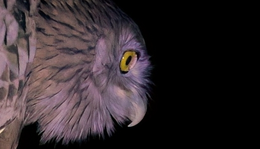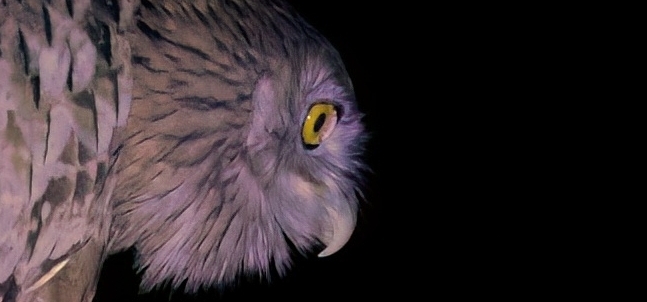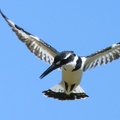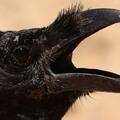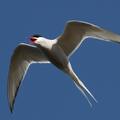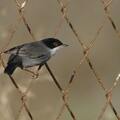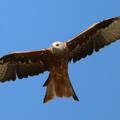
Ketupa zeylonensis semenowi
 Turkish Brown Fish-owl
Turkish Brown Fish-owl
 Balık baykuşu
Balık baykuşu ![]()
 barna halászbagoly
barna halászbagoly
Ketupa zeylonensis semenowi -  Turkish Brown Fish-owl
Turkish Brown Fish-owl 
![]() Balık baykuşu
Balık baykuşu  barna halászbagoly
barna halászbagoly ![]()
(Manavgat River)
● Two toes forward, two toes backward on featherless feet. Special tools with razor-sharp claws for catching fish or crustaceans.
● We found this juvenile bird at 09:30 PM after 1-2 hours of searching. Since the first hotspot was empty this time, we moved on to the next one. On this short drive we spotted the silhouette of an owl on a tree leaning over the river. The car was stopped a little further away and we crept back closer in full darkness. The owl was silent and still perched on the same branch waiting for the fish.
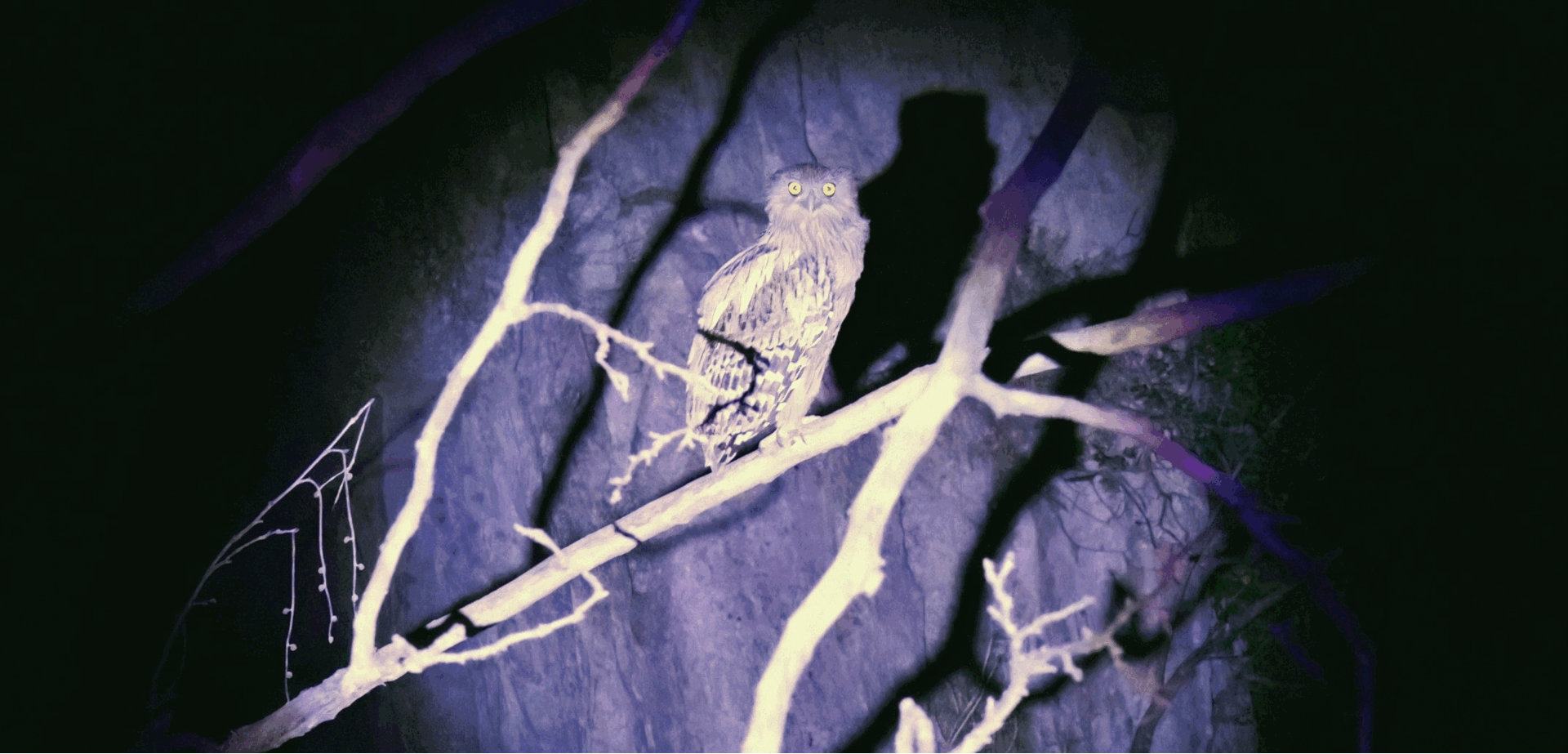
● Only a few minutes are available to take some pictures, as the guide does not allow any further disturbance. As he said, after a few torch exposures, they simply fly away. We left this bird after 3-4 exposures of 10 seconds each. The use of a flash is, of course, strictly forbidden. The observation did not last more than 5-6 minutes in total.
● Interestingly, a cat was also sitting and waiting in the dark on a boulder just in front of the owl on the opposite bank of the small river. Two pairs of eyes glowed in the dark now. We will never know who hunted whom. Probably the cat wanted to steal the fish caught by the owl, but I think it's a risky game for the cat itself too.
● The location is not top secret, but I really don't understand why it isn't, that's why I've decided not to share this information and contribute for further habitat disruption.
● Not so long ago, a small population of these owls lived around the Lake Oymapinar. Owls were used to people coming and going on boats. In 2020, tourists disappeared for a few years due to covid closures, and their subsequent return was shocking for the new generations and they moved to upper, calmer regions of the river. The destruction of several nesting sites by recent big wildfires also contributed to this.
● Just to be sure, I first took pictures with the 150mm kit lens of Canon R7. See results in the gif above.
● I had strong doubts, but in the end I managed to take photos with the f11 600mm lens too. Settings were: 1/100 sec, ISO 32000 with manual focus on R7. A lower ISO probably would have been more than enough too, but there were only a few opportunities for a good shot, so I didn't want to miss it. Resulting raw images weren't too bad, but with odd colors and with a lot of noise. GIMP and IrfanView helped to improve quality afterwards.
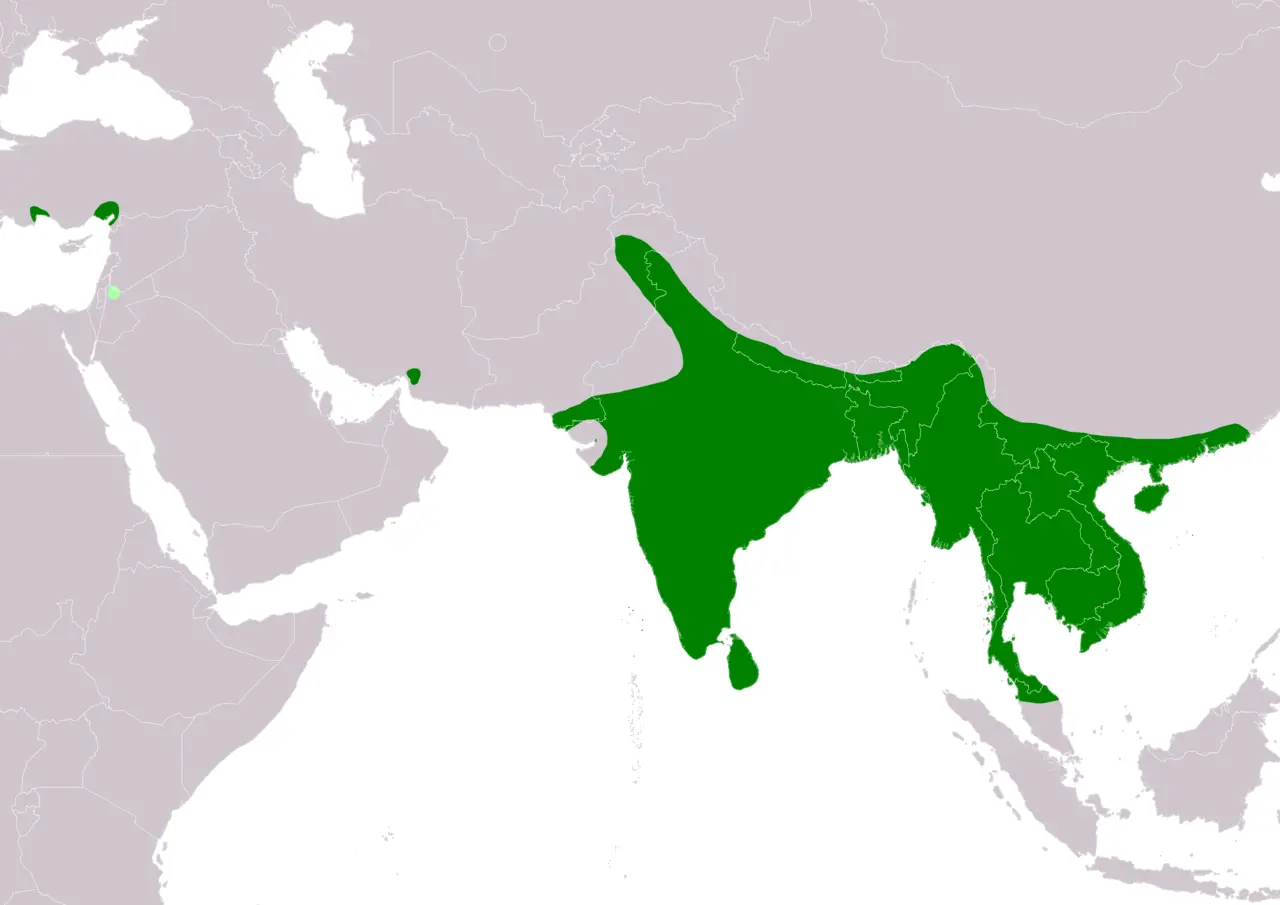
● An interesting source mentions this species as Bubo semenowi - Turkish Fish Owl, a new species. Scientific papers, eBird and Wikipedia still use Ketupa zeylonensis semenowi - Turkish Brown Fish Owl, an isolated subspecies fragment of the main South-Asian population. (Map from Wikipedia) ➤
● This site at the Manavgat River is not the only habitat of the species in the WP, but it almost is.

Telescopus fallax fallax
 Mediterranean Cat Snake
Mediterranean Cat Snake
 Kedi gözlü yılan
Kedi gözlü yılan ![]()
 európai macskakígyó
európai macskakígyó
Telescopus fallax fallax -  Mediterranean Cat Snake
Mediterranean Cat Snake 
![]() Kedi gözlü yılan
Kedi gözlü yılan  európai macskakígyó
európai macskakígyó
(Manavgat River)
● Another creature in the night at the river.
● In the bright light of a torch or during the day, its pupils are vertically slit-shaped, otherwise they are round.
● Photo was taken with 150mm kit lens of R7 in the light of a handheld torch, image was fixed with GIMP and IrfanView afterwards.
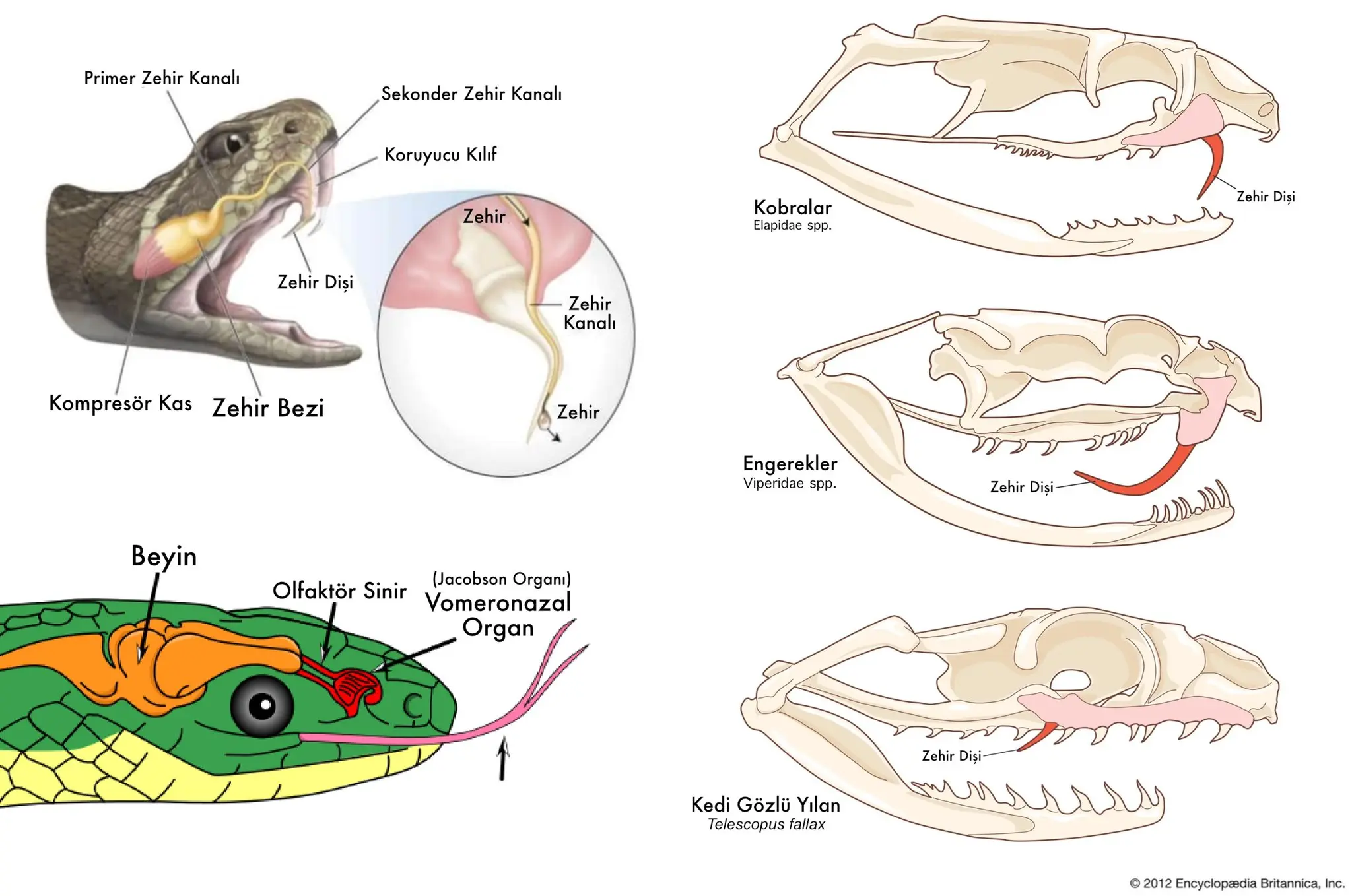 ● 50-100 cm long, nocturnal, slightly venomous but only hunts for small animals.
● 50-100 cm long, nocturnal, slightly venomous but only hunts for small animals.
● Opisthoglyphous snake, meaning it has two engraved fangs from posterior maxilla. In a position of the teeth like this, it is impossible to inject venom to human. ➤
● In Kefalonia, Greece, they are the sacred snakes of some religious rituals.
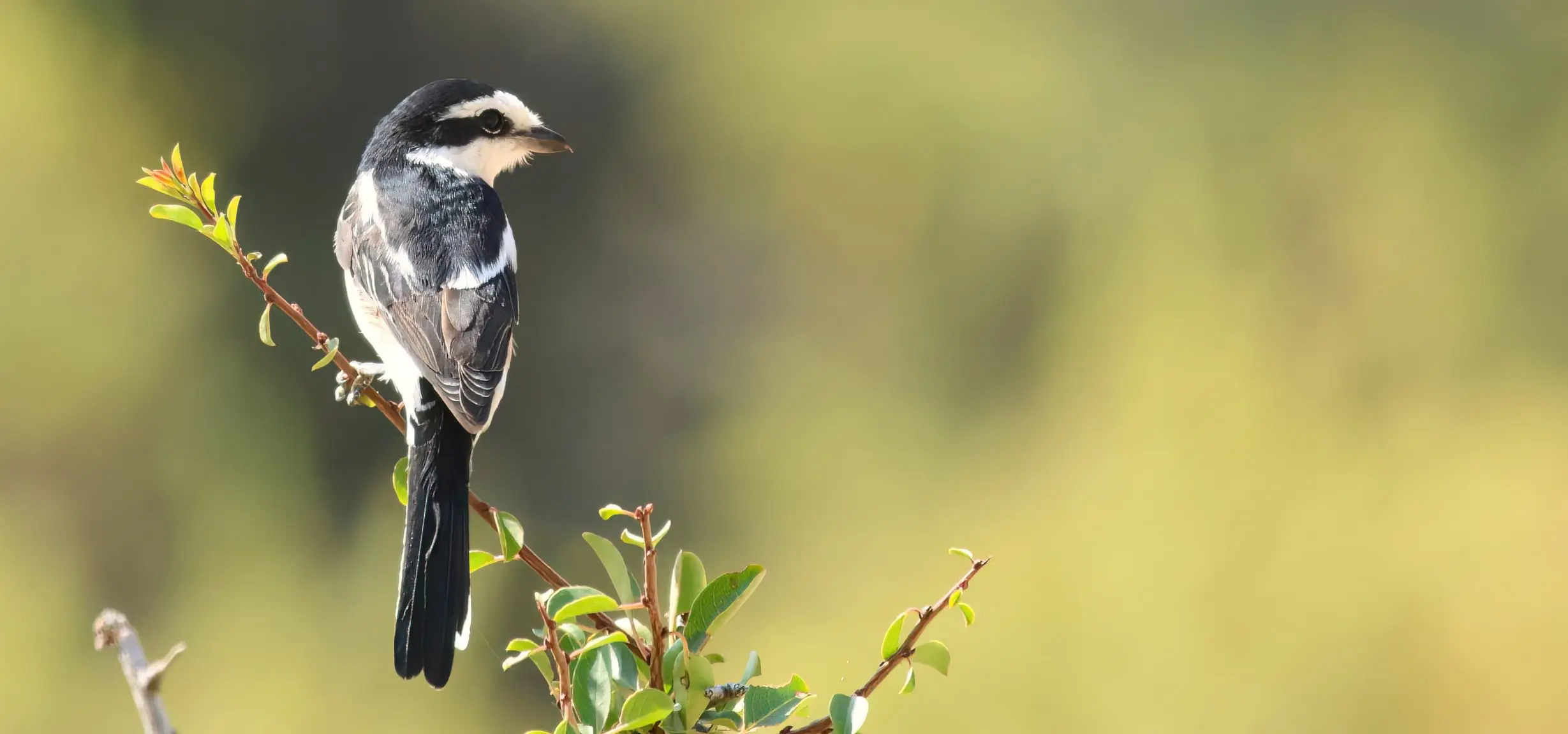
Lanius nubicus.
 Masked Shrike
Masked Shrike
 Alaca örümcek kuşu
Alaca örümcek kuşu ![]()
 álarcos gébics
álarcos gébics
Lanius nubicus. -  Masked Shrike
Masked Shrike 
![]() Alaca örümcek kuşu
Alaca örümcek kuşu  álarcos gébics
álarcos gébics![]()
(roadside clearing, 1360 m, Çimiköy Köyü Yolu, Akseki region)
● Surprisingly common in many habitats in the Akseki region and also around Side: villages, forests, groves, mountains. Not less common than the Red-backed Shrike (L. collurio collurio).
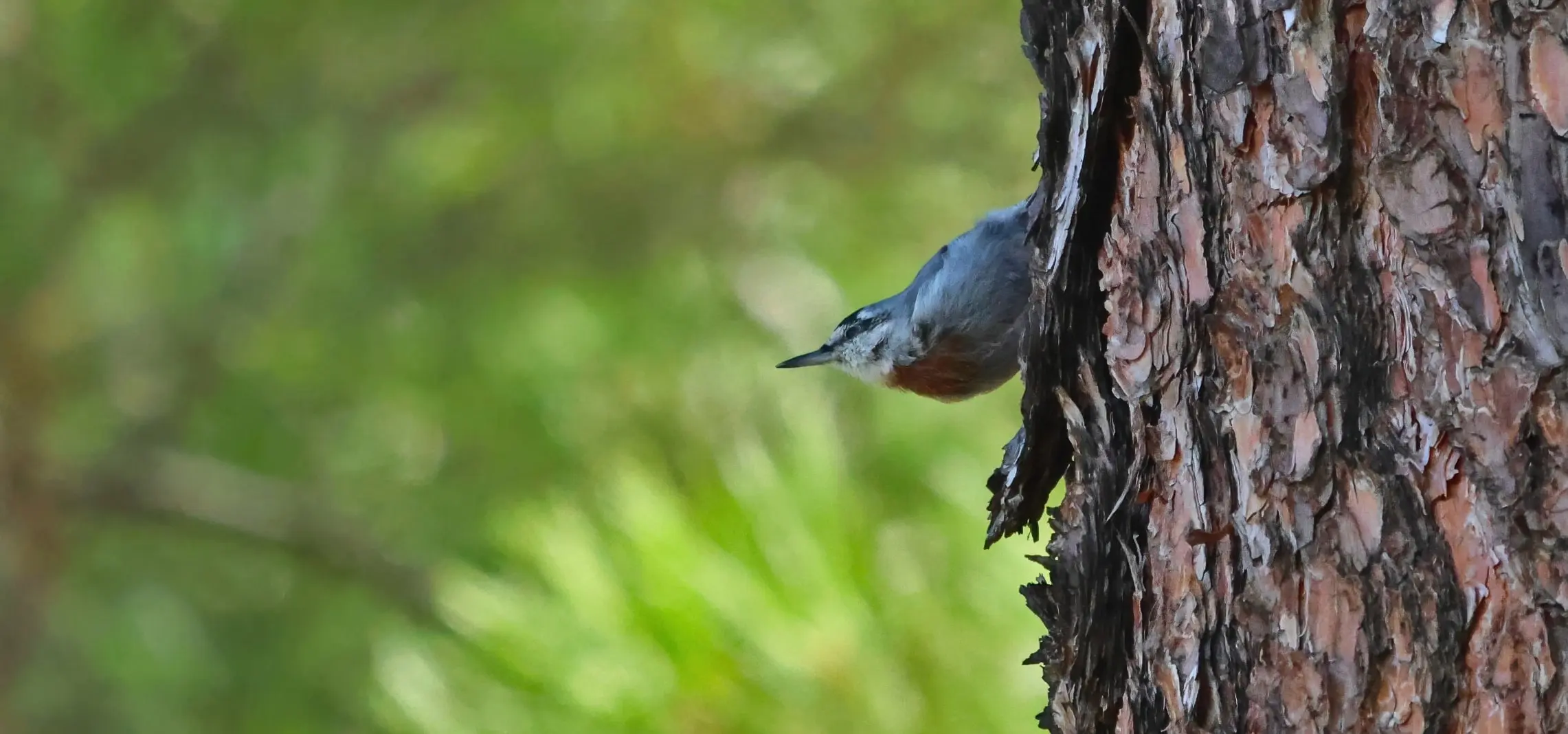
Sitta krueperi.
 Krüper's Nuthatch
Krüper's Nuthatch
 Küçük (Anadolu) sıvacı kuşu
Küçük (Anadolu) sıvacı kuşu ![]()
 álarcos gébics
álarcos gébics
Sitta krueperi. -  Krüper's Nuthatch
Krüper's Nuthatch 
![]() Küçük (Anadolu) sıvacı kuşu
Küçük (Anadolu) sıvacı kuşu  török csuszka
török csuszka![]()
(forest road, 1160 m, Çimiköy Köyü Yolu, Dutluca, Akseki region)
● Only almost endemic to Türkiye, as it also lives in E-Greece and in the Caucasus.
● Both sexes have bright rusty breastplates, males have a bigger and sharply demarcated black spot on the head.
● They live in denser forest habitats.
● We saw 3 birds moving together, and they were shy in our presence. 3 others birds could only be heard nearby:
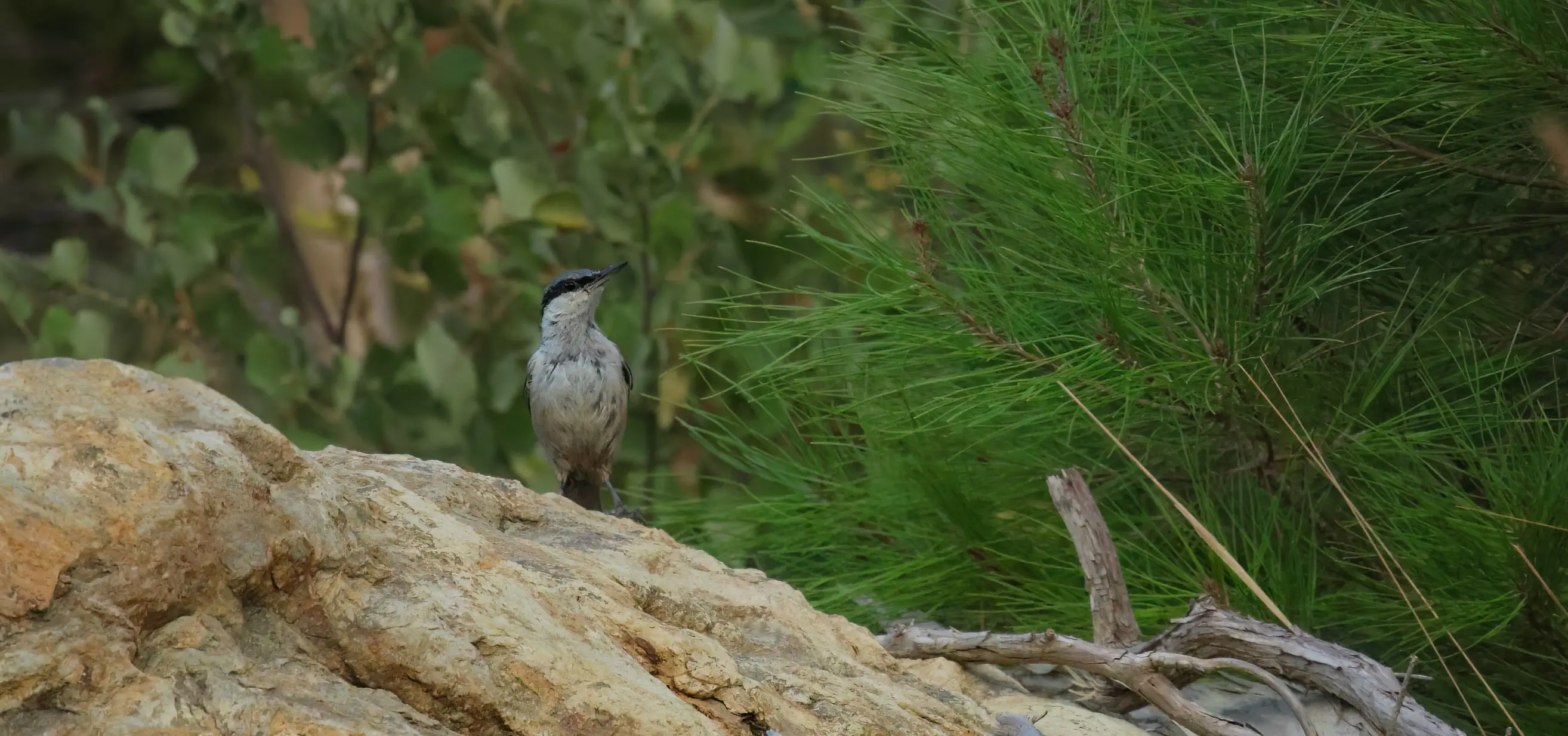
Sitta neumayer zarudnyi
 Western Rock Nuthatch
Western Rock Nuthatch
 Kaya sıvacı kuşu
Kaya sıvacı kuşu ![]()
 szirti csuszka
szirti csuszka
Sitta neumayer zarudnyi -  Western Rock Nuthatch
Western Rock Nuthatch 
![]() Kaya sıvacı kuşu
Kaya sıvacı kuşu  szirti csuszka
szirti csuszka![]()
(ruined cabins with well, 1480 m, Çimiköy Köyü Yolu, Akseki region)
● A common bird of the mountainous region.
● Sociable, vocal, curious and bold birds that move in small groups.
● Relative to their body size, nesting pairs build really large nests made of mud, stucked to cliffs or buildings. ➤
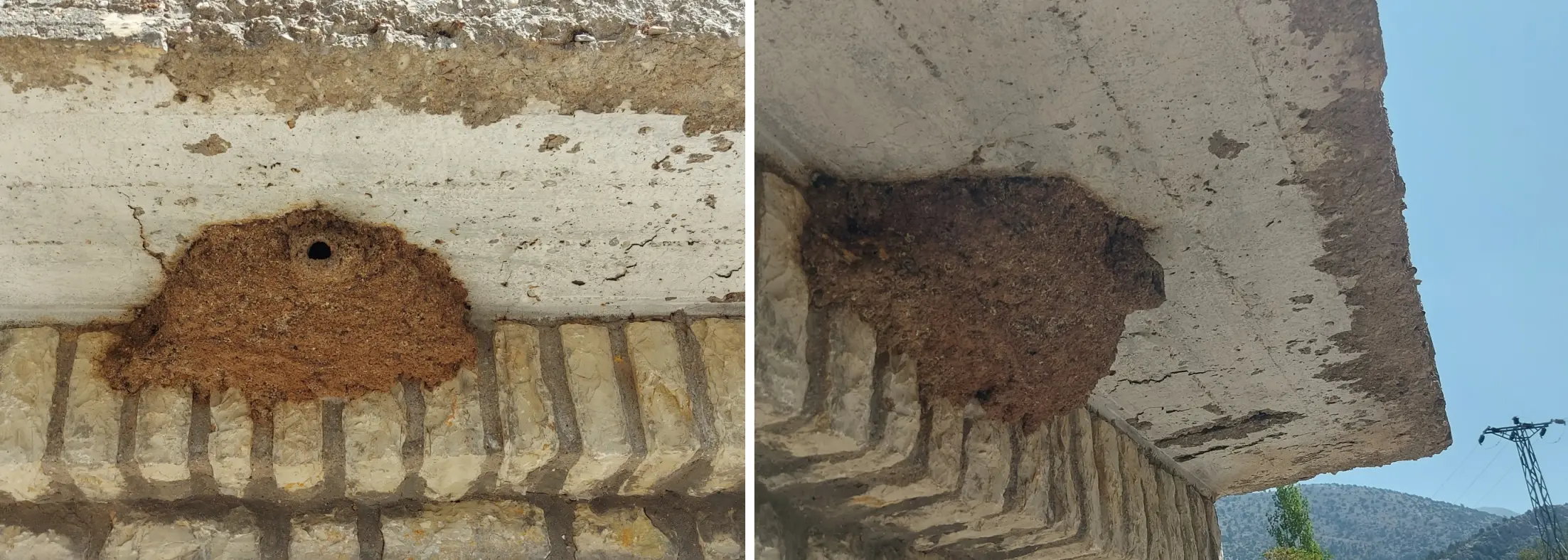
● The Western RN is very similar to the Eastern RN (S. tephronota), but fortunately this is not a problem in the Akseki region of the Taurus Mountains. Their plumage can be very similar, they mostly differ only in body sizes. The Western RN is slightly bigger than the European N, the Eastern RN is larger than both.
● The nominate ssp neumayer lives in the Balkans and Greece, ssp zarudnyi (smaller and paler) is the race of Asia Minor.
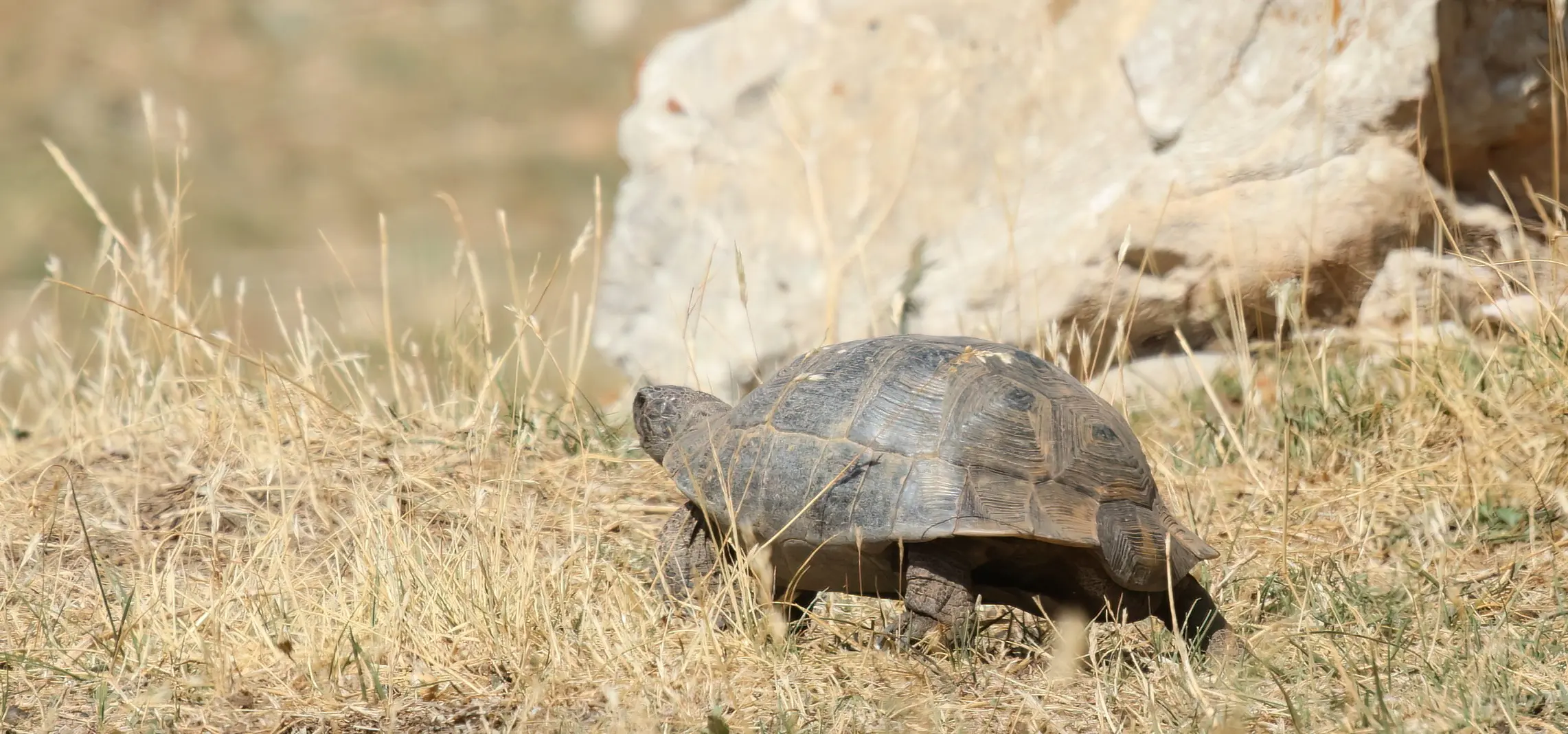
Testudo graeca (anamurensis) terrestris / ibera
 Greek (Anamur) Tortoise
Greek (Anamur) Tortoise
 Mahmuzlu Akdeniz kaplumbağası
Mahmuzlu Akdeniz kaplumbağası ![]()
 mór teknős
mór teknős
Testudo graeca (anamurensis) terrestris / ibera -  Greek (Anamur) Tortoise
Greek (Anamur) Tortoise 
![]() Mahmuzlu Akdeniz kaplumbağası
Mahmuzlu Akdeniz kaplumbağası  mór teknős
mór teknős
(ruined cabins with well, 1480 m, Çimiköy Köyü Yolu, Akseki region)
● He just drank from the puddle around a well and walked away.
● Male because the rear scute of carapace leans inwards.
● Officially, ssp anamurensis is no longer a valid taxon. Recent papers completely exclude anamurensis and only discuss terrestris or ibera in this region, but distribution maps are still conflicting.
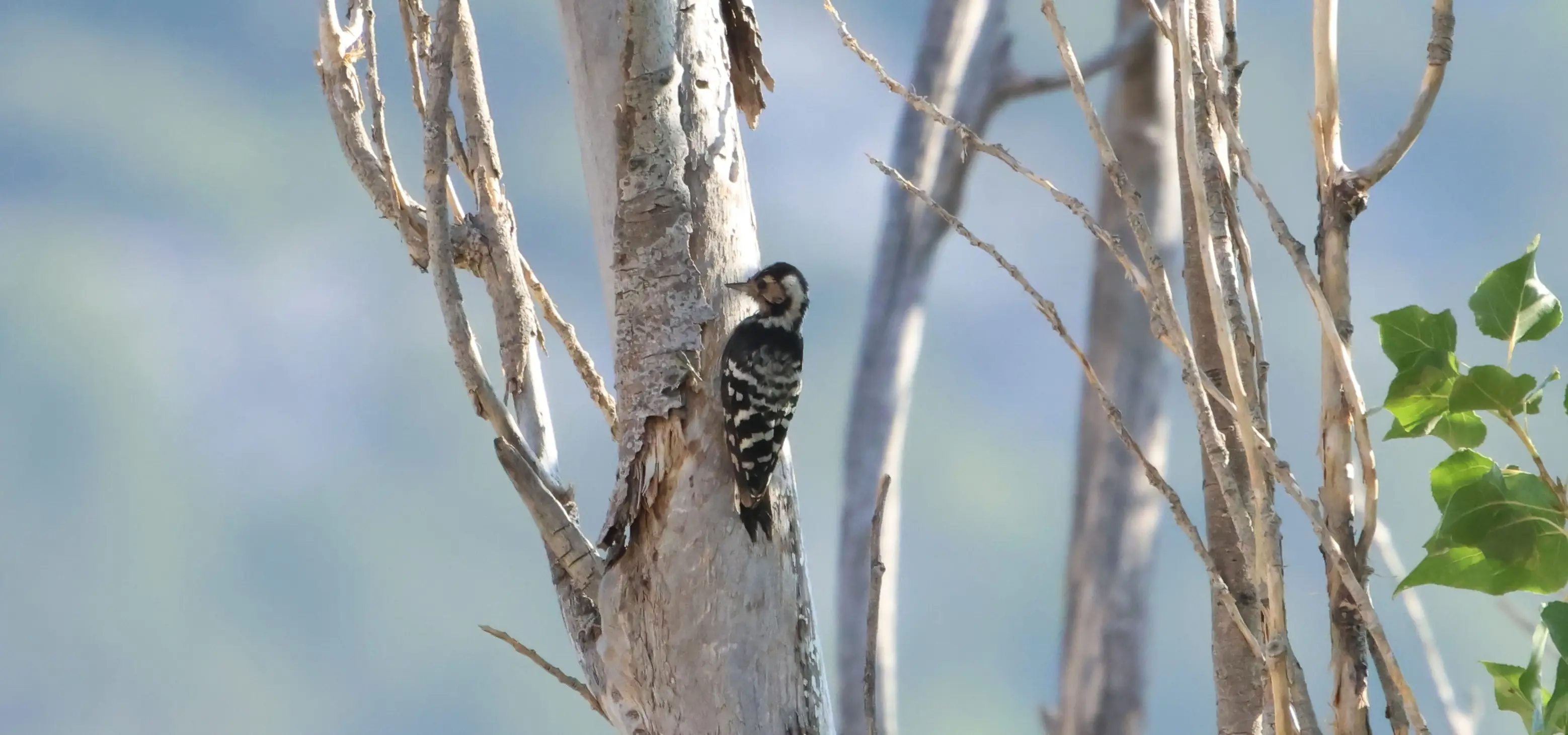
Dryobates minor danfordi
 Lesser Spotted Woodpecker
Lesser Spotted Woodpecker
 Küçük ağaçkakan
Küçük ağaçkakan ![]()
 kis fakopáncs
kis fakopáncs
Dryobates minor danfordi -  Lesser Spotted Woodpecker
Lesser Spotted Woodpecker 
![]() Küçük ağaçkakan
Küçük ağaçkakan  kis fakopáncs
kis fakopáncs![]()
(road at cemetery, 1020 m, Çimiköy Köyü Yolu, Dutluca, Akseki region)
● Ssp danfordi is the race in Greece and Türkiye (except SE-Türkiye). Black band connects cap and moustache on ear coverts. Darker underparts. (Female bird in pic)
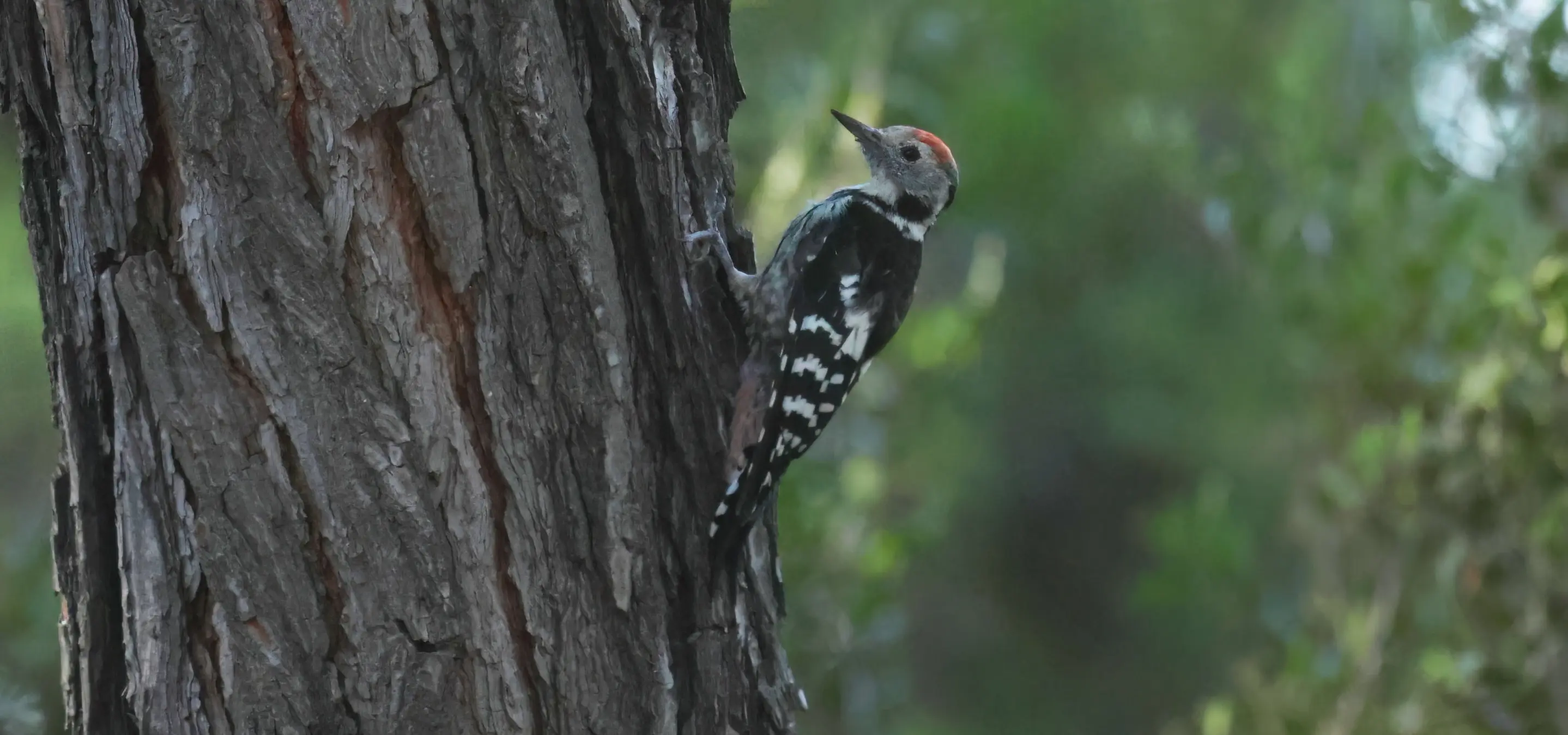
● Another woodpecker was found in the little forest on Çolaklı hill: a Middle Spotted Woodpecker (Dendrocoptes medius anatoliae), a regional ssp with paler red colors in underparts and more streaks on breast. (Another female bird in small image) ➤
● With the exception of a Wryneck (Jynx torquilla torquilla) at the site called here 'Ruined cabins', no other woodpeckers have been seen or heard in these days.
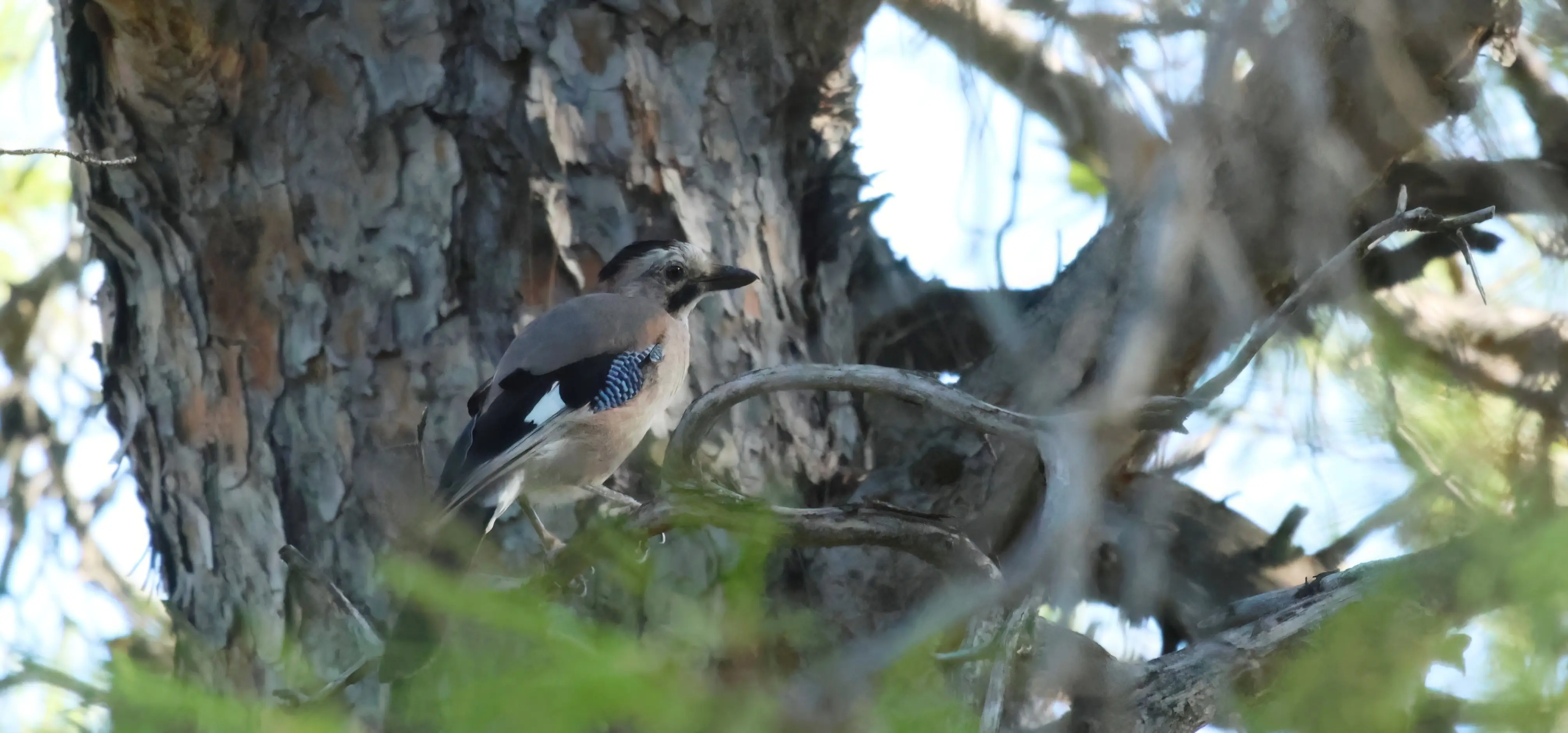
Garrulus glandarius anatoliae
 Anatolian Jay
Anatolian Jay
 Bayağı alakarga
Bayağı alakarga ![]()
 anatóliai szajkó
anatóliai szajkó
Garrulus glandarius anatoliae -  Anatolian Jay
Anatolian Jay 
![]() Bayağı alakarga
Bayağı alakarga  anatóliai szajkó
anatóliai szajkó![]()
(Çolaklı hill, Üçtepeler Cad, Çolaklı, Side)

● A very strange looking ssp from the region. Black half-cap, colorless face, pale body colors.
● The widespread species has 8 race groups with 33 subspecies within. ➤
● Ssp anatoliae belongs to the race group Atricapillus and lives in E-Greece, S-Türkiye, N-Syria, N-Iraq, W-Iran. (Map: Wikimedia Commons)
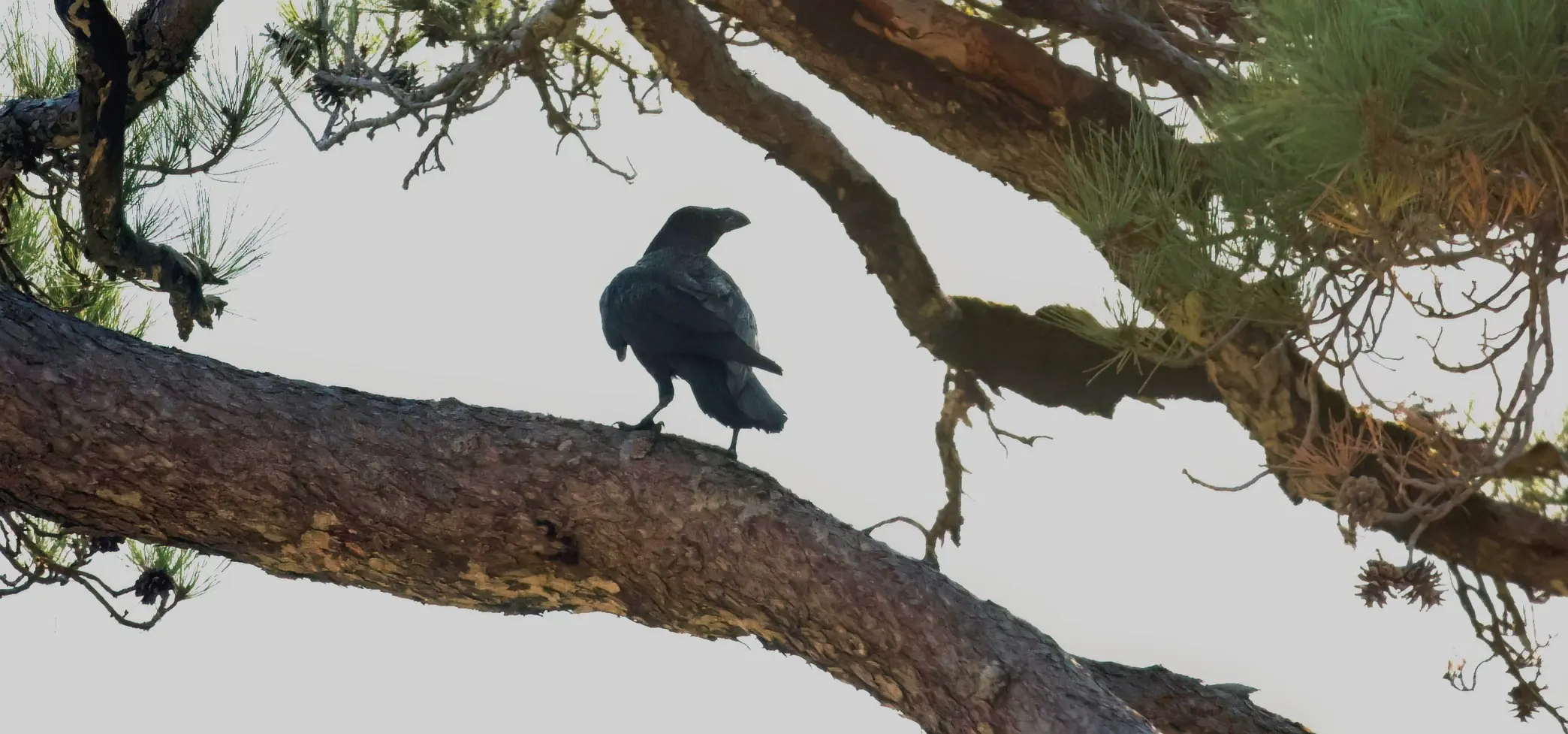
● Other corvid species were represented by abundant Hooded Crow (C. cornix sharpii) in urban-suburban habitats, and by some Ravens (C. corax laurencei) a larger subspecies, in mountainous areas (![]() ). ➤
). ➤
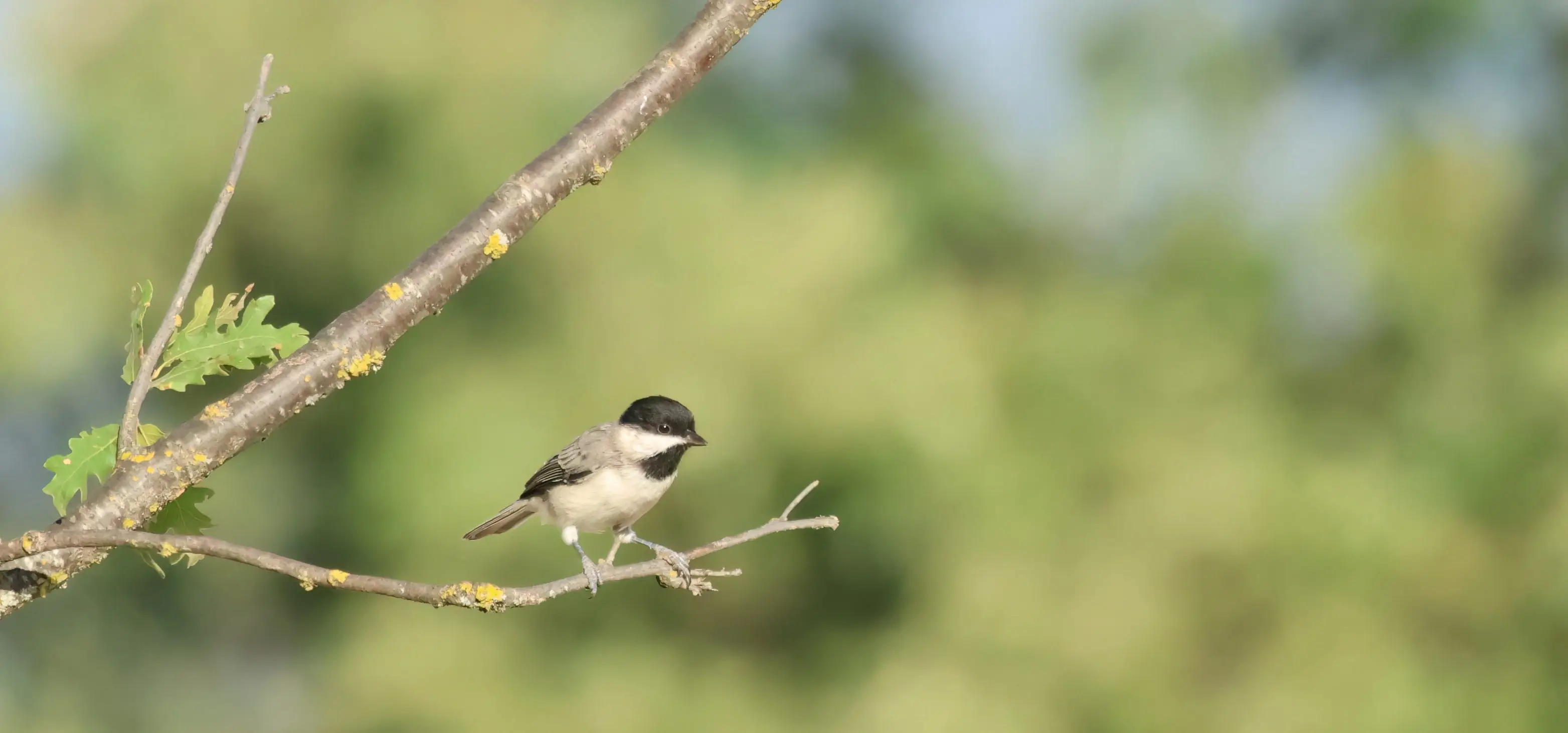
Poecile lugubris anatoliae
 Sombre Tit
Sombre Tit
 Ak yanaklı baştankara
Ak yanaklı baştankara ![]()
 füstös cinege
füstös cinege
Poecile lugubris anatoliae -  Sombre Tit
Sombre Tit 
![]() Ak yanaklı baştankara
Ak yanaklı baştankara  füstös cinege
füstös cinege![]()
(roadside grove, 1020 m, D687 junction, Başlar)
● Not as rare as I thought, but always just a few birds together. Mostly in groves and forests at low altitudes.
● Ssp anatoliae is the race in Asia Minor.
● Some Coal Tits (Periparus ater ater), a Striated Flycatcher (Muscicapa striata neumanni) were also present in this habitat. The Striated Flycatcher has a somewhat paler subspecies here.
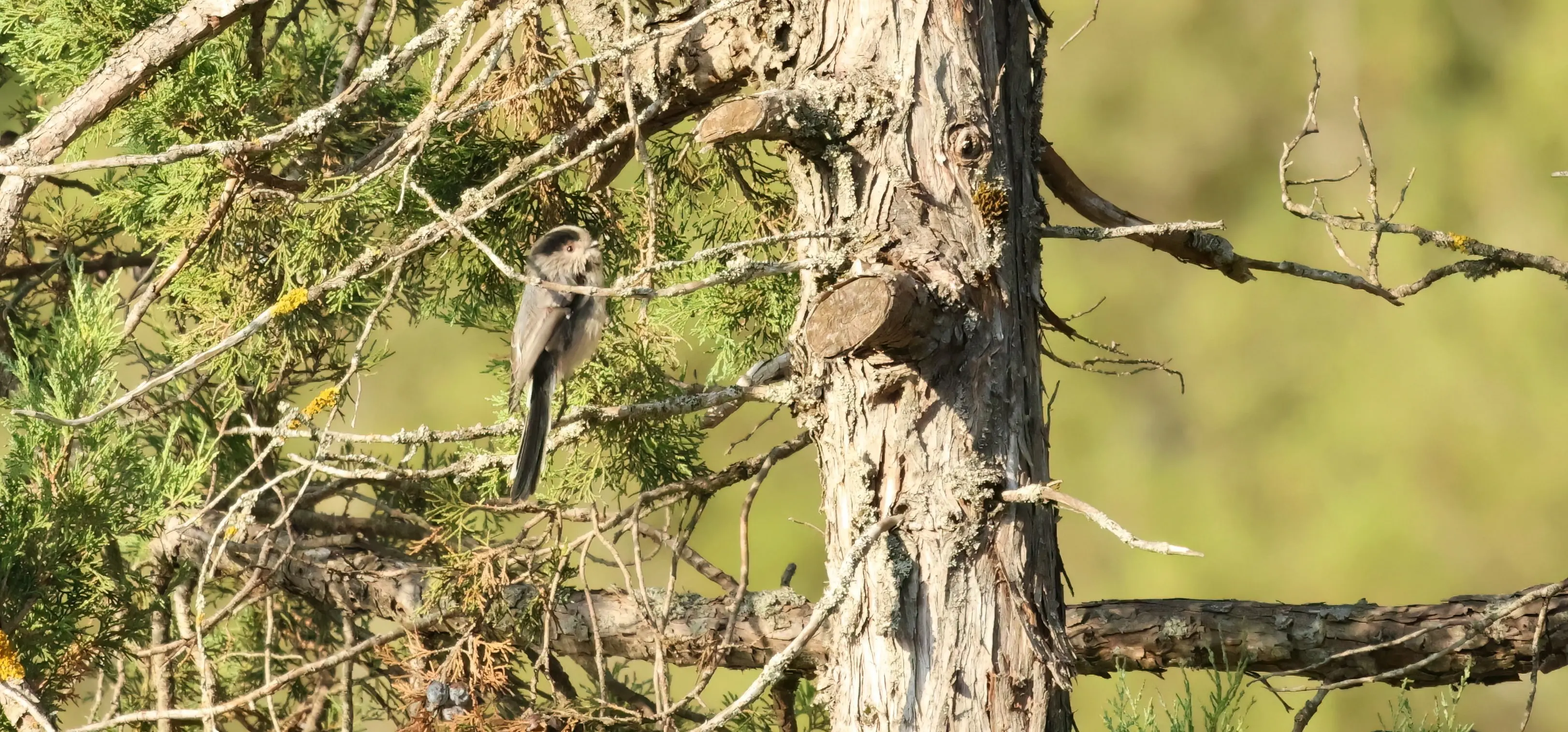
● In the same habitat lives the Anatolian race of the common Long-tailed Tit (Aegithalos caudatus tephronotus). This local subspecies with its darker and dirtier-looking colours seemed to me really different from the European nominate. The thick eyebrows behind the eyes and the different coloration of the wing give it a characteristic look. (![]() ) ➤
) ➤
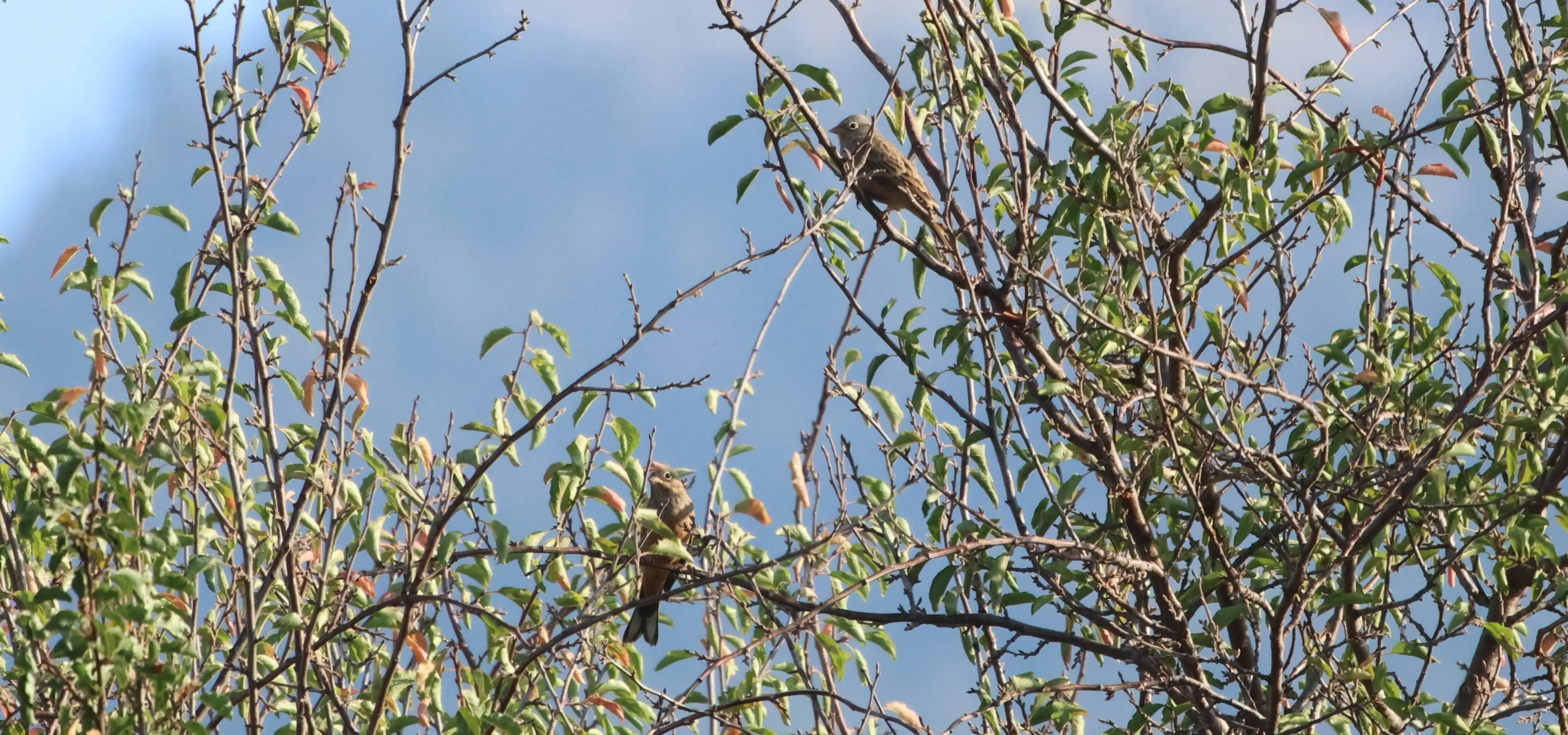
Emberiza hortulana.
 Ortolan Bunting
Ortolan Bunting
 Bayağı kiraz kuşu
Bayağı kiraz kuşu ![]()
 kerti sármány
kerti sármány
Emberiza hortulana. -  Ortolan Bunting
Ortolan Bunting 
![]() Bayağı kiraz kuşu
Bayağı kiraz kuşu  kerti sármány
kerti sármány![]()
(roadside grove, 1020 m, D687 junction, Başlar)
● Here and there in low numbers in groves both at low and high altitudes.
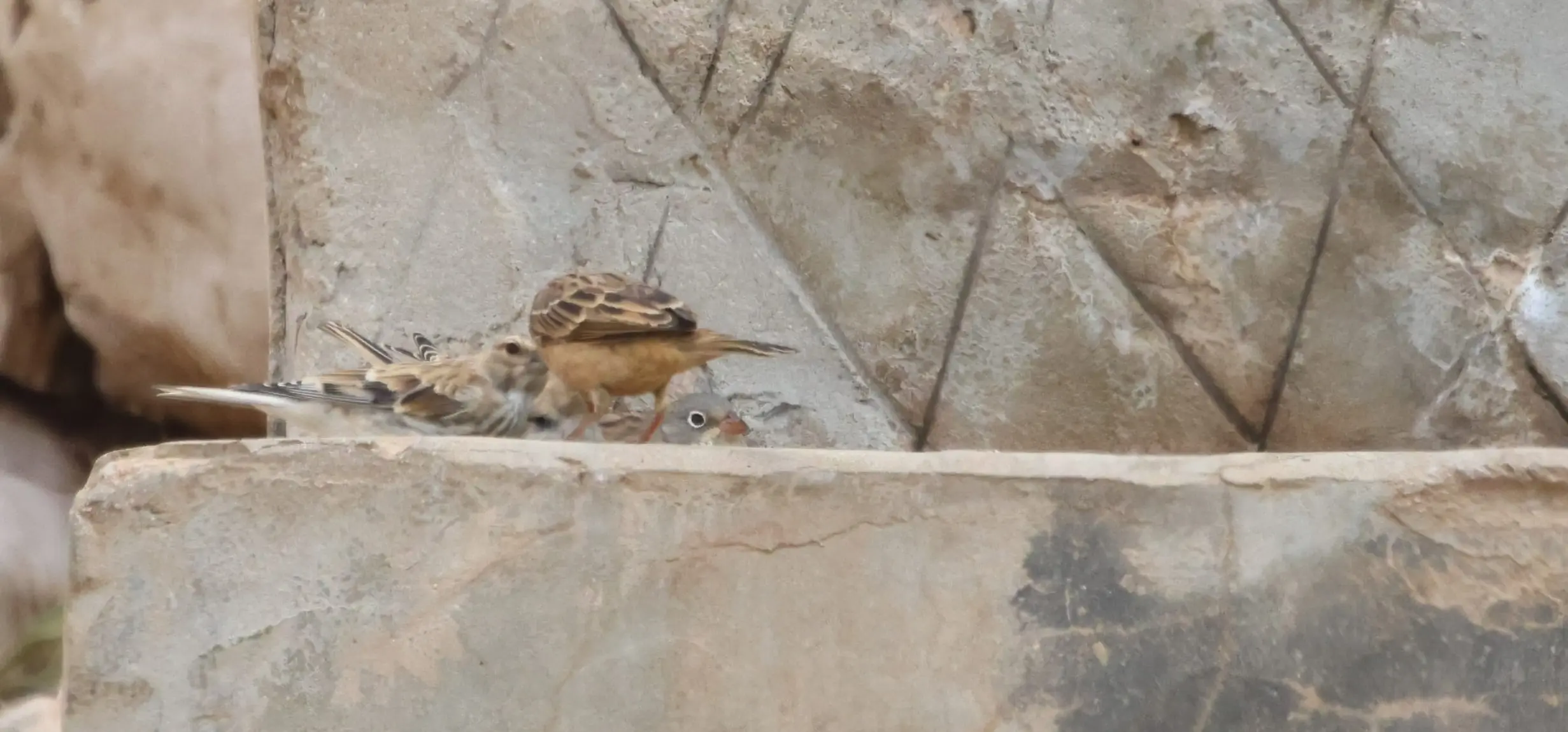
● A single Cretzschmar's Bunting (Emberiza caesia.) was also found, but it was in the higher altitude region. It came to drink to a remote mountain well with a small group of Ortolan Buntings (with two Linnets on the left here). ➤
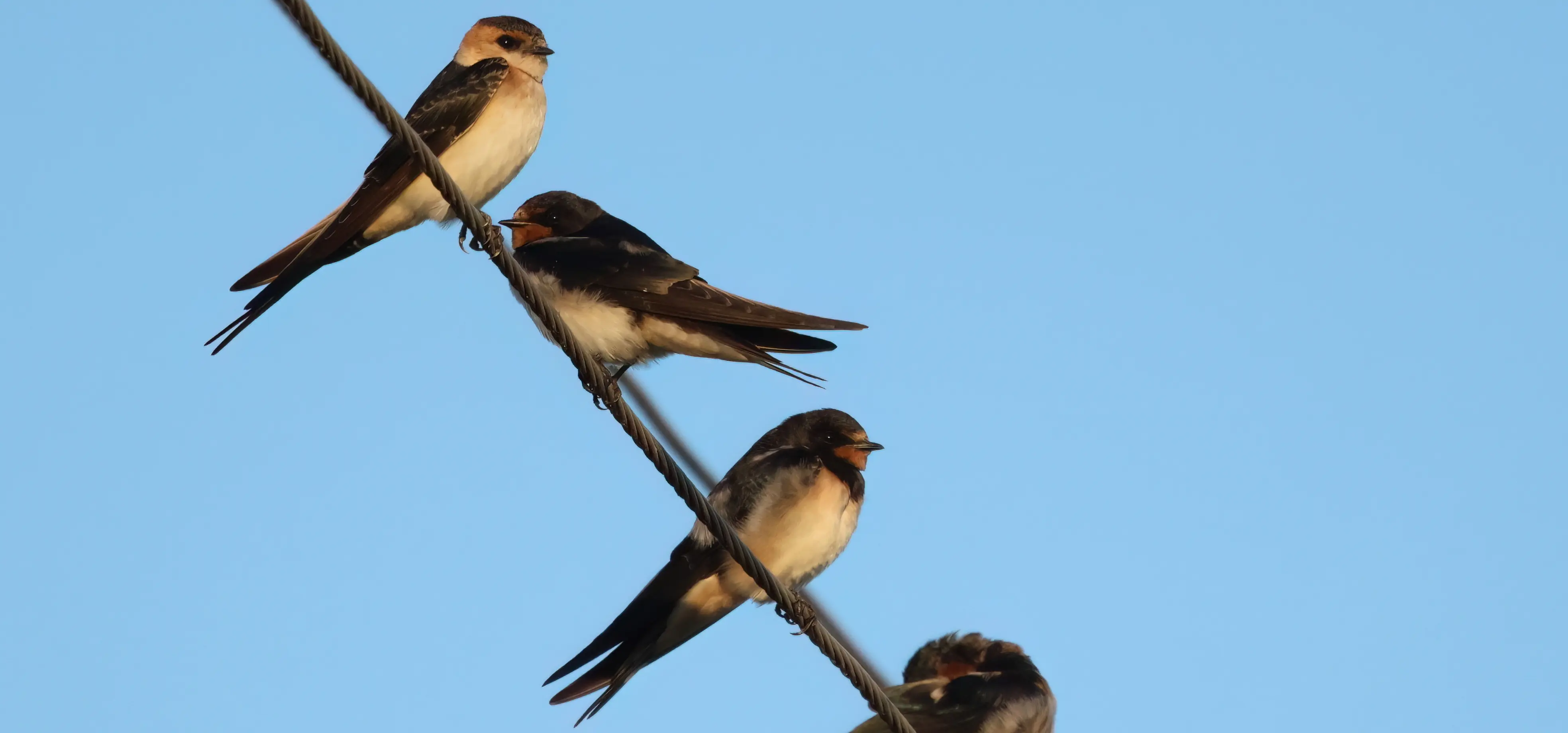
Cecropis daurica rufula
 Western Red-rumped Swallow
Western Red-rumped Swallow
 Kızıl kırlangıç
Kızıl kırlangıç ![]()
 vörhenyes fecske
vörhenyes fecske
Cecropis daurica rufula -  Western Red-rumped Swallow
Western Red-rumped Swallow 
![]() Kızıl kırlangıç
Kızıl kırlangıç  vörhenyes fecske
vörhenyes fecske
(village farm, Demokrasi Cad, Çolaklı, Side)
● Common swallow species around the village of Çolaklı, where they move together with Barn Swallows (H. rustica rustica).
● Ssp rufula is the same subspecies as in Europe.
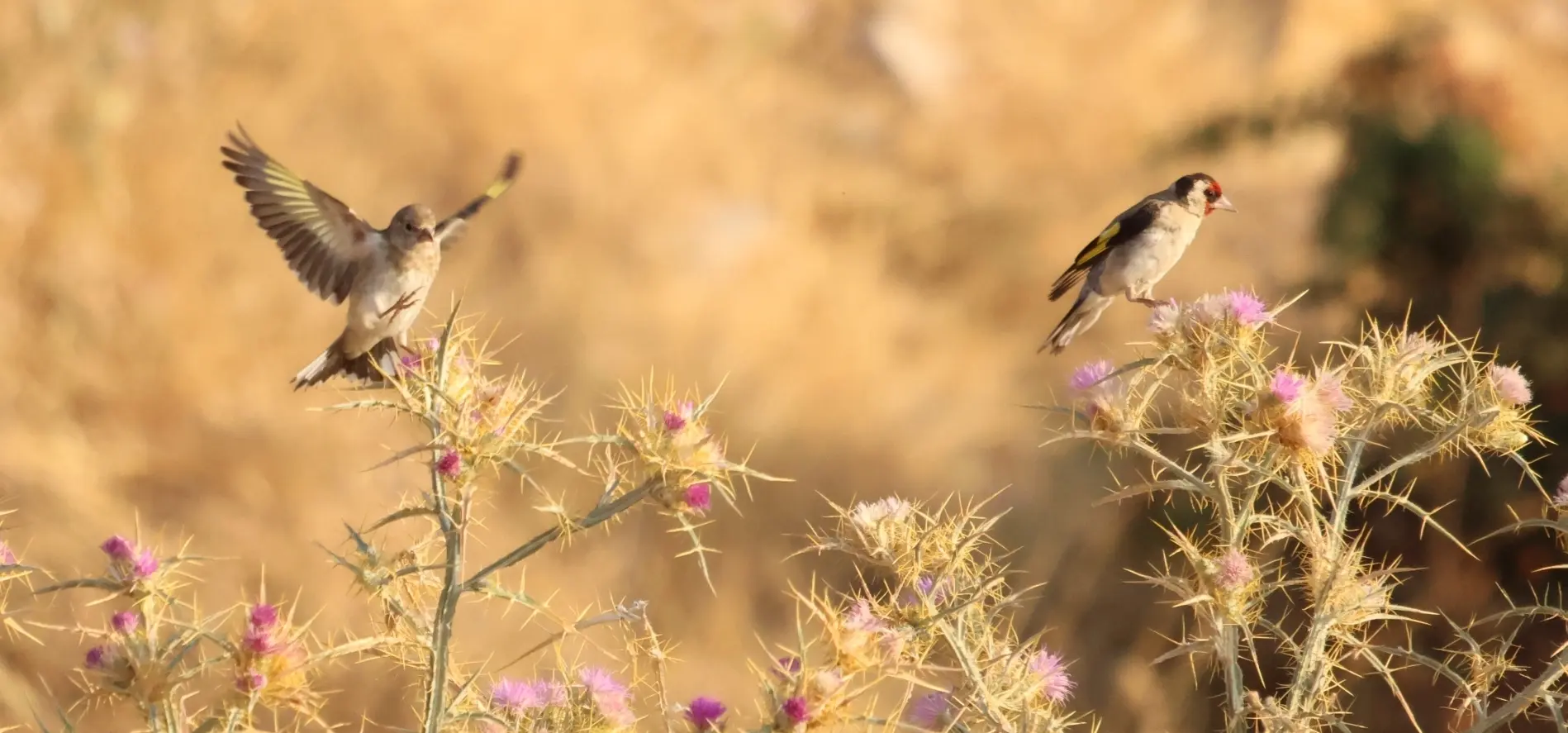
● In this rural-urban habitat, another familiar and common bird from Europe, Goldfinch, also has a different subspecies here (Carduelis carduelis niediecki). Paler back and paler breast buff are the main differences. (![]() ) ➤
) ➤
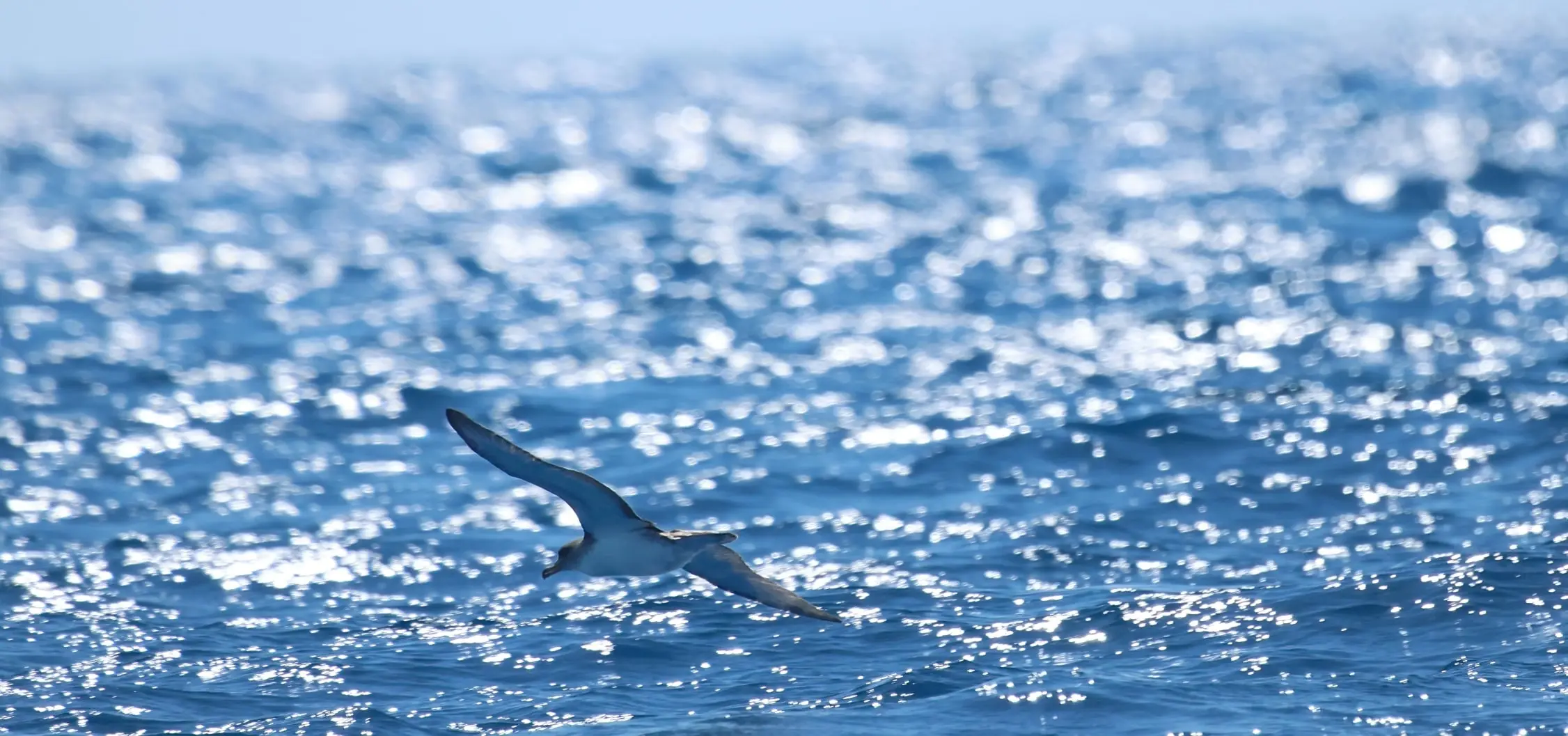
Calonectris diomedea.
 Scopoli's Shearwater
Scopoli's Shearwater
 Boz yelkovan
Boz yelkovan ![]()
 mediterrán vészmadár
mediterrán vészmadár
Calonectris diomedea. -  Scopoli's Shearwater
Scopoli's Shearwater 
![]() Boz yelkovan
Boz yelkovan  mediterrán vészmadár
mediterrán vészmadár
(Gulf of Antalya, Antik Side)
● Primaries are mostly white, grey is only at the end of these feathers.
● Turkish name is interesting here. In Turkish, Yelkovan is the official name of another bird: Yelkouan Shearwater (Puffinus yelkouan), and Boz yelkovan is the name of Scopoli's Shearwater (C. diomedea). In direct translation, Yelkovan means wing, Boz yelkovan means grey wing.
● I only saw a few of them, hanging around in small groups.
● Photo was taken from a little fishing boat departed from Antik Side, we were about 2 km from the coastline. There were simply no other birds here. Nothing. No fish either... Gulls were represented only by very few Yellow-legged Gulls (L. michahellis michahellis) in the beach zone (a total of 2 birds in 2 days). Fish stock of the sea seemed very scarce nowadays.
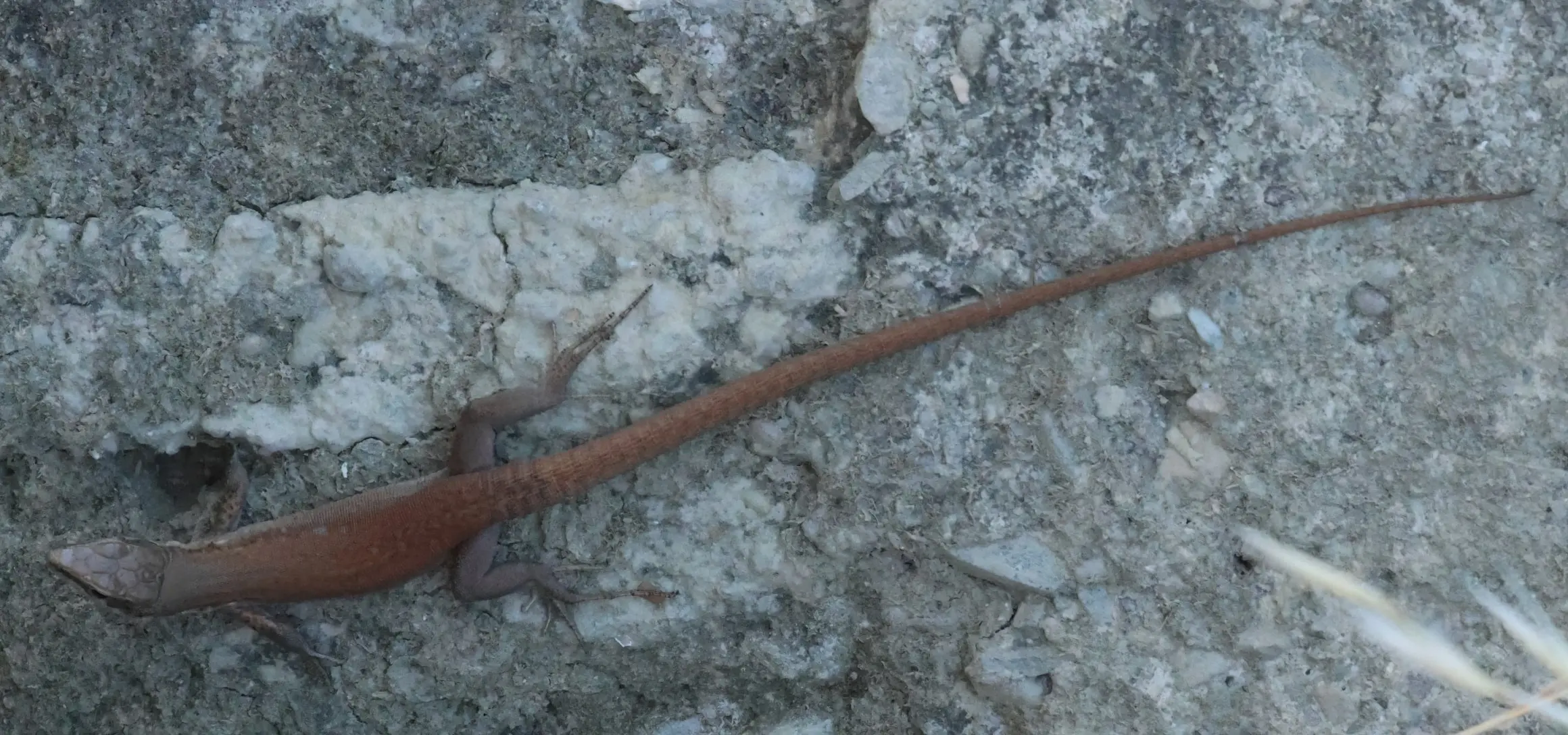
Lacerta pamphylica
 Pamphylian Emerald Lizard
Pamphylian Emerald Lizard
 Pamfilya kertenkelesi
Pamfilya kertenkelesi ![]()
 török zöld gyík
török zöld gyík
Lacerta pamphylica -  Pamphylian Emerald Lizard
Pamphylian Emerald Lizard 
![]() Pamfilya kertenkelesi
Pamfilya kertenkelesi  török zöld gyík
török zöld gyík
(ruined house, Tilkiler Cd., Çolaklı, Side)
● The ancient name of the region is Pamphylia.
● This is a juvenile lizard, adults are bright green and blue (and are easy to recognize...).
● Identification was based on the information and images of this very excelent page, which I would really like to recommend to anyone interested: lacerta.de
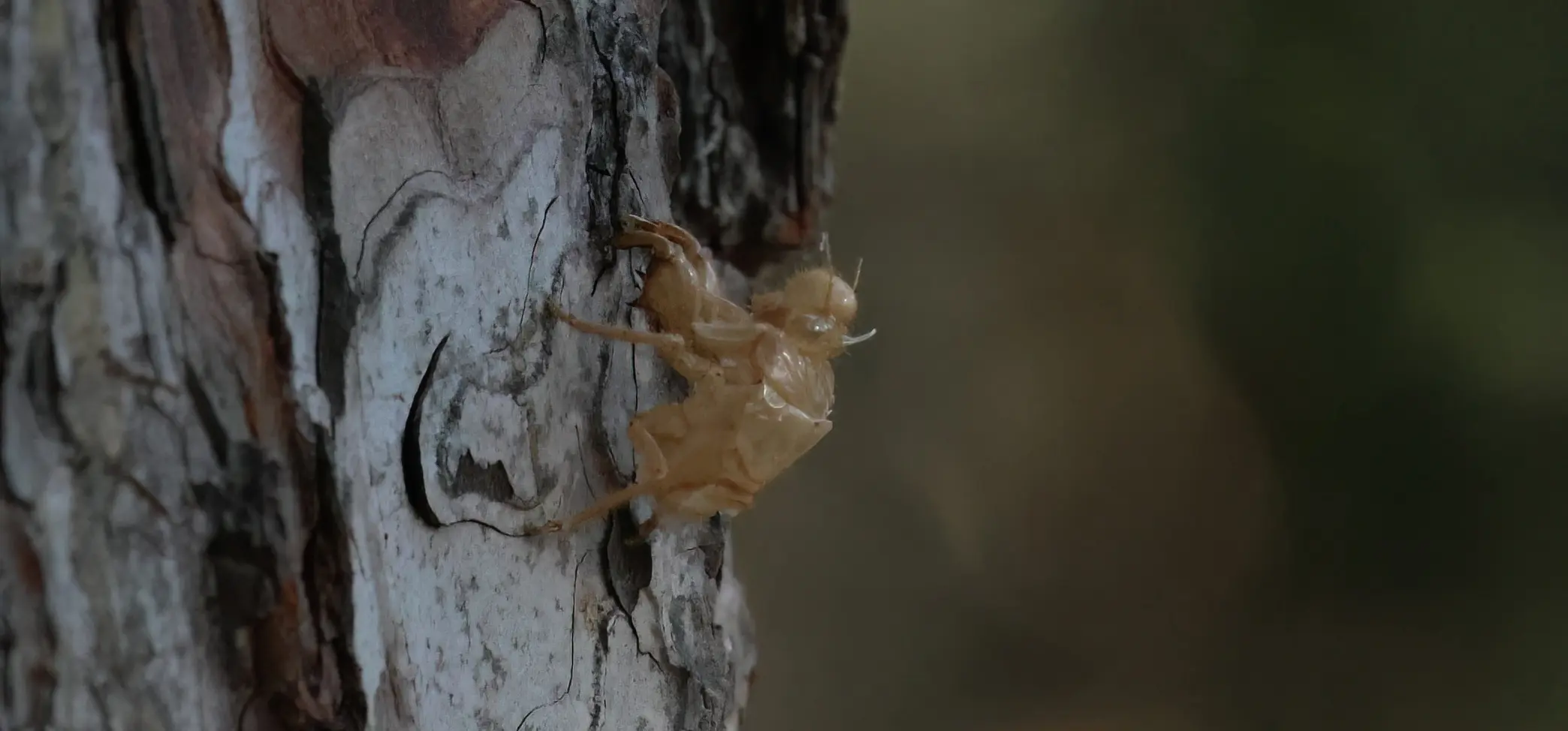
Cicada sp
Çolaklı hill, Üçtepeler Cad Or at least the shed skin of the larva. According to data of iNaturalist.org Cicada lodosi and Lyristes gemellus are the most common species in the region. Based on morphology of the skin, I'm guessing the first one, but I'm not sure. |
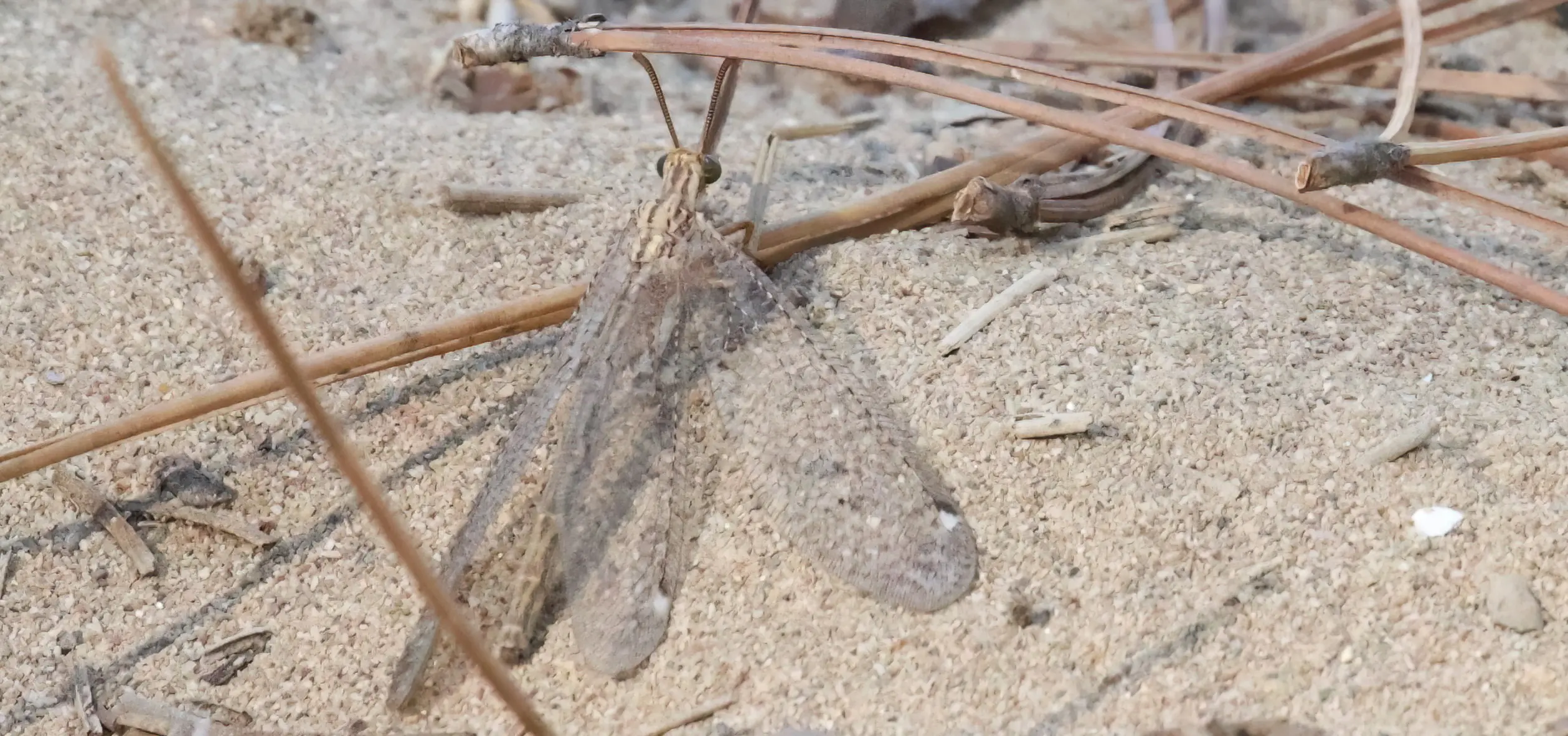
Cueta cf. lineosa
On sand dunes in a pine grove. The Dorsal pattern of the stripes on thorax most closely resembles this species. |
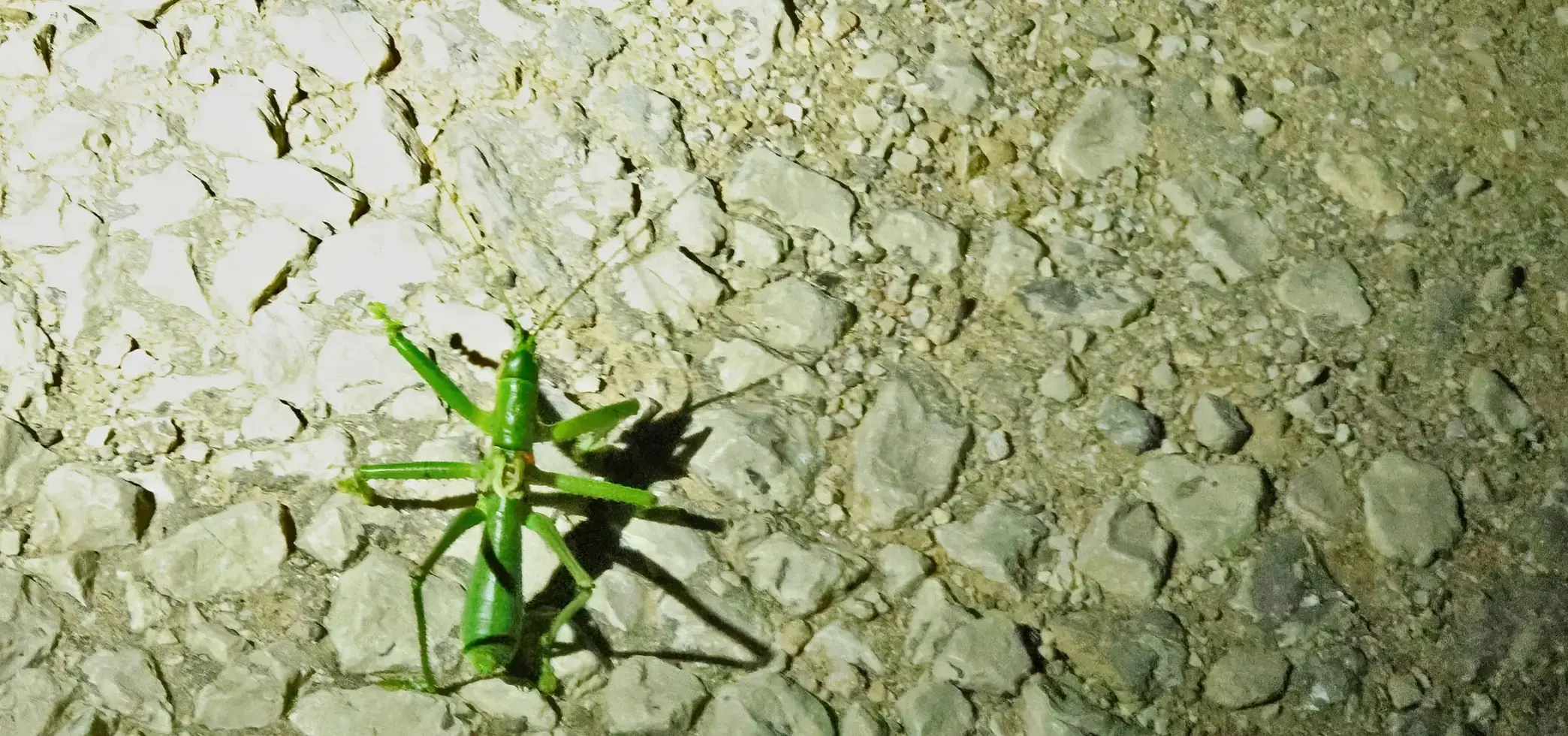
Saga natoliae(?)
Manavgat River Photographed in full darkness by torchlight. |
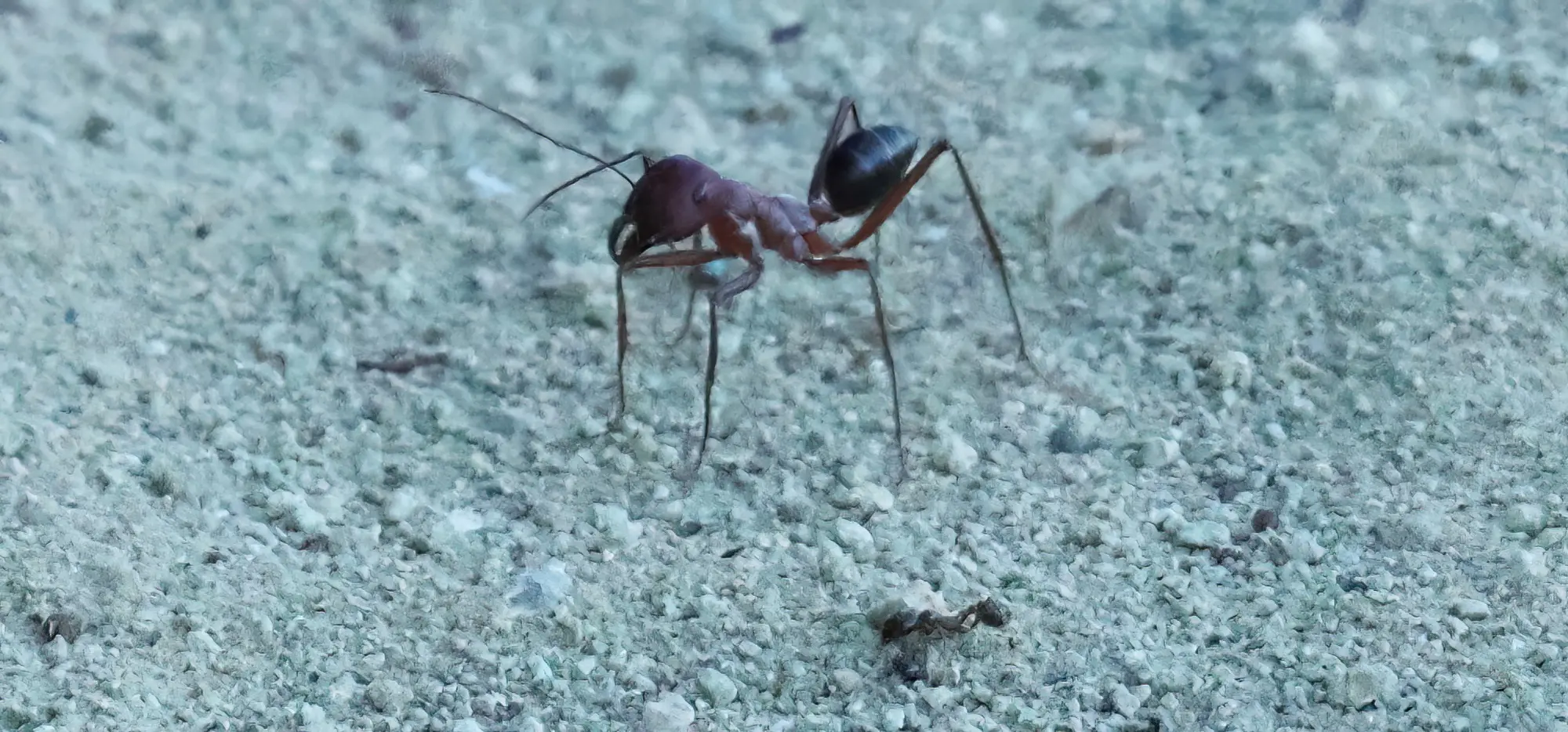
Cataglyphis nodus
A huge major worker (~18mm) standing guard at the entrance of the anthill, and a minor worker of a Myrmicinae species (Messor or Tetramorium) at its feets. |
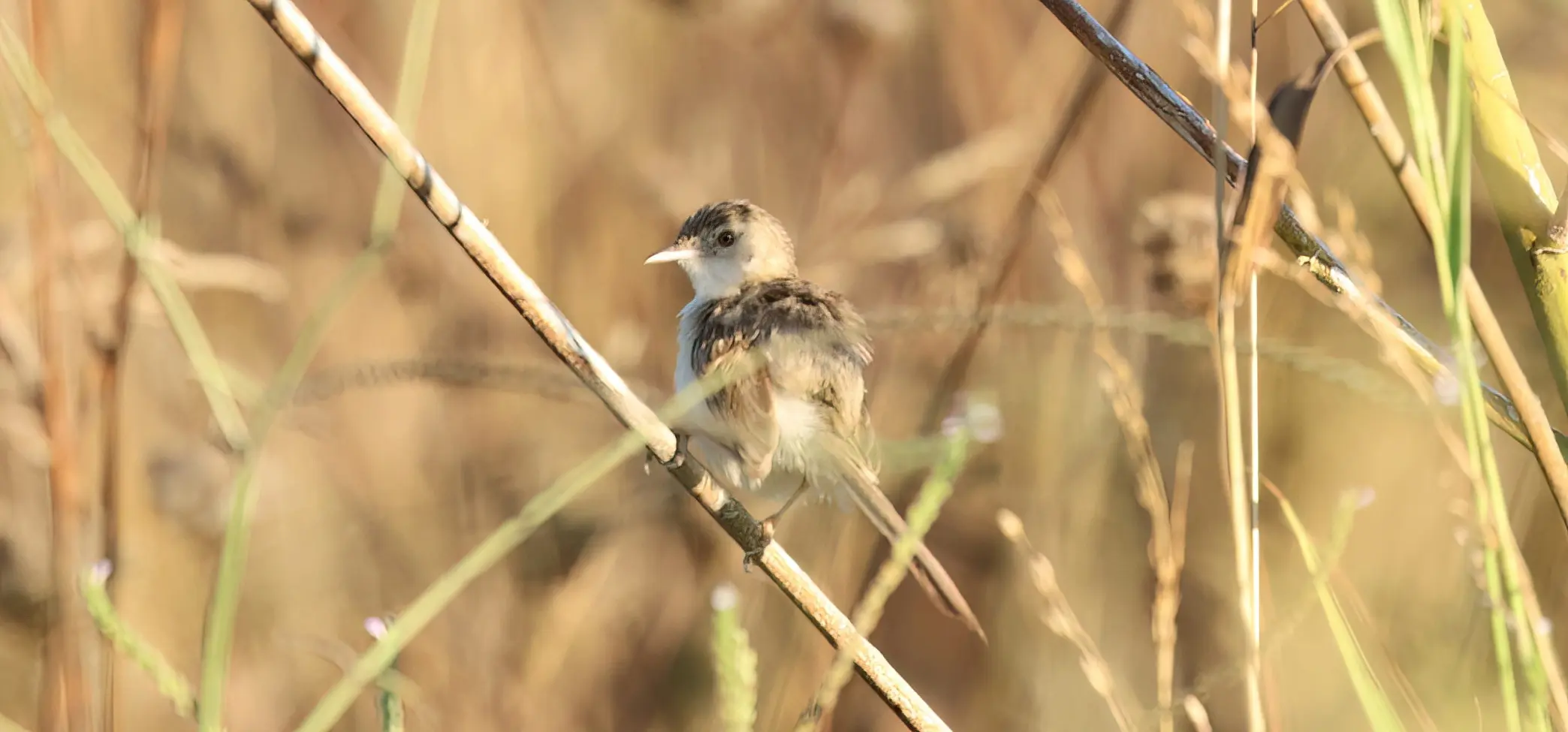
Prinia lepida akyildizi
 Delicate Prinia
Delicate Prinia
 Asya dik kuyruklu ötleğeni
Asya dik kuyruklu ötleğeni ![]()
 csinos prínia
csinos prínia
Prinia lepida akyildizi -  Delicate Prinia
Delicate Prinia 
![]() Asya dik kuyruklu ötleğeni
Asya dik kuyruklu ötleğeni  csinos prínia
csinos prínia
(weedy area, Tilkiler Cd., Çolaklı, Side)
● Contrary to the bar chart data of eBird for this region, I only saw two prinias in the village on a weedy vacant lot.
● August is perhaps the worst month for birding here, that was probably the reason.
● Delicate Prinia is a recently split species from Graceful Prinia (P. gracilis), they don't share distribution ranges and have many differences: source.
● Prinias also resemble Zitting Cisticola (Cisticola juncidis juncidis) and they live in the same habitat (tall grass, low bushes) and ranges. But also differs from it in some main field markers: prinias are smaller, prinias have much longer tail and have less streaked upperparts. Vocally they are also different.
● The most common warbler in this half-rural half-urban habitat was the Eastern Olivaceous Warbler (Iduna pallida eleaica). Being a hiding bird, it caused many trouble at first, but later it was easily recognized by its characteristic call and by the way it pumps its tail up and down. In most cases it just calls from a thicket and cannot be seen, eBird describes this sound like a 'dry and harsh chack'. None of them sang at all.
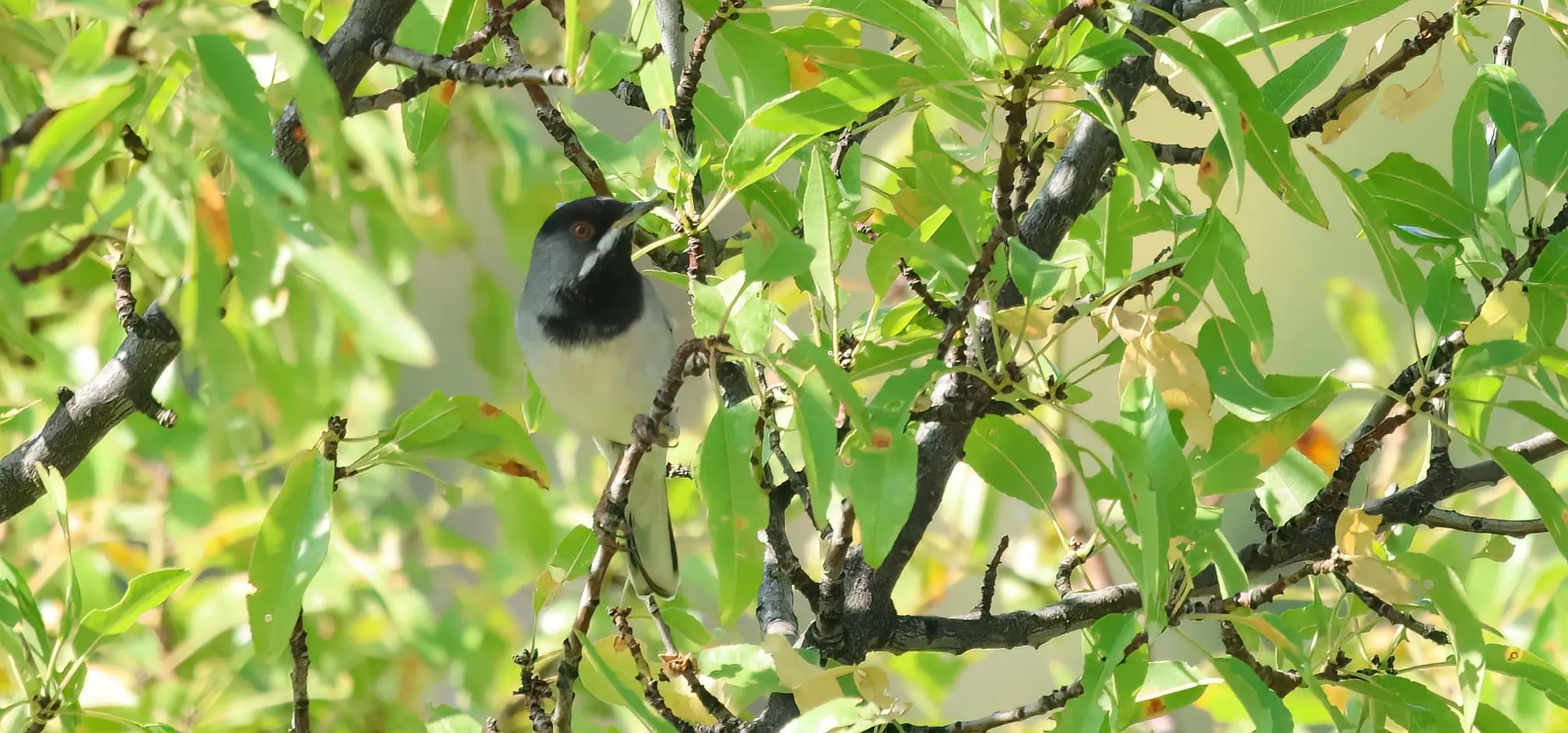
Curruca ruppeli.
 Rüppel's Warbler
Rüppel's Warbler
 Karaboğazlı ötleğen
Karaboğazlı ötleğen ![]()
 feketetorkú poszáta
feketetorkú poszáta
Curruca ruppeli. -  Rüppel's Warbler
Rüppel's Warbler 
![]() Karaboğazlı ötleğen
Karaboğazlı ötleğen  feketetorkú poszáta
feketetorkú poszáta![]()
(groves near an old cemetery, 1230 m, Çimiköy Köyü Yolu, Akseki region)
● In the hotspot of the Olive-tree Warbler (Hippolais olivetorum.) (olívgeze), what we didn't find. August is a late month for this bird here too. Other nice warblers were still moving in the bushes.
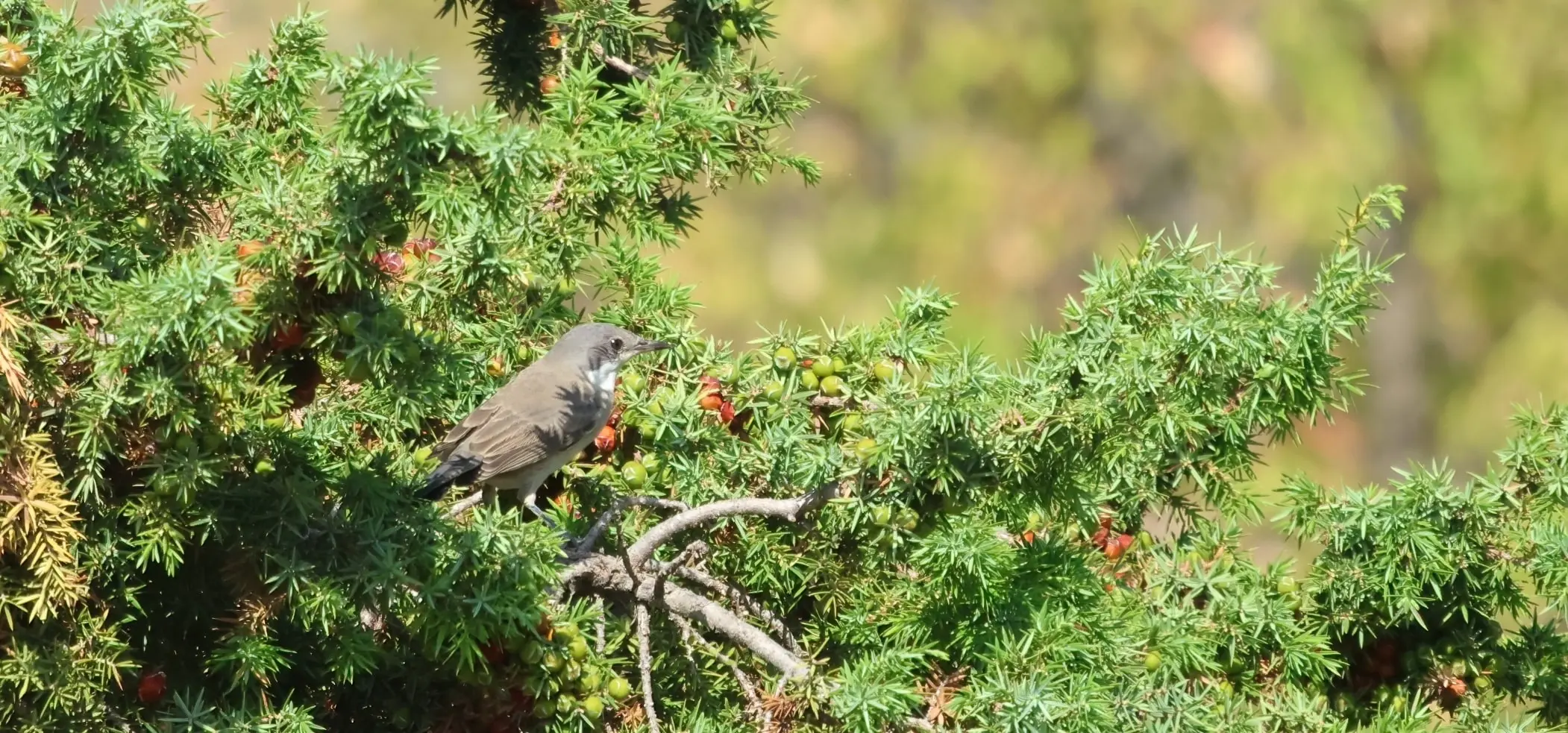
● An Eastern Orphean Warbler (Curruca crassirostris crassirostris) was also in this habitat. (![]() ) ➤
) ➤
● A few Greenfinches, Willow Warblers, Lesser Whitethroats and a Striated Flycatcher were also seen in this grove.
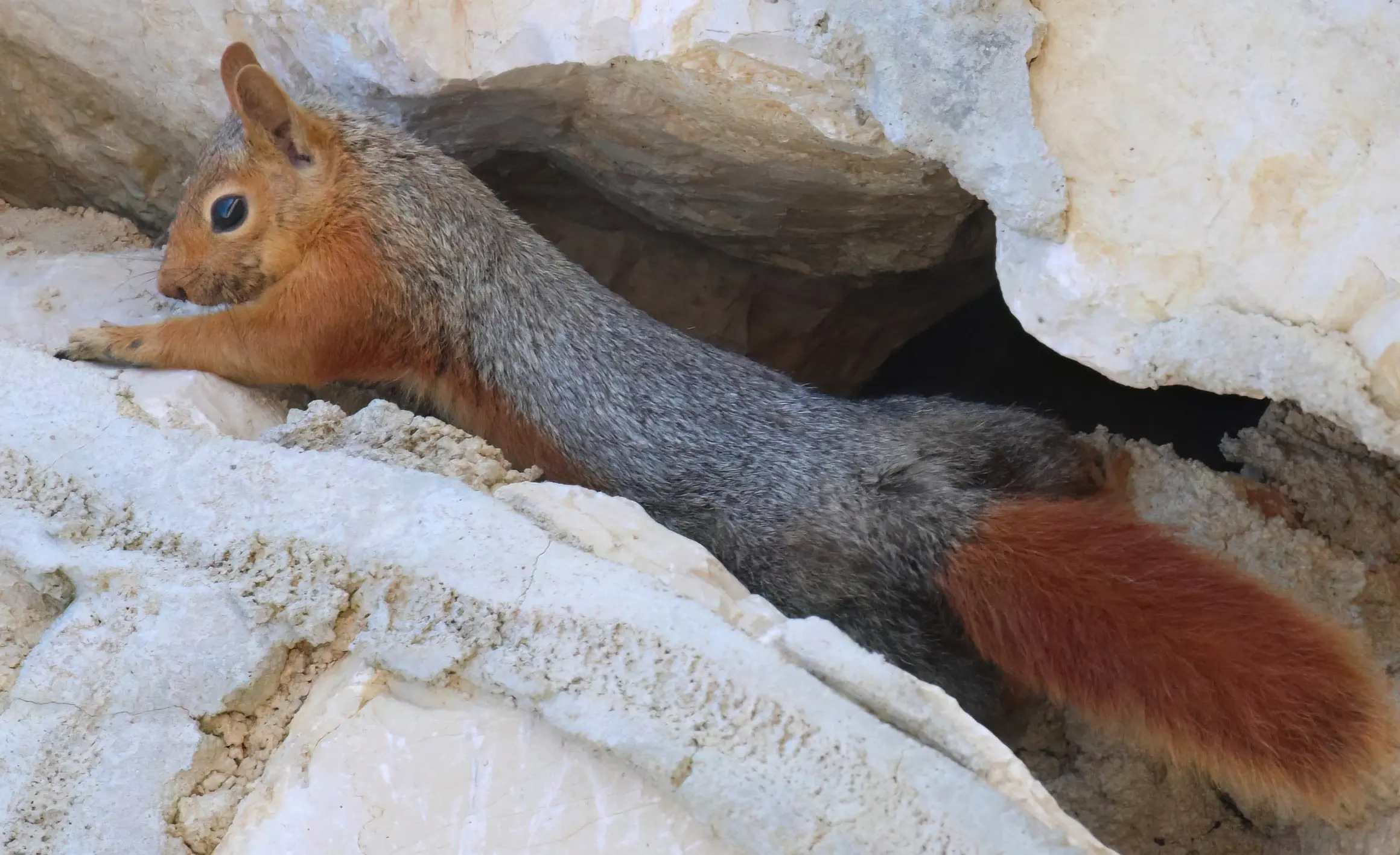
Sciurus anomalus anomalus
 Caucasian Squirrel
Caucasian Squirrel
 Anadolu sincabı
Anadolu sincabı ![]()
 perzsa mókus
perzsa mókus
Sciurus anomalus anomalus -  Caucasian Squirrel
Caucasian Squirrel 
![]() Anadolu sincabı
Anadolu sincabı  perzsa mókus
perzsa mókus
(motorway retaining wall, 1020 m, D687 junction, Başlar)
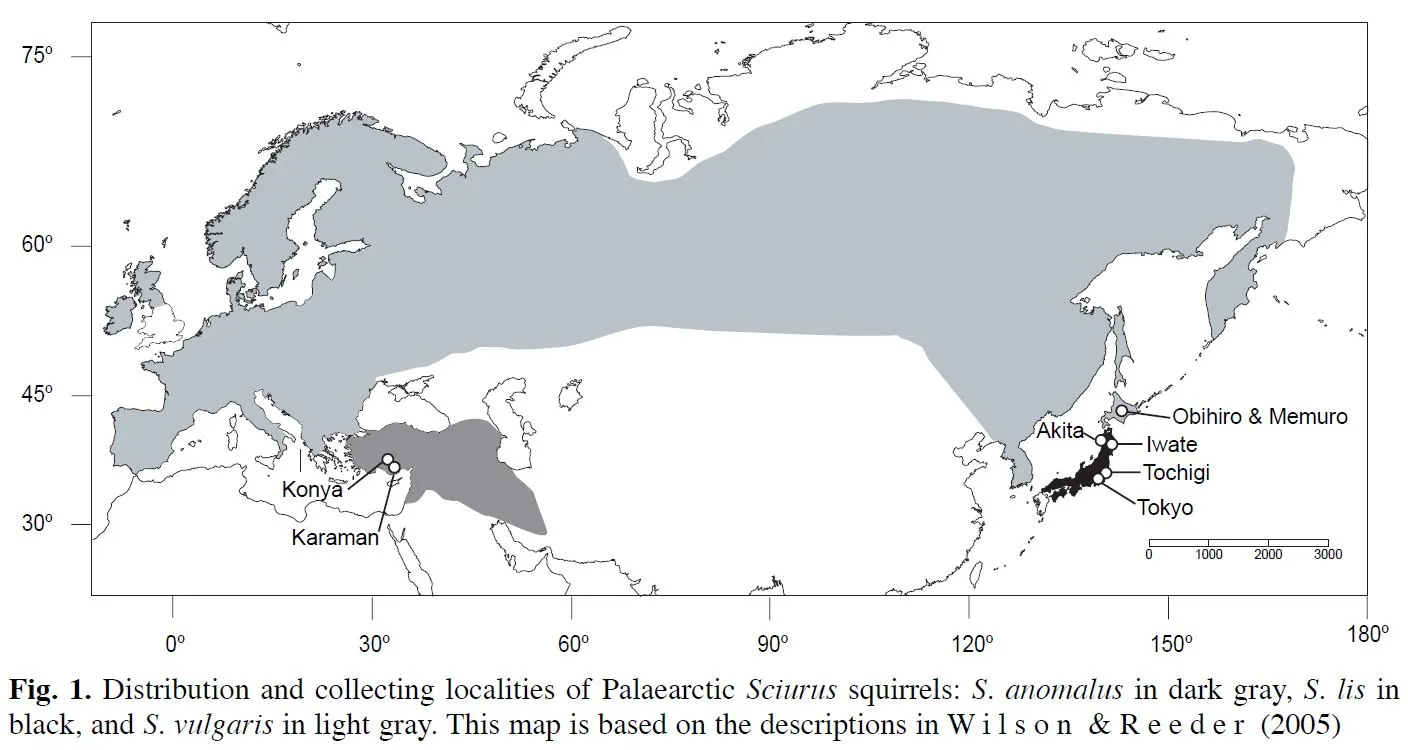
● A grey mantle, a shorter tail, no ear tufts (mostly), a yellowish-reddish belly, not white, are the main distinctive markers. And it also has a slightly different dental formula.
● This is a rotated image to fit the page, that's why the reflection in its eye is slanted.
● Squirrel map: source ➤
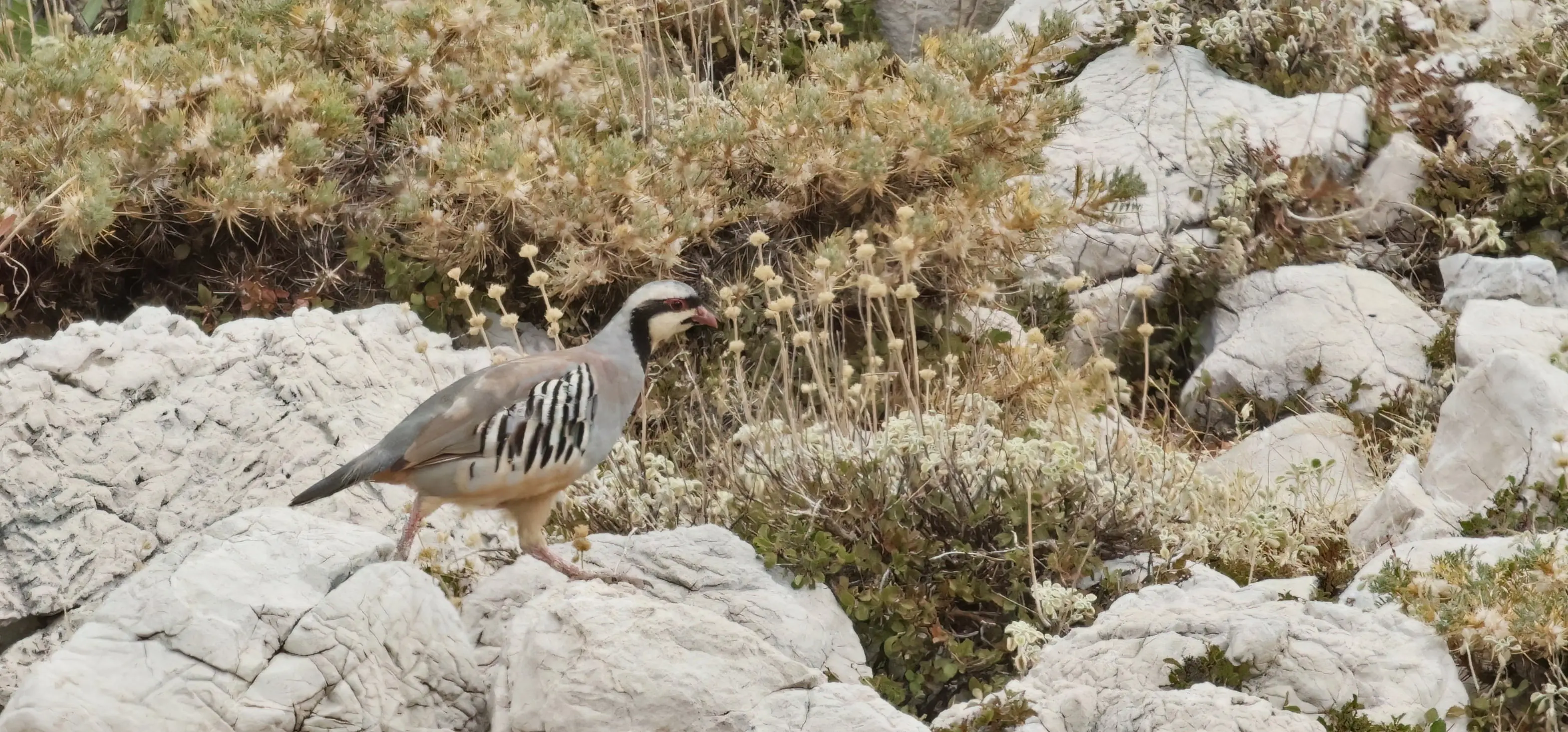
Alectoris chukar cypriotes
 Chukar
Chukar
 Kınalı keklik
Kınalı keklik ![]()
 csukár
csukár
Alectoris chukar cypriotes -  Chukar
Chukar 
![]() Kınalı keklik
Kınalı keklik  csukár
csukár![]()
(mountain well, 1960 m, Çimiköy Köyü Yolu, Akseki region)
● A whole family (officially known as covey) of Chukars, mostly juveniles, came to quench their thirst from the remote mountain well, but in the end they didn't dare to come closer to our car-hide.
● They were quite common in the mountains everywhere. The guide said it's a very good year for Chukars, he saw a remarkably number of them everywhere.
● The distribution area of the ssp cypriotes extends from Crete to E-Türkiye, including Cyprus. The nominate lives in the far Central Aisa.
● Caspian Snowcock (Tetraogallus caspius) and Black Francolin (Francolinus francolinus) are not possible in the Akseki region.
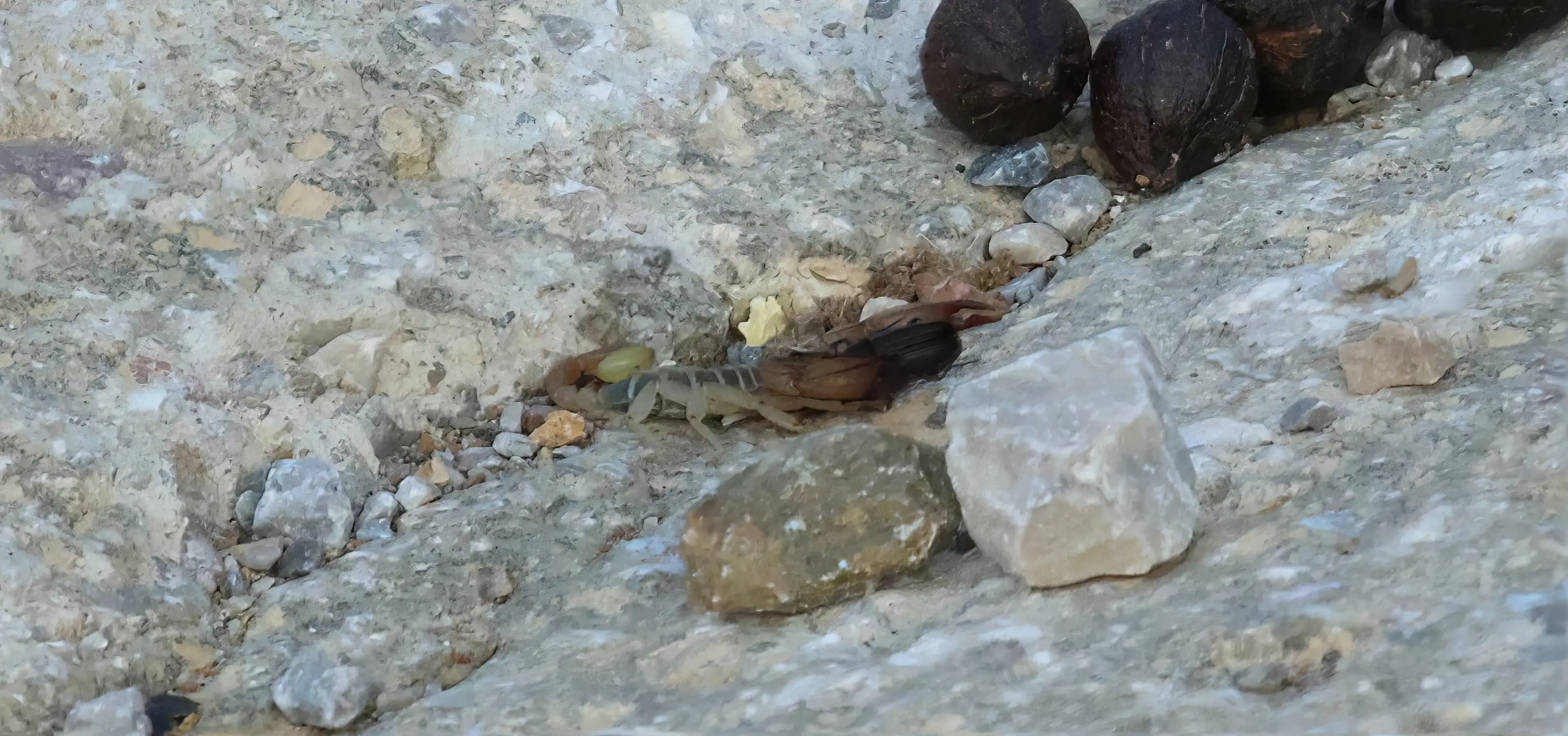
Iurus (dufoureius) asiaticus sensu lato
 [Mediterranean Scorpion]
[Mediterranean Scorpion]
 Akdeniz akrebi
Akdeniz akrebi ![]()
 [mediterrán skorpió]
[mediterrán skorpió]
Iurus (dufoureius) asiaticus sensu lato -  [Mediterranean Scorpion]
[Mediterranean Scorpion] 
![]() Akdeniz akrebi
Akdeniz akrebi  [mediterrán skorpió]
[mediterrán skorpió]![]()
(curb of a motorway, 850 m, D687, near Başlar)
● We found it half under a rock on the side of the road, just eating a beetle for breakfast.
● Most scorpions avoid humid habitats. This species lives in wooded areas too, this specimen was found at the bottom of a mountain slope with a subalpine dwarf pine scrub habitat.
● The genus can be identified by the large inner tooth on the lower moveable part of pedipalp. Endemic to the area. Source1, Source2.
● Its sting is painful but not dangerous or fatal. However, Mehmet, the bird guide, was quite afraid of it.
● The species has no English and Hungarian name, names above are just simple direct translations from the Turkish name.
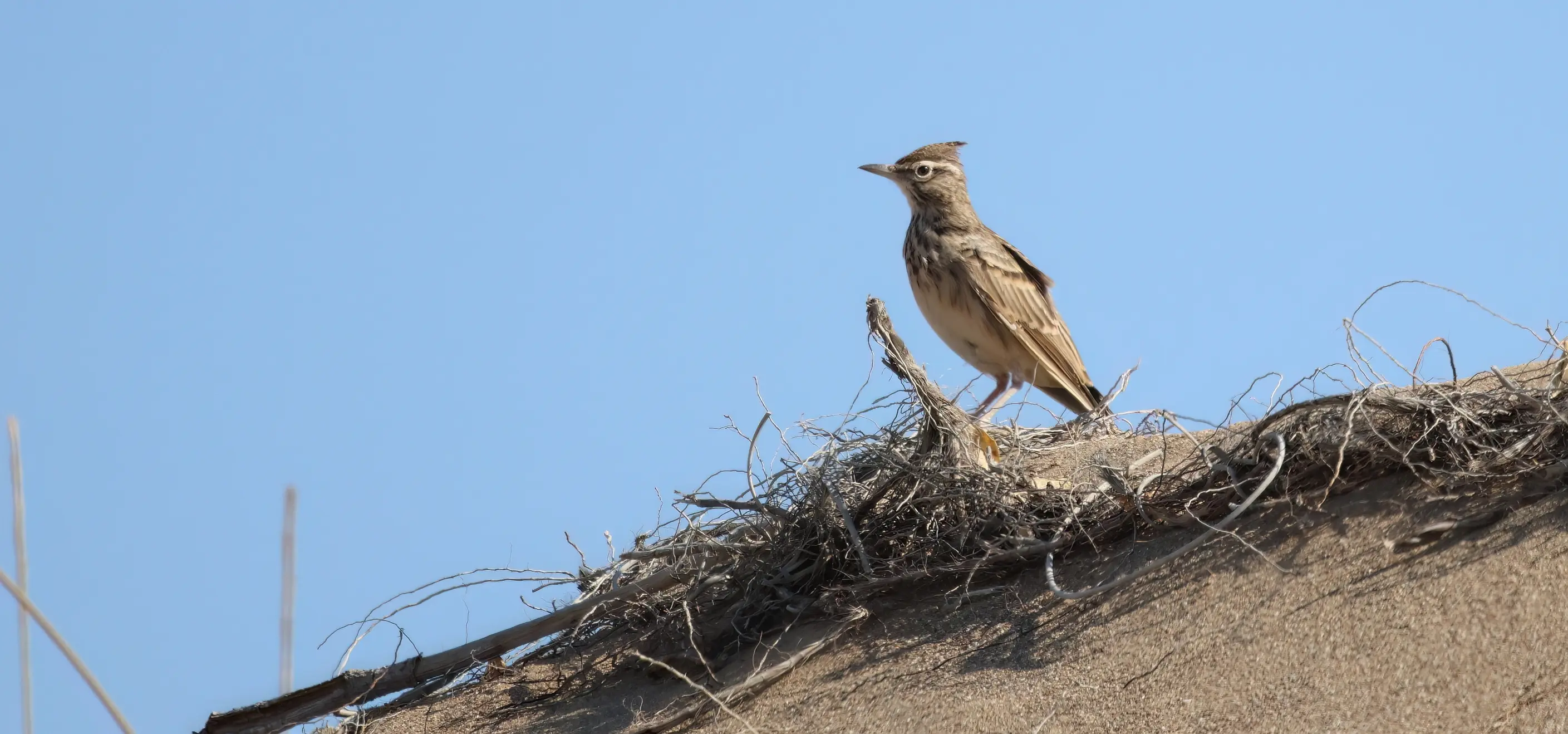
Galerida cristata subtaurica
Antik Side, Hippodrome More coffee-brownish tinge, less pronounced white collar. |
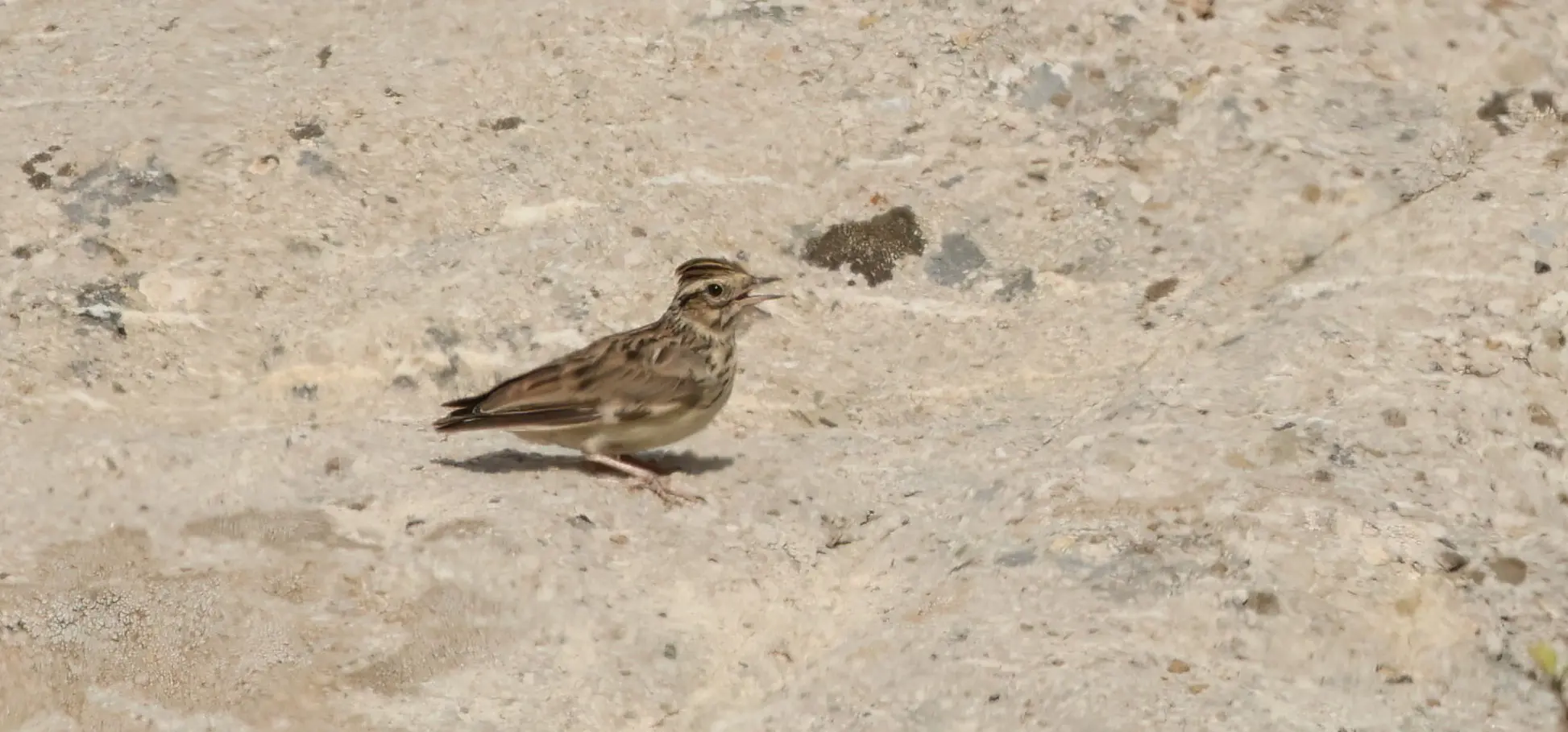
Lullula arborea pallida
Paler, less colorful everywhere, less buff colors below. |
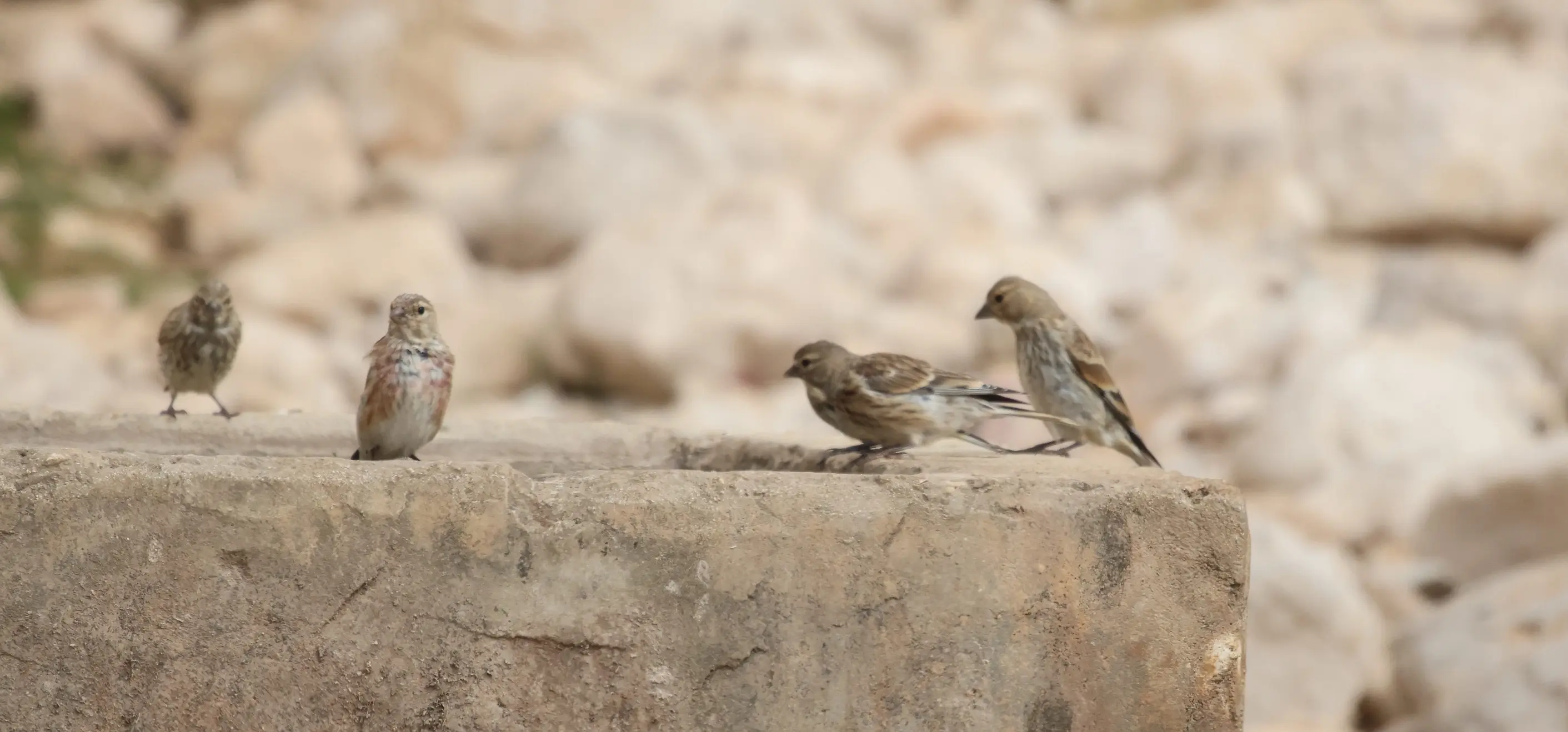
Linaria cannabina mediterranea
Paler, less colorful (breast is less pinkinsh and more purplish), shorter wing, slender bill. |
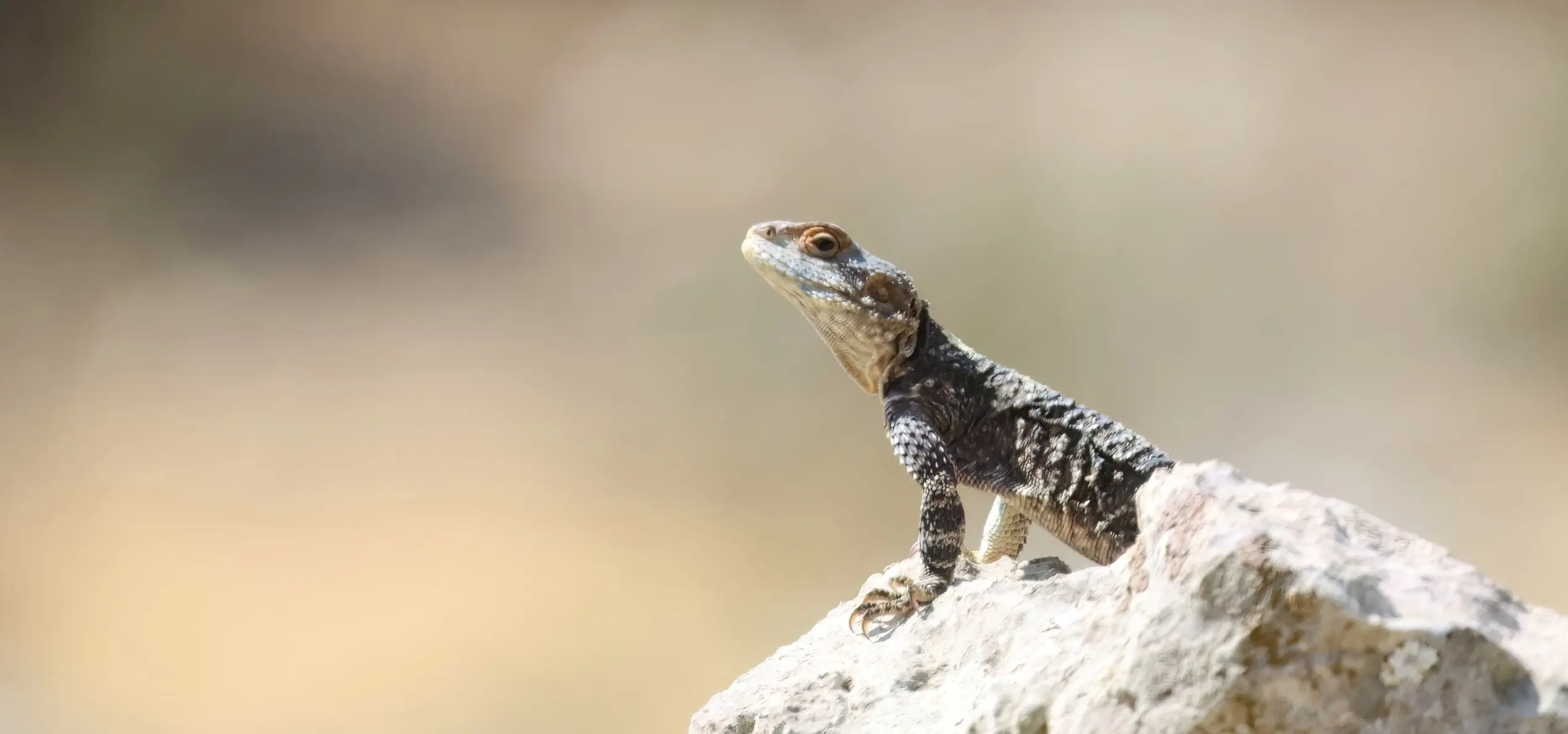
Laudakia stellio
 Hardun / Rough-tailed Rock Agama
Hardun / Rough-tailed Rock Agama
 Dikenli keler
Dikenli keler ![]()
 Hardun-agáma / csillagos agáma
Hardun-agáma / csillagos agáma
Laudakia stellio -  Hardun / Rough-tailed Rock Agama
Hardun / Rough-tailed Rock Agama 
![]() Dikenli keler
Dikenli keler  Hardun-agáma / csillagos agáma
Hardun-agáma / csillagos agáma
(roadside slope, 1360 m, Çimiköy Köyü Yolu, Akseki region)
● In one of the possible hotspots of one of our main target bird species, the White-throated Robin (Irania guttularis), which was still present a few weeks ago, but unfortunately no longer this year. August was too late again.
● Hardun Agama has two parallel subspecies in the region. Laudakia stellio daanii is the more common. The easiest way to differentiate them is the color contrast of the head and the body (source). Light head and dark body is L. stellio stellio. Dark head and dark body is L. stellio daanii. Other properties require much closer (in hand) examination.
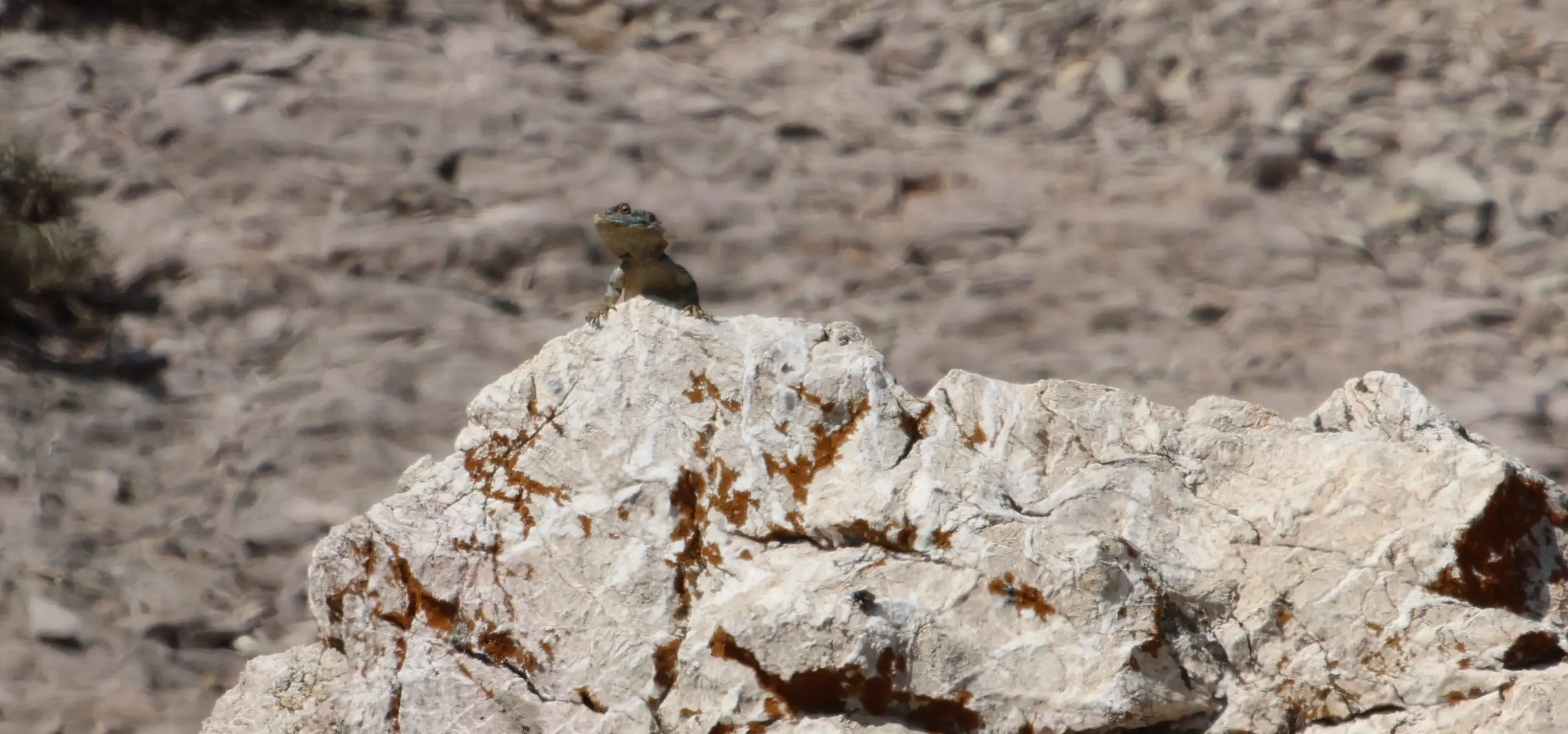
● According to the identification key written in the source linked above, I think the big image above is the rarer L stellio stellio, the lesser one to the right here is the L. stellio daanii. (However, I found many conflicting photos of these taxa on the net.) ➤
● Large adults can be 30-40 cm long, they are mainly insectivorous and the males are territorial.

● Along the main road between Çolaklı and the hotel zone at the sea (Tilkiler Cd.) I found some young lizards simply sunbathing on the curb stones. Identification of juveniles is really not my level, but I presume these should be the more common subspecies, L. stellio daanii. ➤
● Any comments or suggestions for corrections would be greatly appreciated.
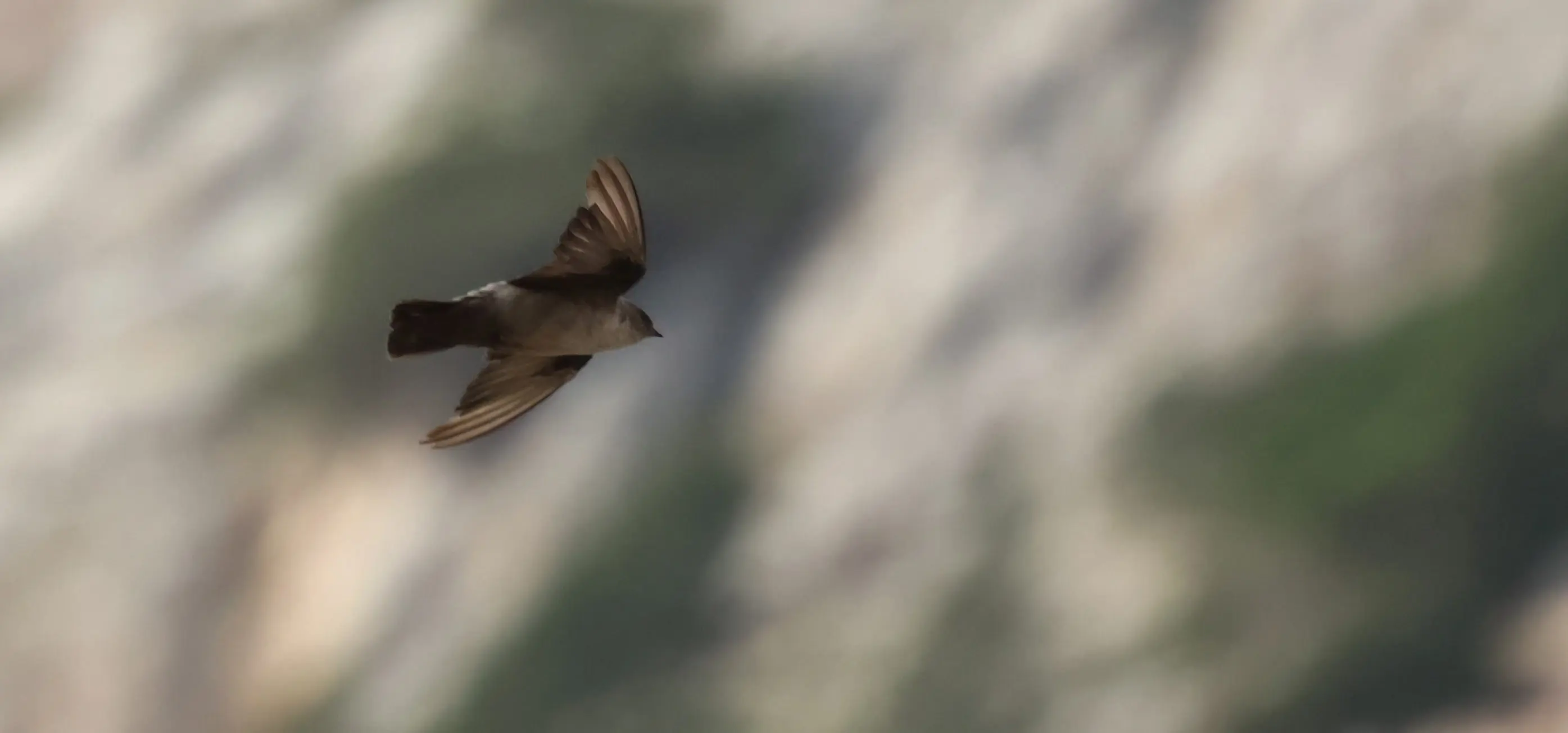
Ptyonoprogne rupestris.
 Eurasian Crag Martin
Eurasian Crag Martin
 Kaya kırlangıcı
Kaya kırlangıcı ![]()
 szirtifecske
szirtifecske
Ptyonoprogne rupestris. -  Eurasian Crag Martin
Eurasian Crag Martin 
![]() Kaya kırlangıcı
Kaya kırlangıcı  szirtifecske
szirtifecske
(mountain village, 1760 m, Çimiköy Köyü Yolu, Akseki region)
● Only a few them.
● The first one at a remote mountain village, it was sitting on an electric panel box of a little house. Sometimes it made some circles but always turned back to its personal lookout point.
● The second one was hunting over an Irania hotspot (shrubs, rocks, slopes, ~1500m altitude) in the late afternoon.
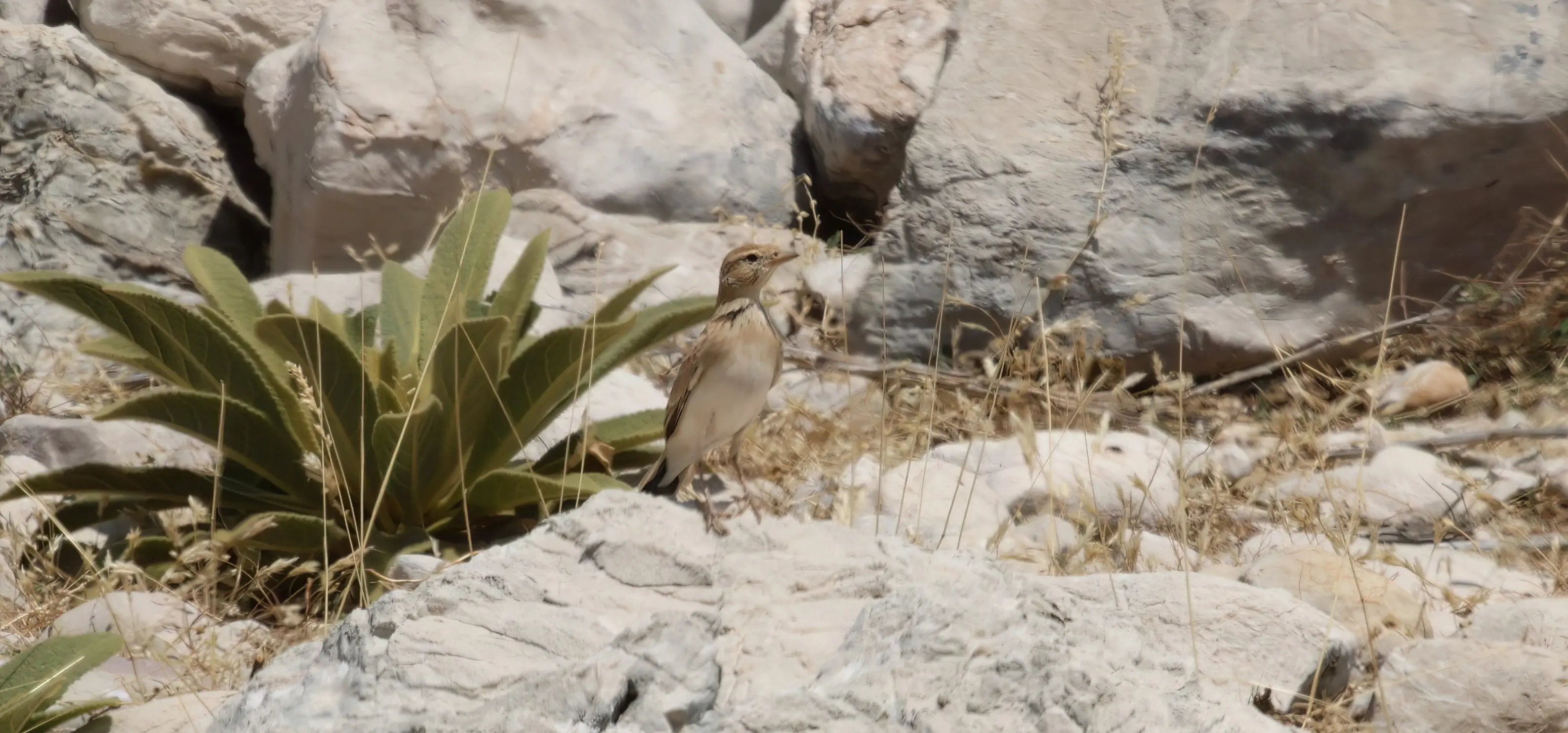
Calandrella brachydactyla (artemisiana)
 Greater Short-toed Lark
Greater Short-toed Lark
 Bozkır toygarı
Bozkır toygarı ![]()
 szikipacsirta
szikipacsirta
Calandrella brachydactyla (artemisiana) -  Greater Short-toed Lark
Greater Short-toed Lark 
![]() Bozkır toygarı
Bozkır toygarı  szikipacsirta
szikipacsirta![]()
(hillside at mountain village, 1760 m, Çimiköy Köyü Yolu, Akseki region)
● Half collar on both sides, large bill.
● Only a few birds in a small group at the small mountain village. They were quite shy, and they preferred the trick of running on ground and hiding behind bushes or rocks.
● I'm not sure of the subspecies here as the descriptions of the distribution ranges are conflicting in different sources. Most probably ssp artemisiana lives in Central- and S-Türkiye, Caucasus, Iraq and Iran. The other option, ssp woltersi, is in NW-Syria and SE-Türkiye, this latter has a much more limited area.
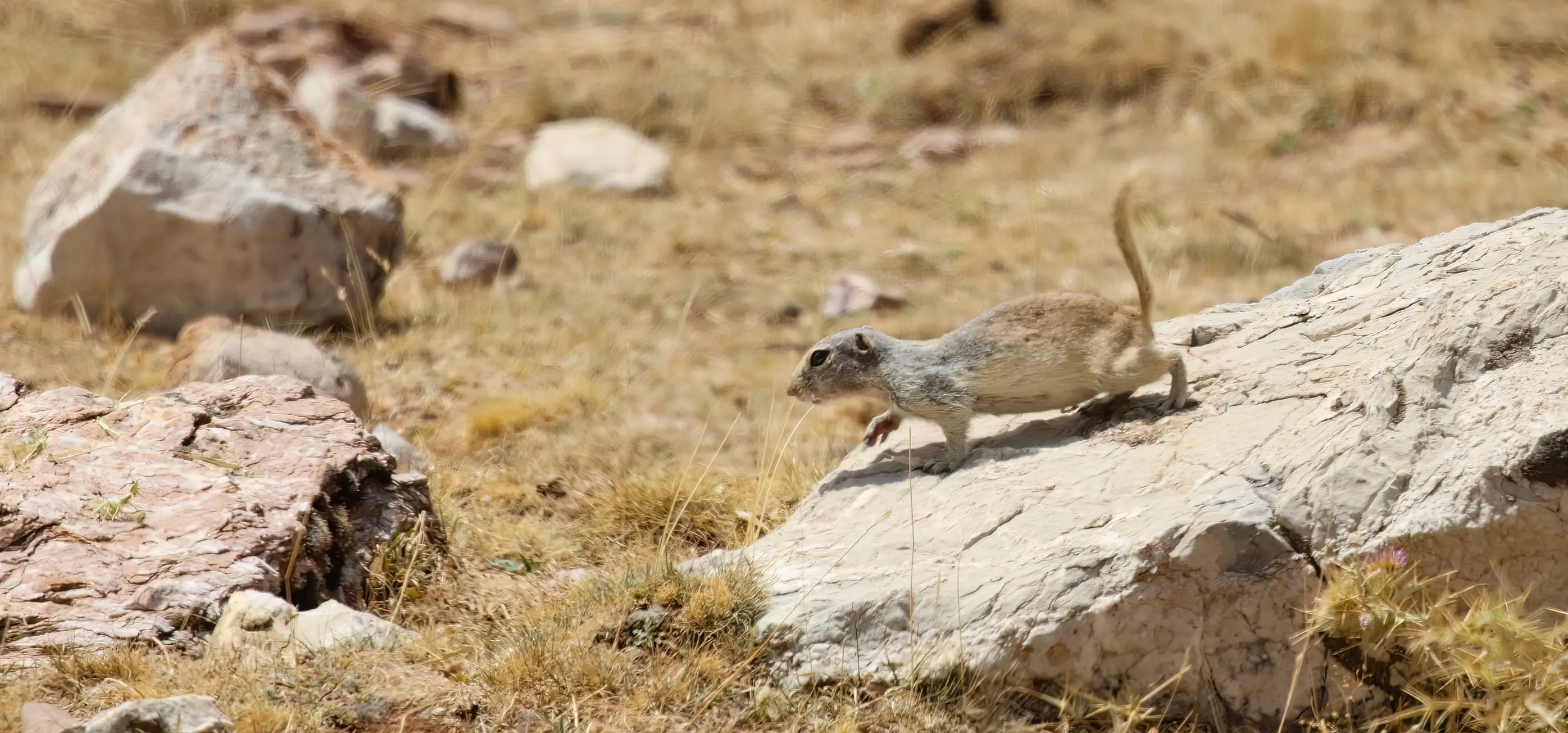
Spermophilus taurensis
 Taurus Ground Squirrel
Taurus Ground Squirrel
 Toros gelengisi
Toros gelengisi ![]()
 [Torosz-hegységi ürge]
[Torosz-hegységi ürge]
Spermophilus taurensis -  Taurus Ground Squirrel
Taurus Ground Squirrel 
![]() Toros gelengisi
Toros gelengisi  [Torosz-hegységi ürge]
[Torosz-hegységi ürge]![]()
(plateau, 1720 m, Çimiköy Köyü Yolu, Akseki region)
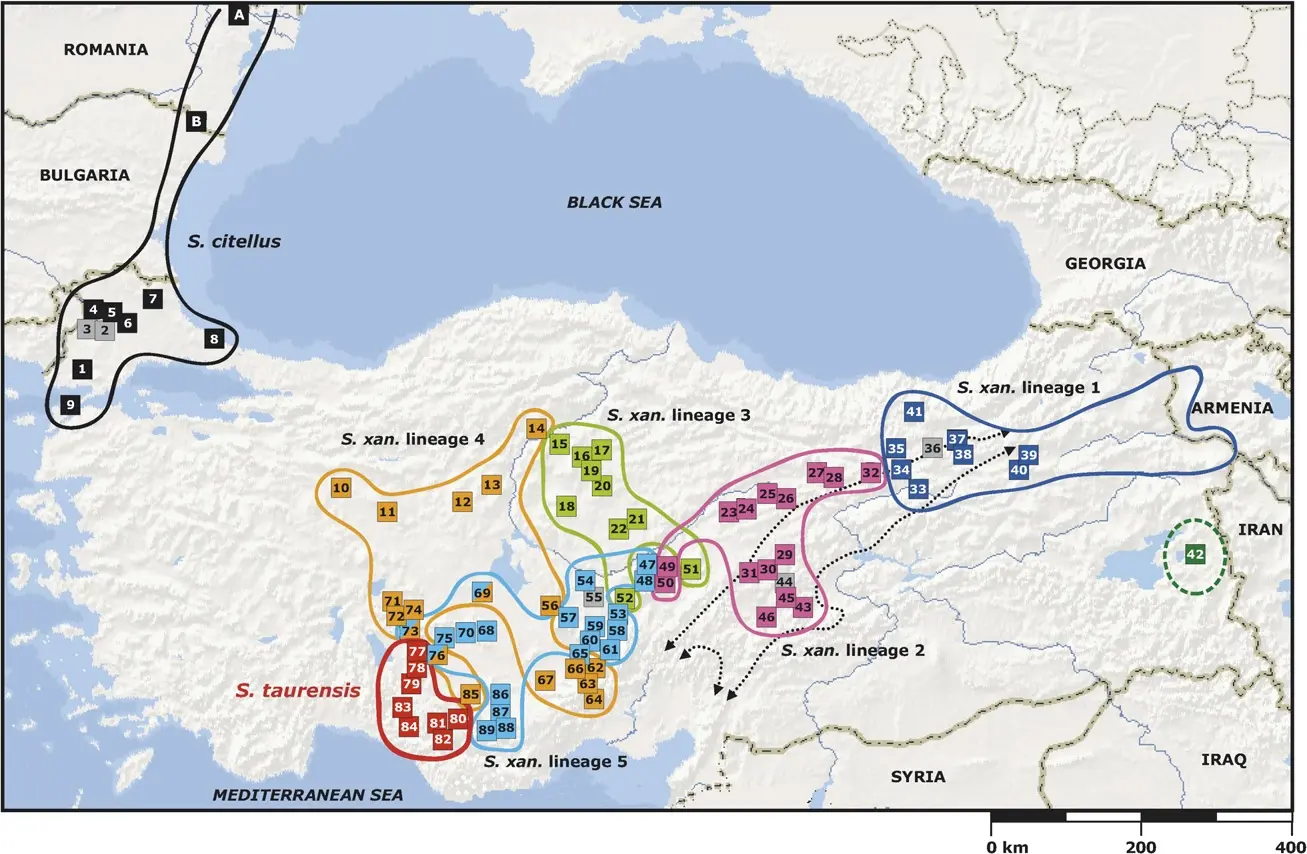
● Endemic to the Taurus Mountains.
● Interestingly, it is more closely related to the common European Ground Squirrel (S. citellus) than to the Anatolian Ground Squirrel (S. xanthoprymnus) which is dominantly distributed in Asia Minor (source). ➤
● This species has no Hungarian name. The name in square brackets above is a direct translation.
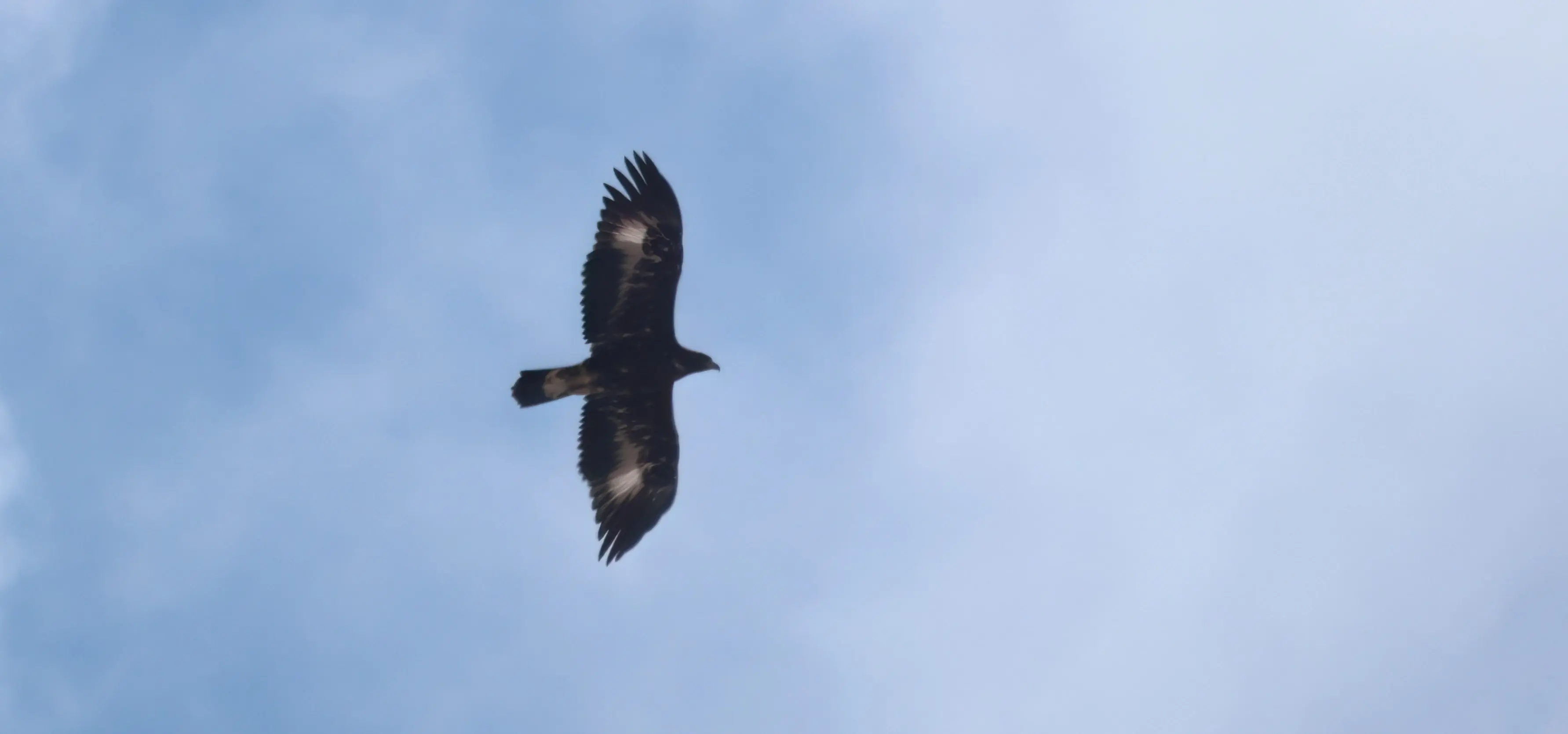
Aquila chrysaetos homeyeri
 Iberian Golden Eagle
Iberian Golden Eagle
 Kaya kartalı
Kaya kartalı ![]()
 déli szirti sas
déli szirti sas
Aquila chrysaetos homeyeri -  Iberian Golden Eagle
Iberian Golden Eagle 
![]() Kaya kartalı
Kaya kartalı  déli szirti sas
déli szirti sas
(plateau, 1750 m, Çimiköy Köyü Yolu, Akseki region)
● A subadult bird, 2-3 CY. The wingspan is about 2 m.
● Two of them made a short circle above us and then disappeared.
● The area and the sky is not always easily and fully visible everywhere due to higher cliffs and surrounding prominent steep peaks around. On the other hand, these terrain conditions provide excelent opportunity for the eagles to make surprise attacks on mountain animals.
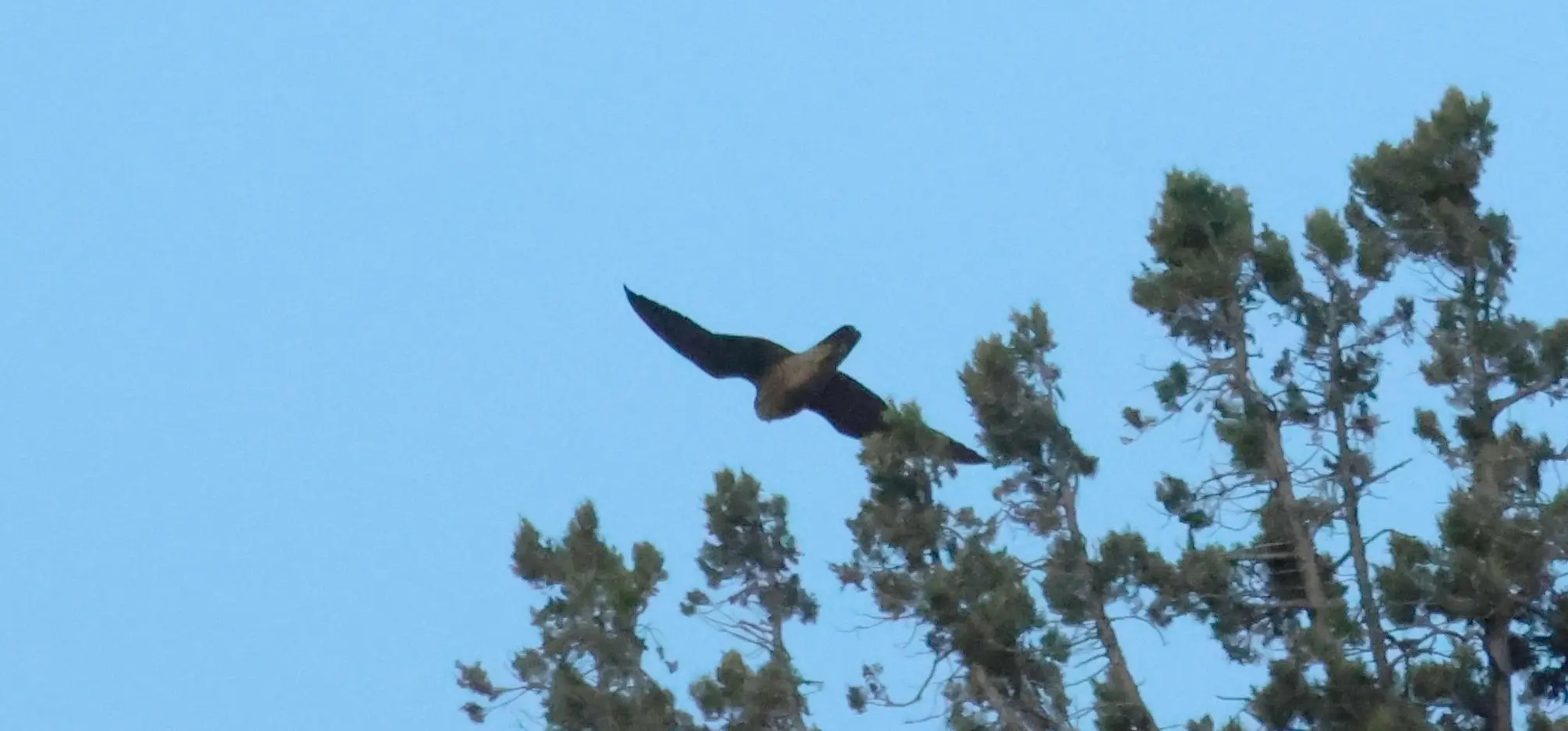
● There were hardly any other birds of prey in the region in these days:
- 1 Common Buzzard (B. buteo buteo) on Çolaklı hill
- 2 Eurasian Sparrowhawks (A. nisus nisus) on the mountain plateau (around flocks of Linnets)
- 1 Mediterranean Peregrine (Maltese Falcon) (F. peregrinus brookei) above the D687 mountain slope, near Başlar (a bad crop of a bad photo, but the rusty breast is visible) ➤
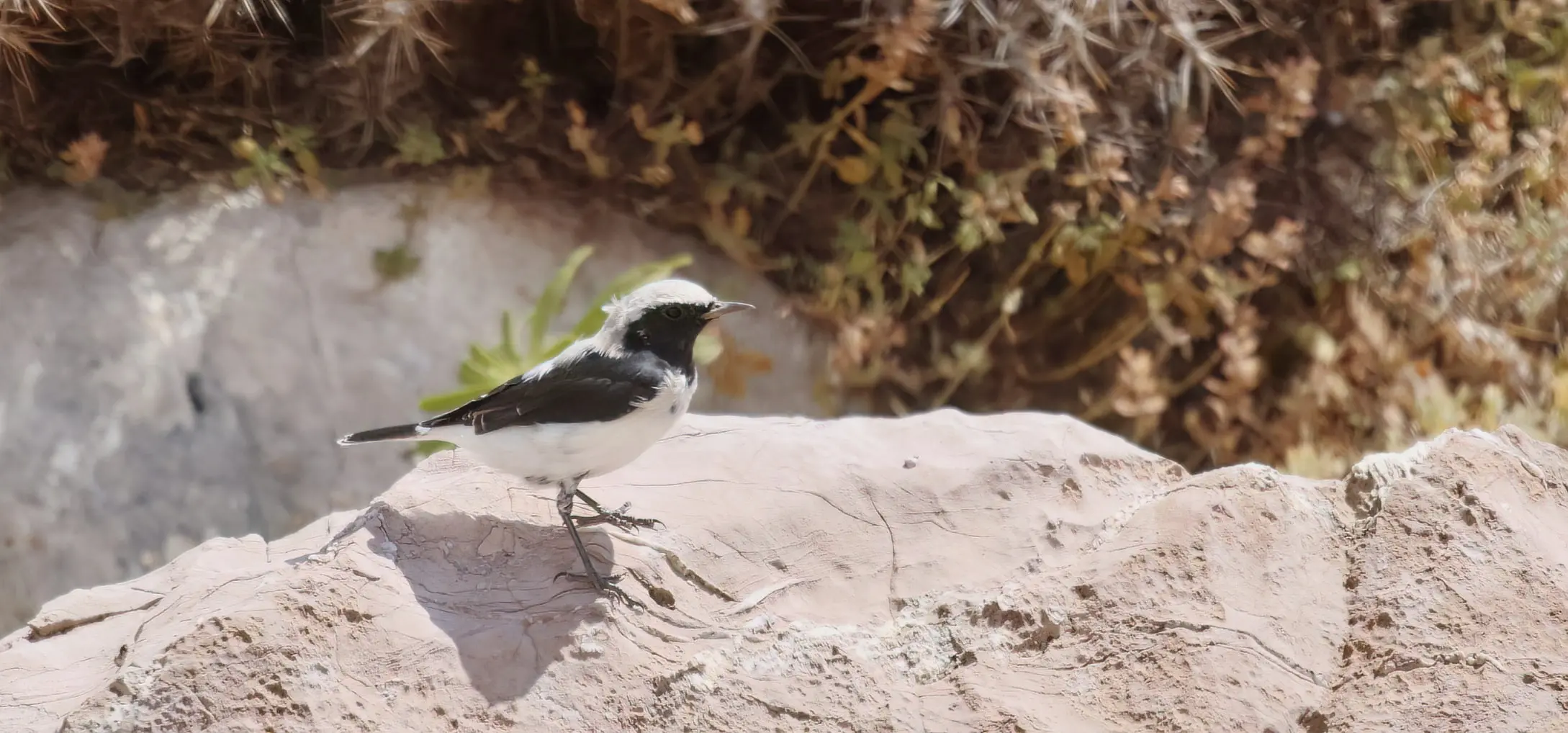
Oenanthe finschii finschii
 Finsch's Wheatear
Finsch's Wheatear
 Ak sırtlı kuyrukkakan
Ak sırtlı kuyrukkakan ![]()
 türk hantmadár
türk hantmadár
Oenanthe finschii finschii -  Finsch's Wheatear
Finsch's Wheatear 
![]() Ak sırtlı kuyrukkakan
Ak sırtlı kuyrukkakan  türk hantmadár
türk hantmadár![]()
(mountain roadside, 1920 m, Çimiköy Köyü Yolu, Akseki region)
● Only a few of them and only on the high altitude hotspot.
● Very similar to some relatives:
- It differs from the Pied Wheatear (O. pleschanka) in its white back, O. pleschanka has a black/brown back.
- It differs from the Eastern Black-eared Wheatear (O. melanoleuca) in its more pronounced black on its throat and in its special habitat. Although, O. melanoleuca has a variable black throat patch. O. finschii has a terminal tail-band evenly narrow, O. melanoleuca has a terminal tail-band wider at the edges. Although I didn't see too much of them, but birds of the race of O. melanoleuca living in this area were much more sandy in color. ➤
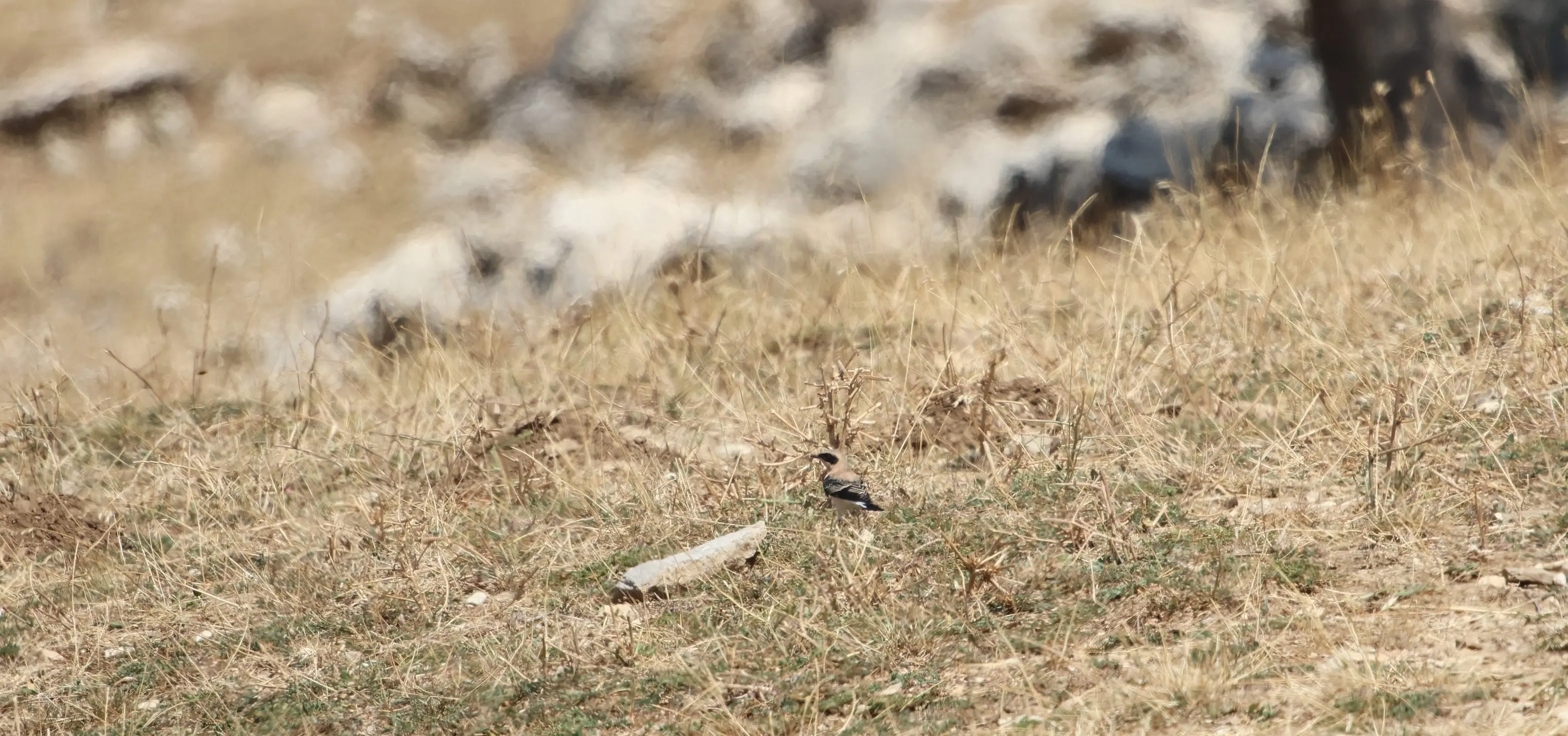
● Eastern Black-eared Wheatear (Oenanthe melanoleuca.) seen also only in small numbers, but at both low and high altitudes. ➤
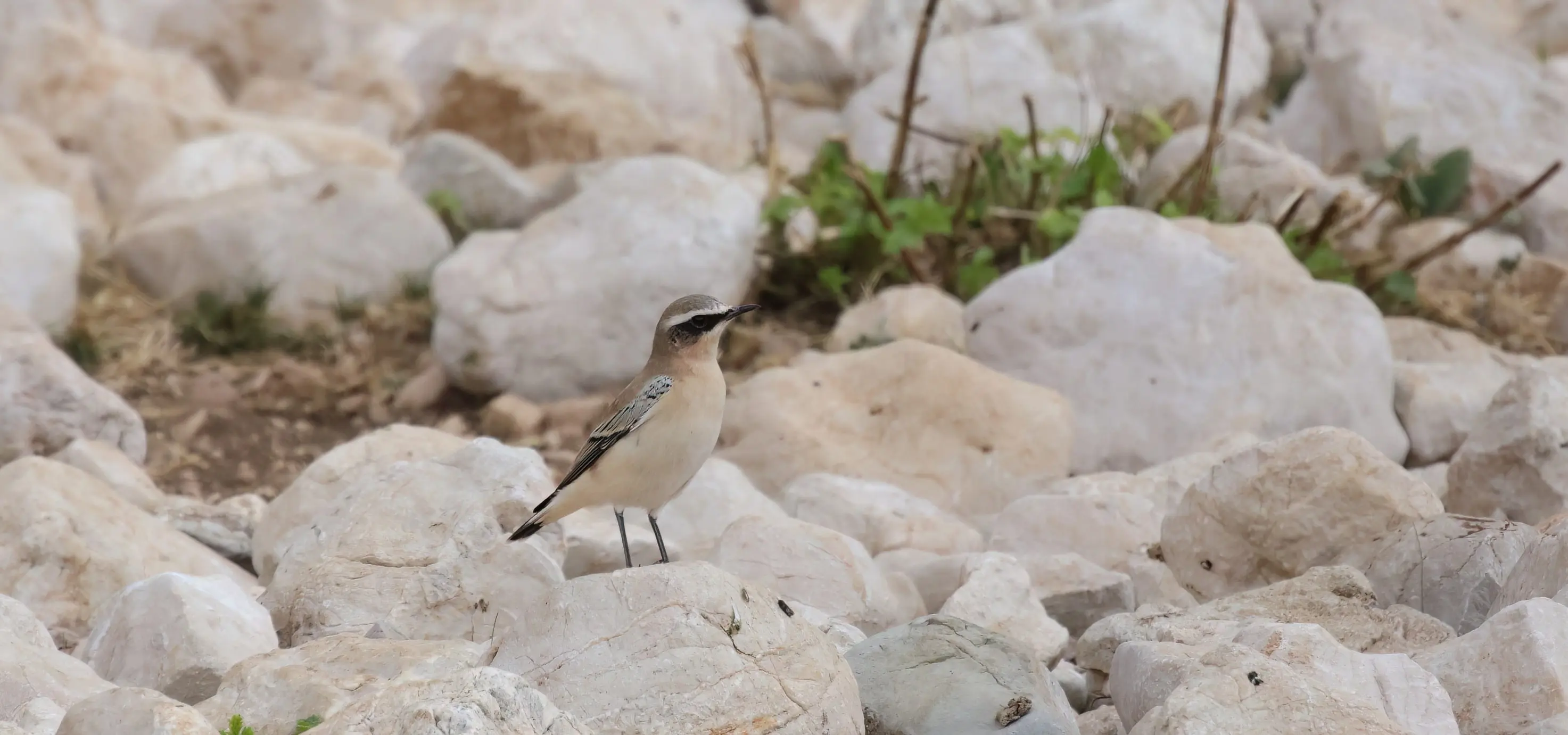
● Southern Northern Wheatear (Oenanthe oenanthe libanotica) is clearly the most common songbird in this region of the Taurus Mountains. They are everywhere, both at lower and higher altitudes. Even in this nonbreeding plumage, which all of them were wearing now, ssp libanotica is paler and has somewhat longer bill than the European nominate. ➤
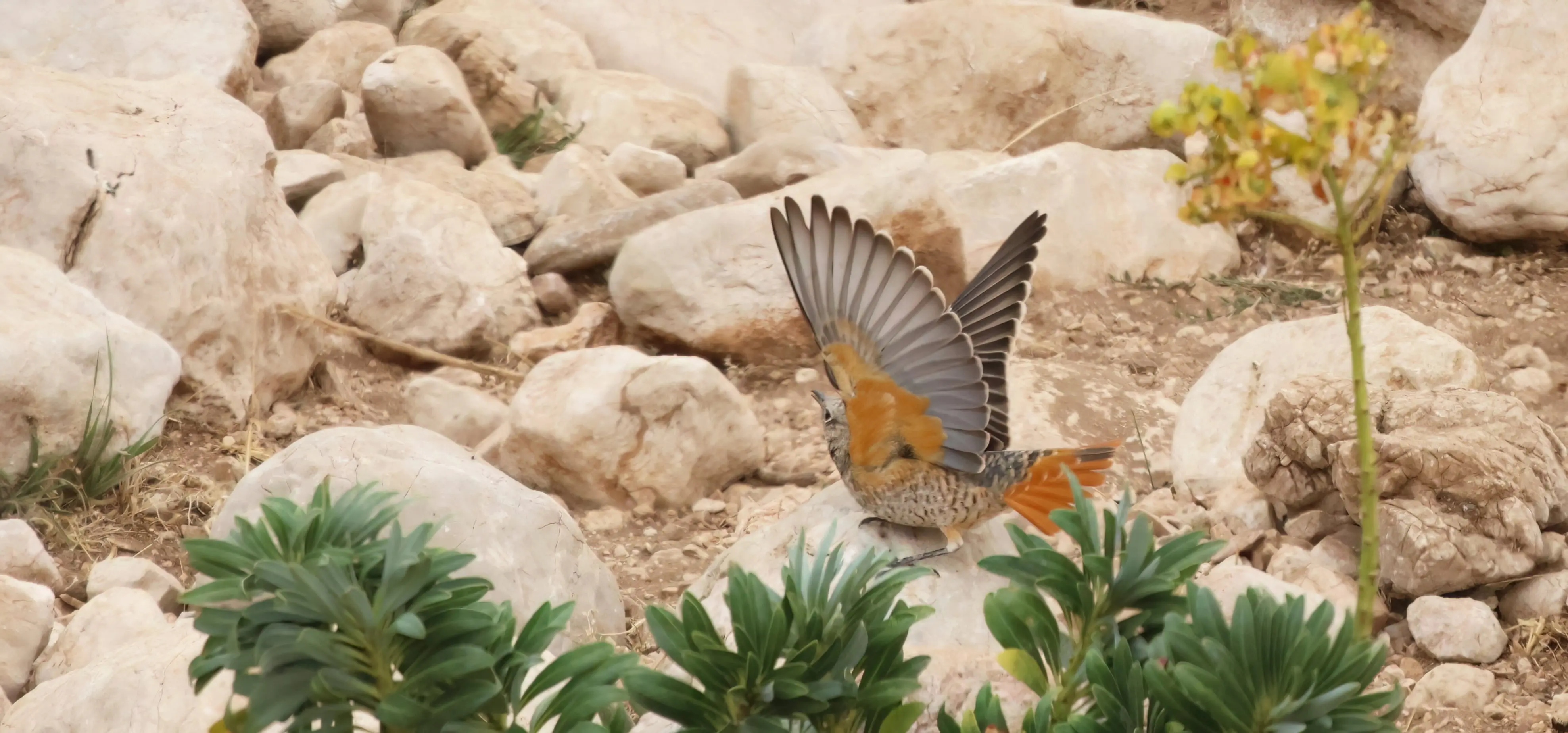
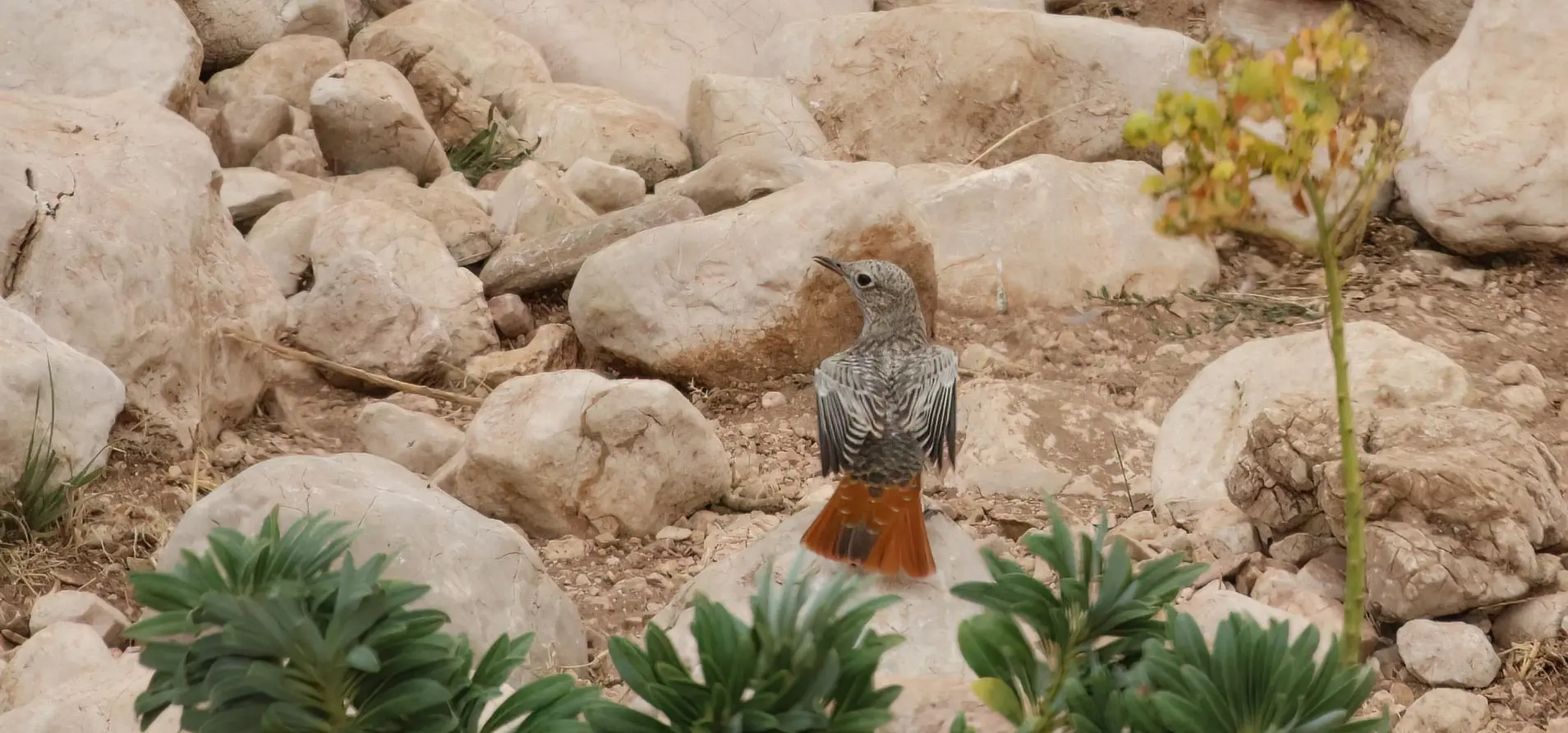
Monticola saxatilis.
 Rufous-tailed Rock Thrush
Rufous-tailed Rock Thrush
 Taşkızılı
Taşkızılı ![]()
 kövirigó
kövirigó
Monticola saxatilis. -  Rufous-tailed Rock Thrush
Rufous-tailed Rock Thrush 
![]() Taşkızılı
Taşkızılı  kövirigó
kövirigó![]()
(mountain well, 1960 m, Çimiköy Köyü Yolu, Akseki region)
● Two beautiful females came to drink to the remote mountain well, the only source of water in a dry and rocky scrubland. The precipitation in the region is almost zero in July and August.
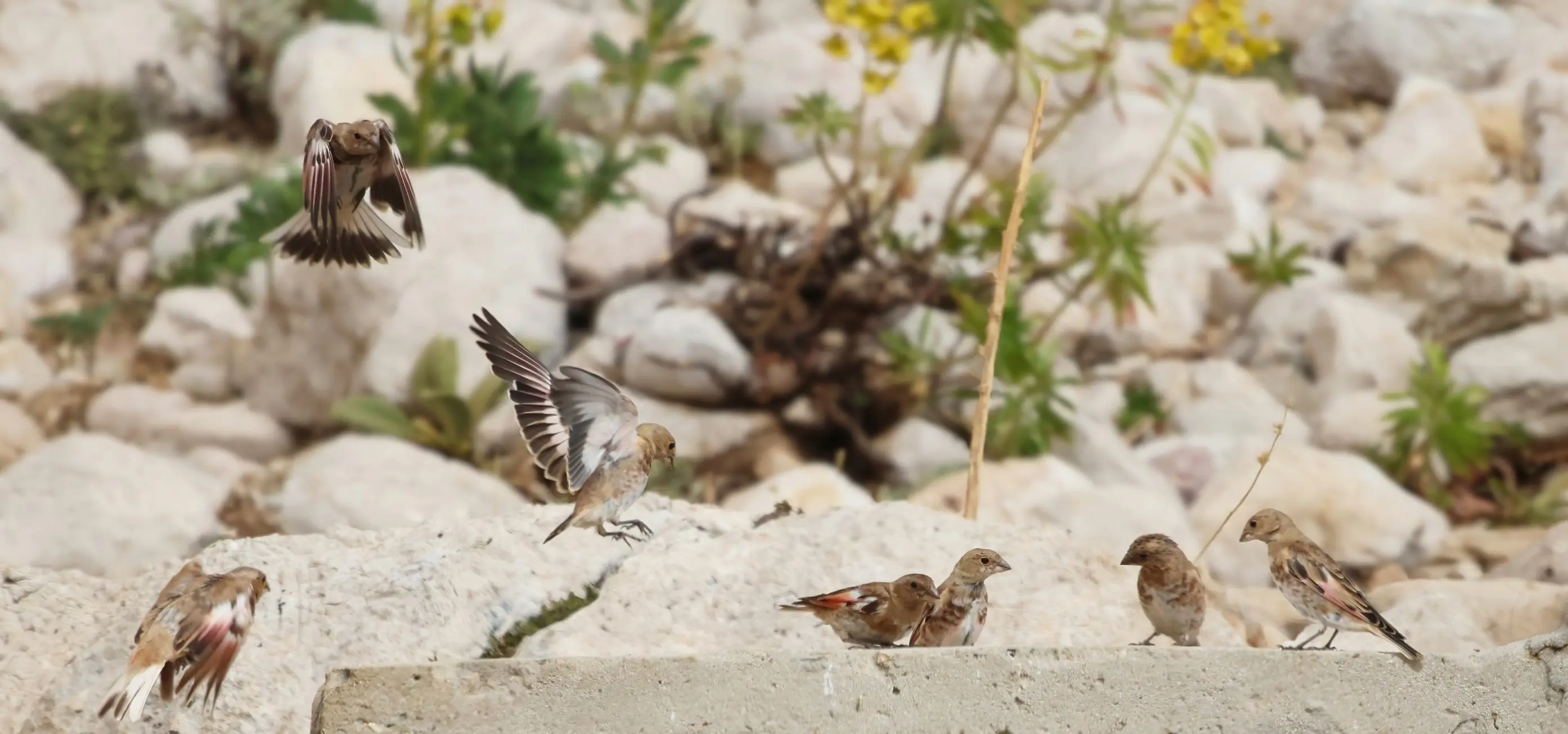
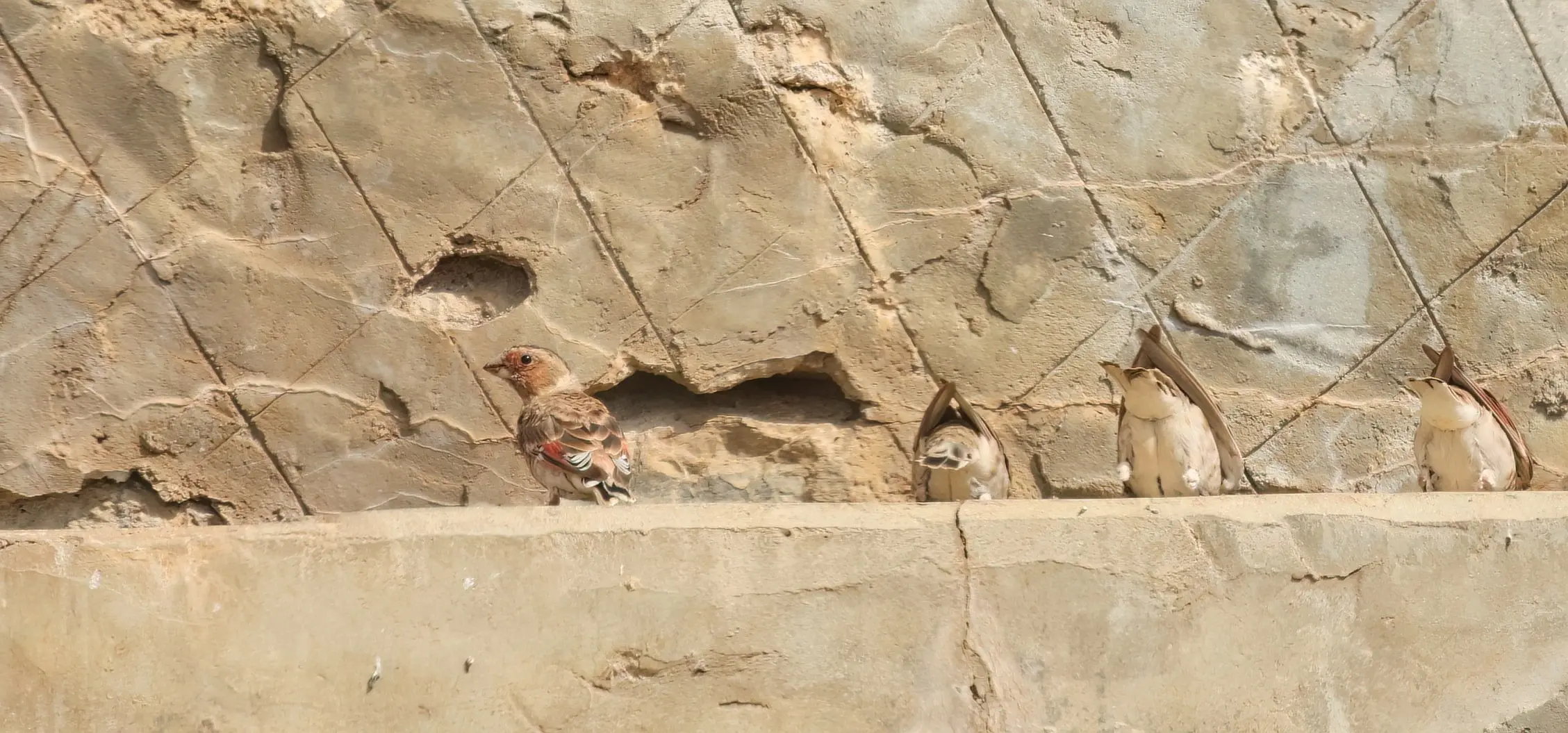
Rhodopechys sanguineus sanguineus
 Asian Crimson-winged Finch
Asian Crimson-winged Finch
 Alamecek
Alamecek ![]()
 ázsiai rózsásszárnyúpinty
ázsiai rózsásszárnyúpinty
Rhodopechys sanguineus sanguineus -  Asian Crimson-winged Finch
Asian Crimson-winged Finch 
![]() Alamecek
Alamecek  ázsiai rózsásszárnyúpinty
ázsiai rózsásszárnyúpinty![]()
(mountain well, 1960 m, Çimiköy Köyü Yolu, Akseki region)
● Males in breeding plumage have more rosy colors, females and young birds are duller in color.
● They seemed to be the "strongest" birds at this drinking station. They quarreled a lot with Linnets and other birds. Rock Sparrows are a clearly bigger than Crimson-winged Finches, still the latter wanted to show dominance over them at the water source.
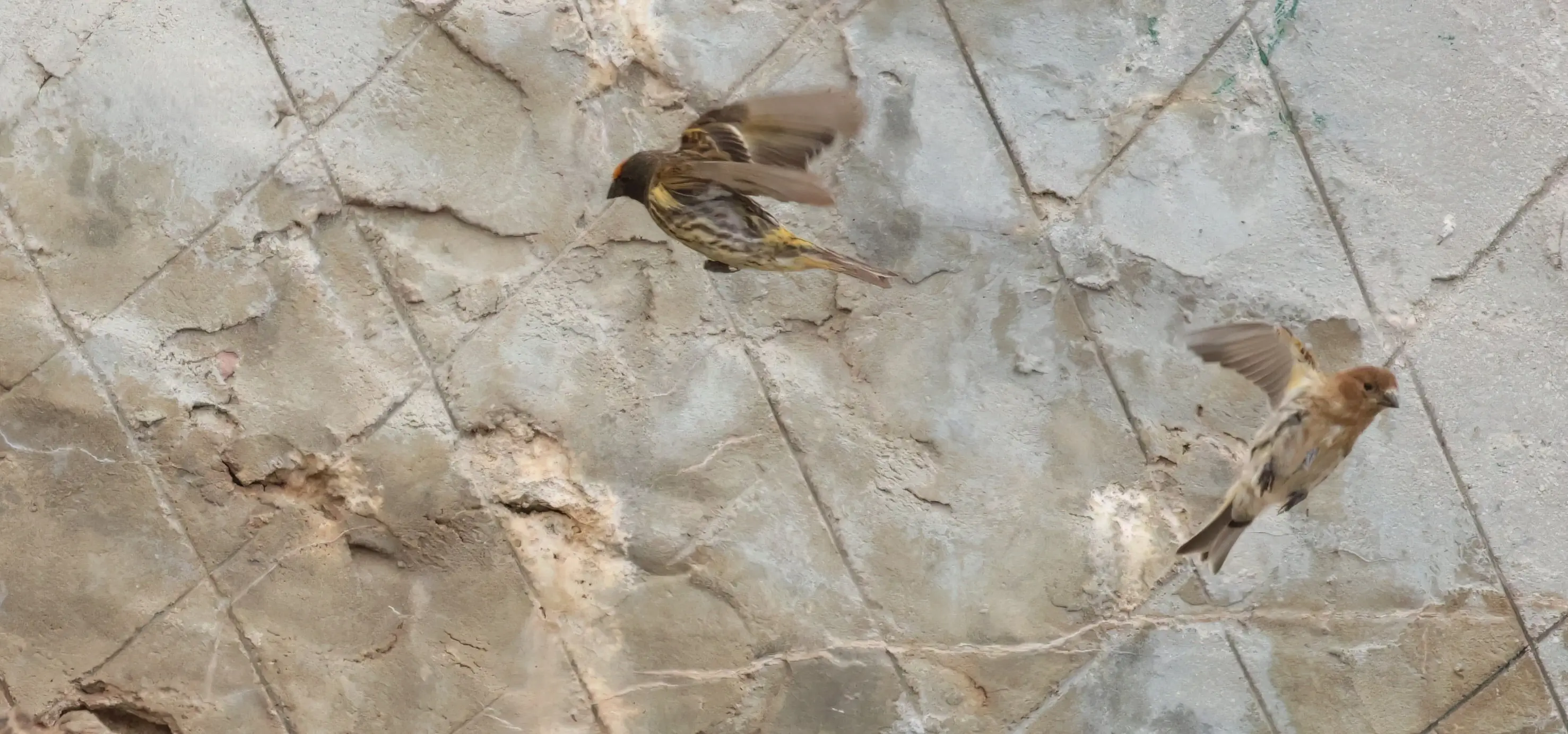
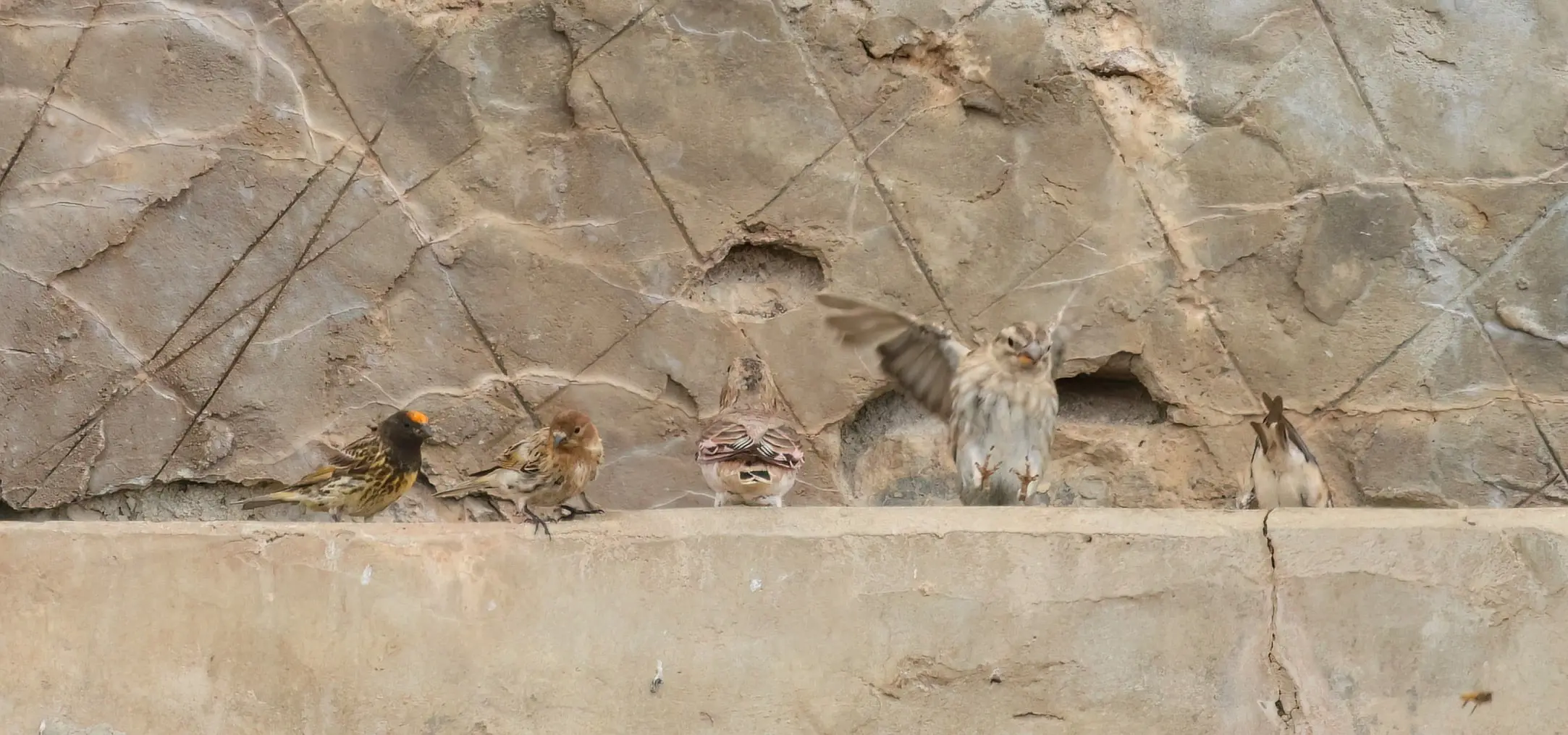
Serinus pusillus.
 Red-fronted (Fire-fronted) Serin
Red-fronted (Fire-fronted) Serin
 Kara iskete
Kara iskete ![]()
 vöröshomlokú csicsörke
vöröshomlokú csicsörke
Serinus pusillus. -  Red-fronted (Fire-fronted) Serin
Red-fronted (Fire-fronted) Serin 
![]() Kara iskete
Kara iskete  vöröshomlokú csicsörke
vöröshomlokú csicsörke
(mountain well, 1960 m, Çimiköy Köyü Yolu, Akseki region)
● Shy and rare little birds. They come quickly and go quickly.
● A male and a female came to drink from the water of the well. Crimson-winged Finch, Rock Sparrow and Linnet are the other birds to the right in the lower image.
● This mountain well, like a magnet, attracts many birds from the surrounding arid area. Linnets and Northern Wheatears were the most common, but others were also present: Crimson-winged Finches, Red-fronted Serins, Rock Sparrows, Rock Thrushes, Tawny Pipits, Cretzschmar and Ortolan Buntings, Black Redstarts, Rock Nuthatches, Alpine Choughs, Chukars. Most of them have only been seen here. As the guide Mehmet said, during the summer season birds live scattered all over the region and it's harder to find them, but some points like this are still suitable for birdwatching. In winter, they move to lower altitudes.
● Another great torphy would have been the White-winged Snowfinch (Montifringilla nivalis leucura) which is also scattered in summer and much harder to find in this season, we didn't find them either.
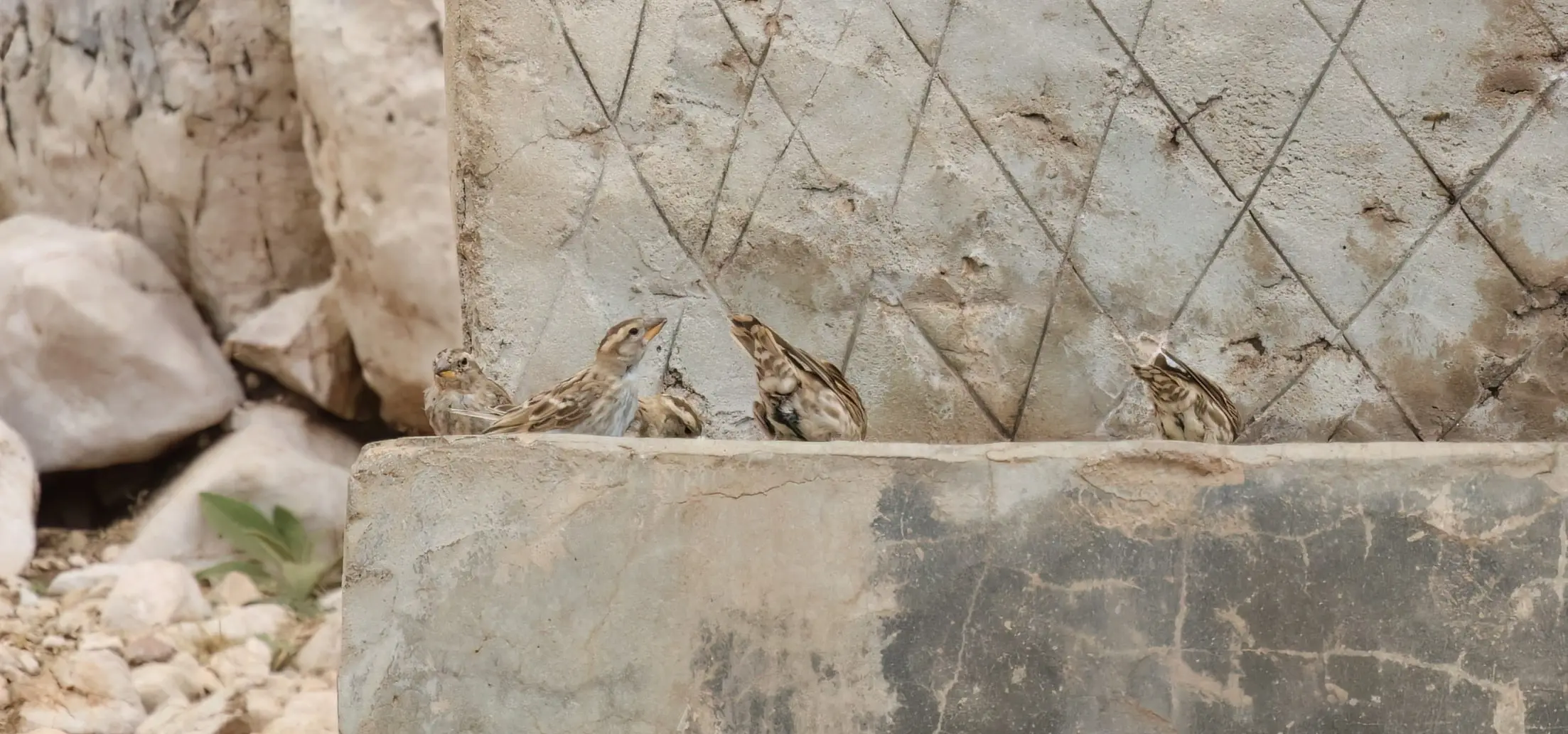
Petronia petronia puteicola
 Rock Sparrow
Rock Sparrow
 Kaya serçesi
Kaya serçesi ![]()
 köviveréb
köviveréb
Petronia petronia puteicola -  Rock Sparrow
Rock Sparrow 
![]() Kaya serçesi
Kaya serçesi  köviveréb
köviveréb
(mountain well, 1960 m, Çimiköy Köyü Yolu, Akseki region)
● Always in little flocks.
● They were not uncommon at the well at all, but I didn't see them anywhere else.
● Ssp puteicola is the race from Central Southern Türkiye to Jordan.

Pyrrhocorax graculus digitatus
 Alpine (Yellow-billed) Chough
Alpine (Yellow-billed) Chough
 Sarı gagalı dağ kargası
Sarı gagalı dağ kargası ![]()
 havasi csóka
havasi csóka
Pyrrhocorax graculus digitatus -  Alpine (Yellow-billed) Chough
Alpine (Yellow-billed) Chough 
![]() Sarı gagalı dağ kargası
Sarı gagalı dağ kargası  havasi csóka
havasi csóka
(mountain well, 1960 m, Çimiköy Köyü Yolu, Akseki region)
● Ssp digitatus (S-Türkiye, Levant, SW-Iran) is a little bit larger than the nominate.
● A large flock of 60-70 birds behind the mountain well on the slopes. ➤
● They were chatting and foraging on the steep slopes. We spent a few hours here, but unfortunately they kept a safe distance the whole time.
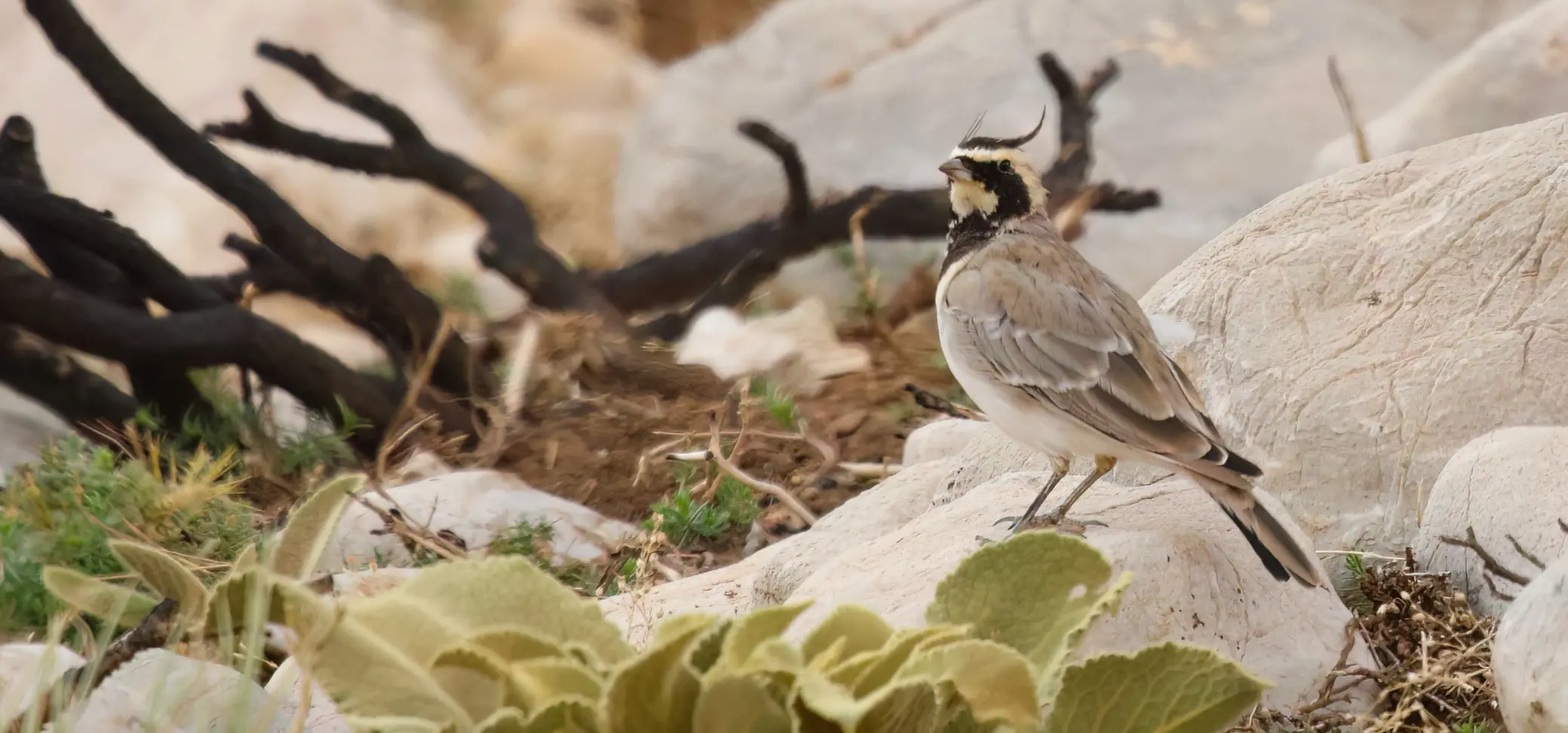
Eremophyla penicillata kumerloevei
 Mountain Horned Lark
Mountain Horned Lark
 Kulaklı toygar
Kulaklı toygar ![]()
 havasi fülespacsirta
havasi fülespacsirta
Eremophyla penicillata kumerloevei -  Mountain Horned Lark
Mountain Horned Lark 
![]() Kulaklı toygar
Kulaklı toygar  havasi fülespacsirta
havasi fülespacsirta![]()
(hillside at mountain village, 1760 m, Çimiköy Köyü Yolu, Akseki region)
● A little flock of them (~10 birds) on the hillside at the little mountain village, sometimes mixed with Greater Short-toed Larks. A couple of other birds in the site described here as 'mountain road', in the habitat of Finsch's Wheatears, the latter 2 birds were less shy and much more photogenic as we were in the car.
● The subspecies is endemic to the Taurus Mountains and to the surrounding heights in South Central Türkiye.
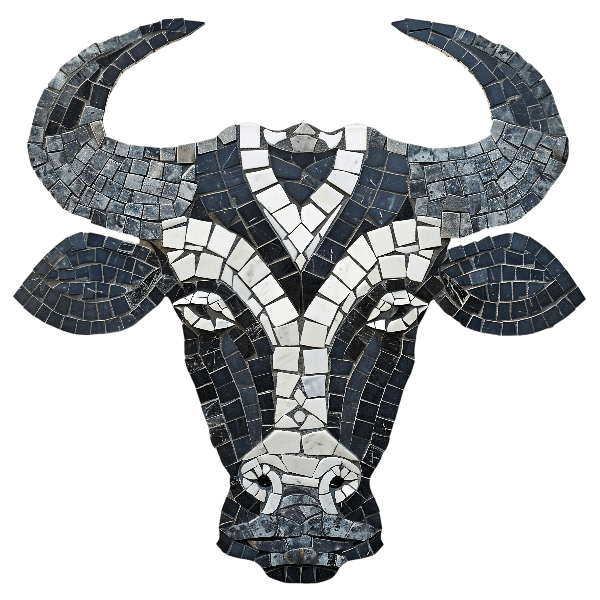
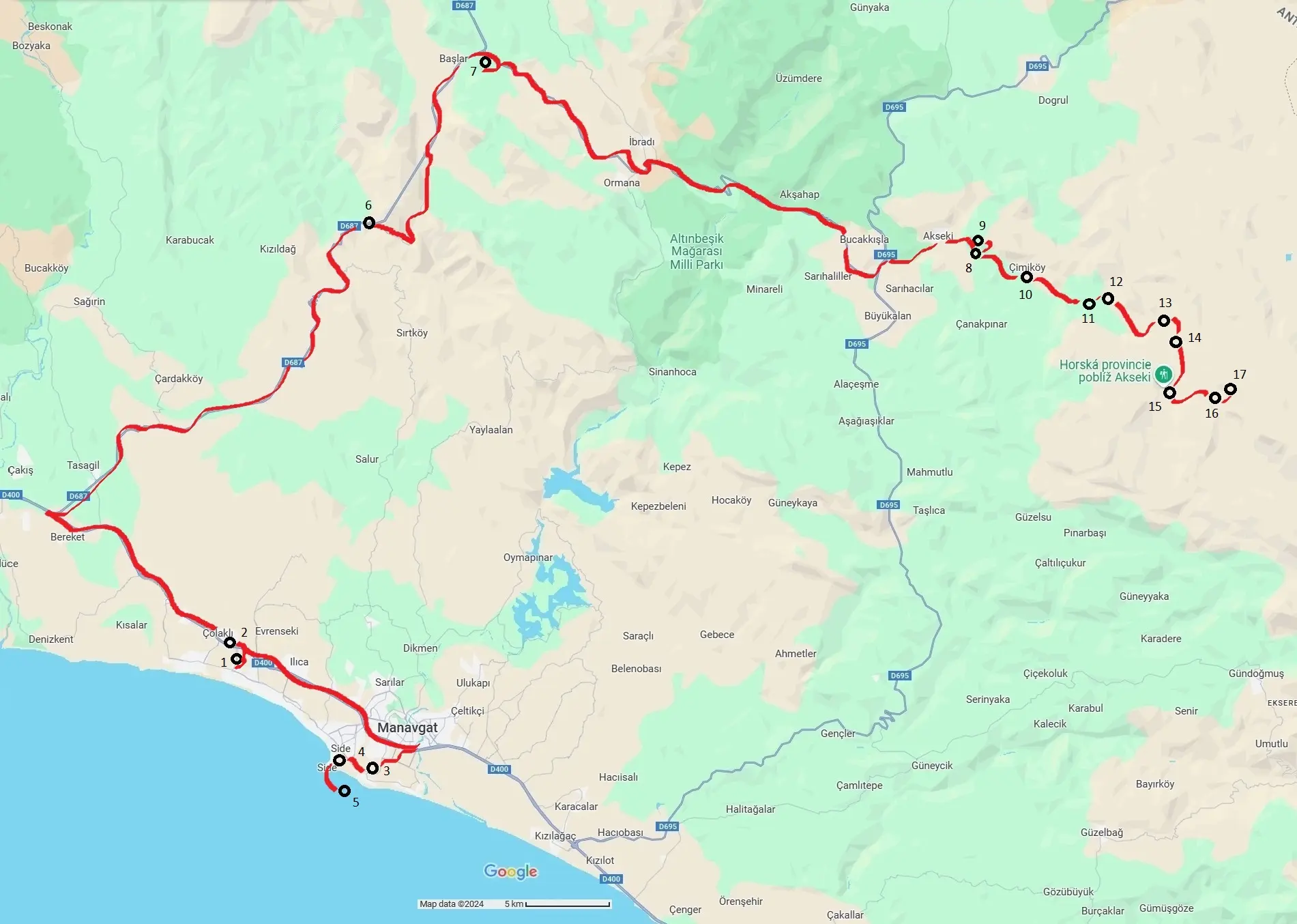
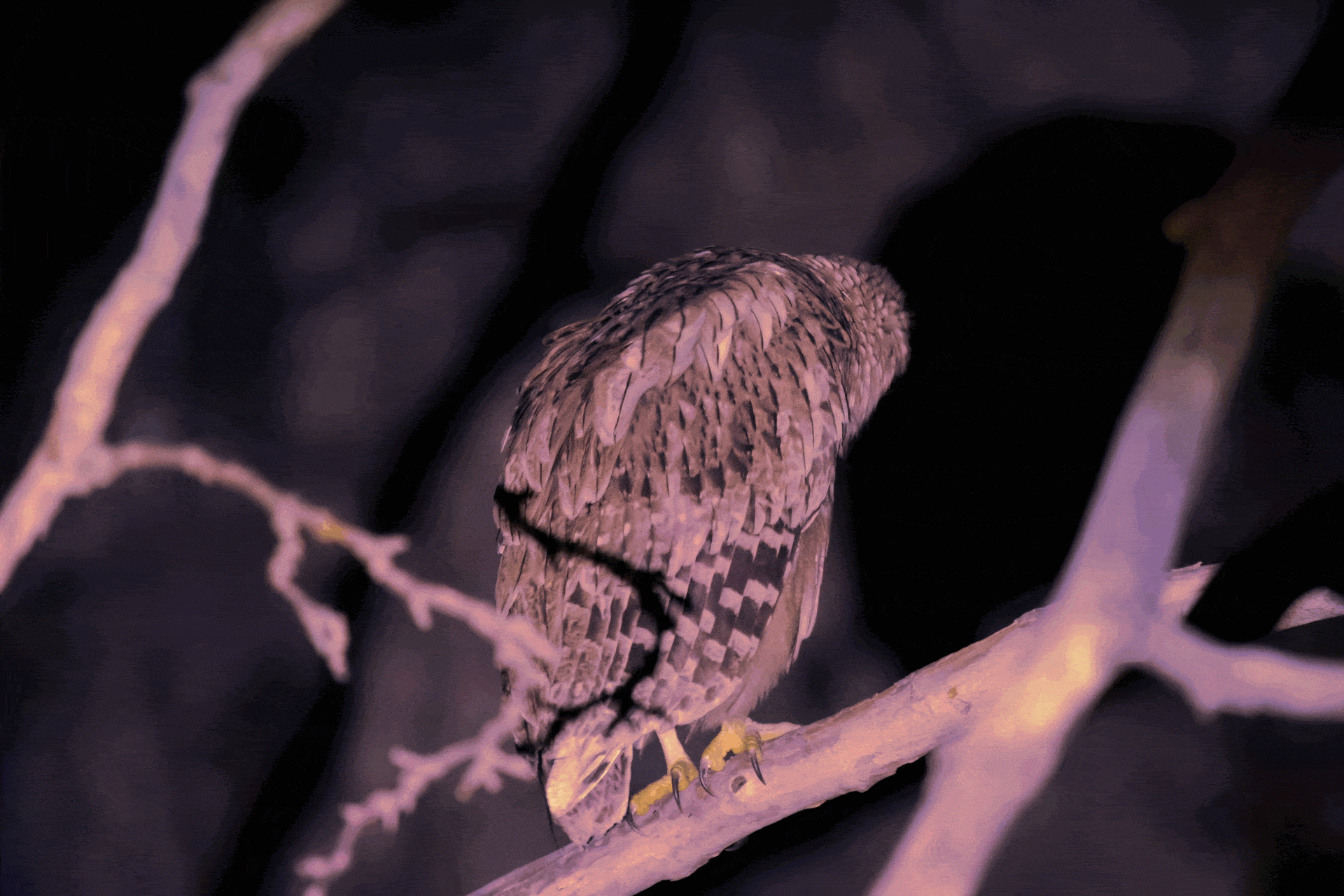
1. Around Çolaklı village: Some rustic farms, vacant lots, groves, orchards, plantations, cemeteries, some old and ruined buildings. Tourists mostly stay only in the zone close to the sea. Tits, warblers (mostly Olivaceous W.), doves (Laughing, Collared), Feral Pigeons, House Sparrows, Bulbuls, White Wagtails, Barn and Red-rumped Swallows, Jays, Hooded Crows. +2 Delicate Prinias on a vacant lot.
2. Çolaklı hill: A wooded hill with an old radio tower on top. No tourists. Cicadas, Masked and Red-backed Shrikes, Jays, Middle Spotted Woodpecker, tits, warblers. This is where I saw the one and only Common Buzzard fly over.
3. Manavgat pine forest: Some sort of ecopark. A pine grove on the dunes of completely sandy soil. I didn't have time to explore here, I just touched the edge during a longer walk. Some warblers, bulbuls, tits, blackbirds, jays.
4. Antik Side: Ruins of the ancient city, too late for anything in August, except Crested Larks and House Sparrows. The free beach was completely lifeless except for a few brave tourists in the heat. The commercial-historical sites were mostly dominated by House Sparrows, Laughing Doves, Collared Doves, Feral Pigeons and some Bulbuls.
5. Gulf of Antalya, Antik Side: Only a very few birds, a few Yellow-legged Gulls (on the beach) and some Scopoli's Shearwaters (in the deeper sea). Not a single fishing boat could be seen (only for the tourists...), which is a telling sign of the sea's fish stock. Another morning two Barn Swallows passing over the beach, that's all... This hot season is not a good time for birdwatching here.
6. D687, mountainside: A steep slope at a construction site and a dwarf pine and scrubs habitat on the rocky slope. Blue Rock Thrush, Rock Nuthatch, Woodchat Shrike, Bee-eater, Chukars, Raven, Peregrine.
7. D687 junction, Başlar: A roadside grove with abandoned farms or maybe beekeeper's buildings. Tits, Ortolan Buntings, Striated Flycatchers, Black-eared Wheatears, Goldfinches, Willow Warblers. We stopped here for the Olive-tree Warbler, but had no luck with it here either.
8. Dutluca cemetery, wooded (NO ENTRY!, but everything is easily visible from outside over the low stone fence): In theory, a sure hotspot for Krüper's Nuthatch, but not this time. Lesser Spotted Woodpecker, Woodlarks, tits, shrikes, crows, doves, pigeons, sparrows.
9. Dutluca, dirt road in a pine forest: Another sure Krüper's Nuthatch hotspot, this time also in practice. A dense pine forest with a little dirt road.
10. Çimiköy, grove at old cemetery: Many warblers. Hotspot habitat for Olive-tree Warbler (not this time).
11. Roadside clearing: Only dirt roads leads up from this point. Shrubs and rocks, and even more shrubs and rocks everywhere. In some places the slopes are less steep, creating small valleys or small plateaus along the road. Good little hunting grounds for Agamas and Masked Shrikes.
12. Ruined cabins and an old well: Some wooden skeletons and ruins of abandoned and old buildings. A small water source brings many animals here. The small valley is surrounded by sparse forests. Many Mistle Thrushes, Blackbirds (very shy birds around here!), Hoopoes, Rock Nuthatches, Greenfinches, Chaffinches, wheatears, tits, warblers.
13. Irania hotspot: A mountain serpentine with small rocks, big rocks, huge rocks and bushes and an old well nearby on the side of the dirt road. There are fewer and fewer high trees around. Too late for Irania this time in August. They were still here a few weeks ago.
14. Plateau: A relatively flat and grassy large area at an altitude of 1700 m, surrounded by cliffs. Linnets, Sparrowhawks, Golden Eagles.
15. Mountain village: A tiny and remote rural village with its football field and with mountains around. Unfortunately, I couldn't find any information about the name of this old village. Greater Short-toed Larks, Horned Larks, Crag Martins, wheatears.
16. Mountain road: A rocky dirt road with low shrubs and boulders everywhere. Just a very few trees. High chances for Finsch's Wheatear, Black-eared Wheatear, Horned Lark, Greater Short-toed Lark.
17. Mountain well: A remote and solitary well in the higher mountains. Probably a very important source of water in the arid region, many birds came here to drink.
+1: secret Fish-owl hotspot on Manavgat River.
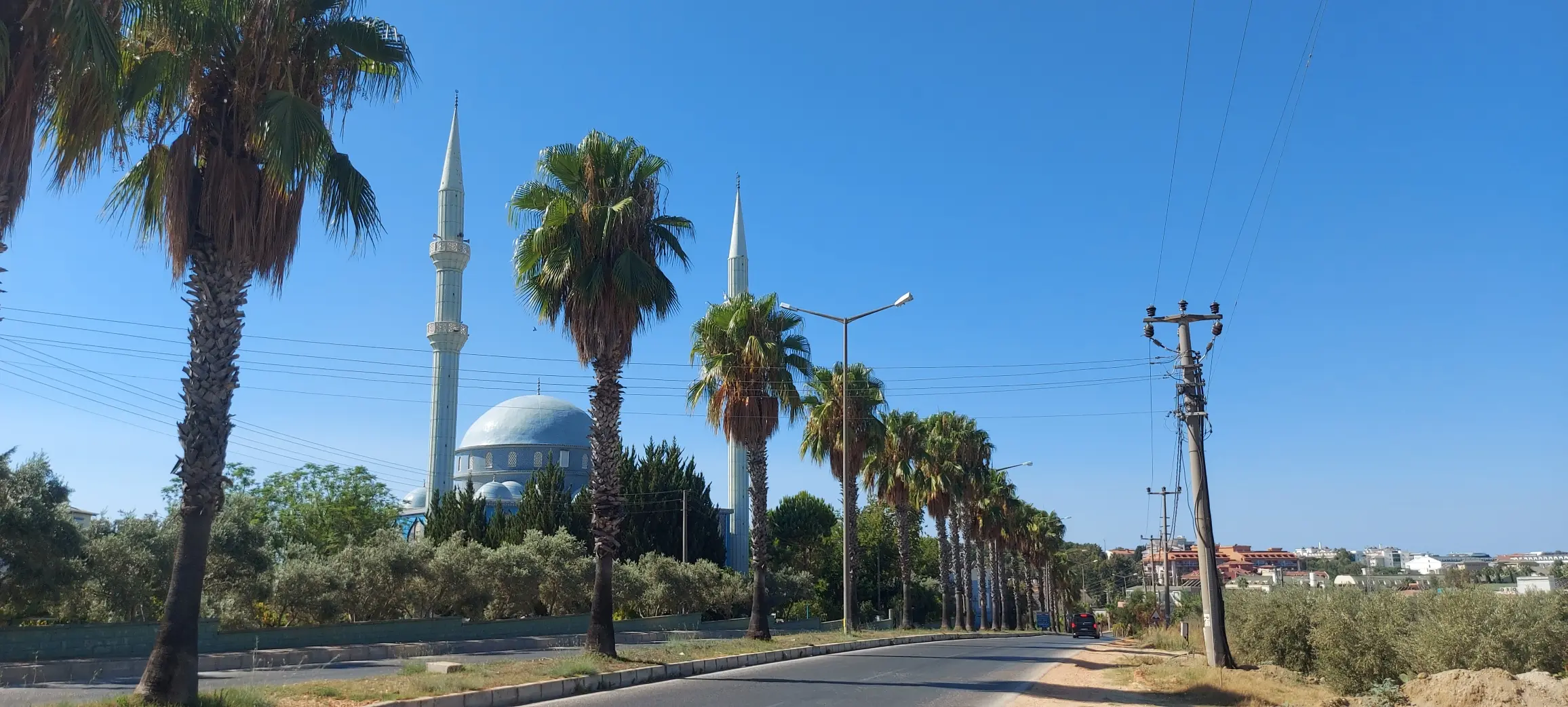
1. Çolaklı-Side |
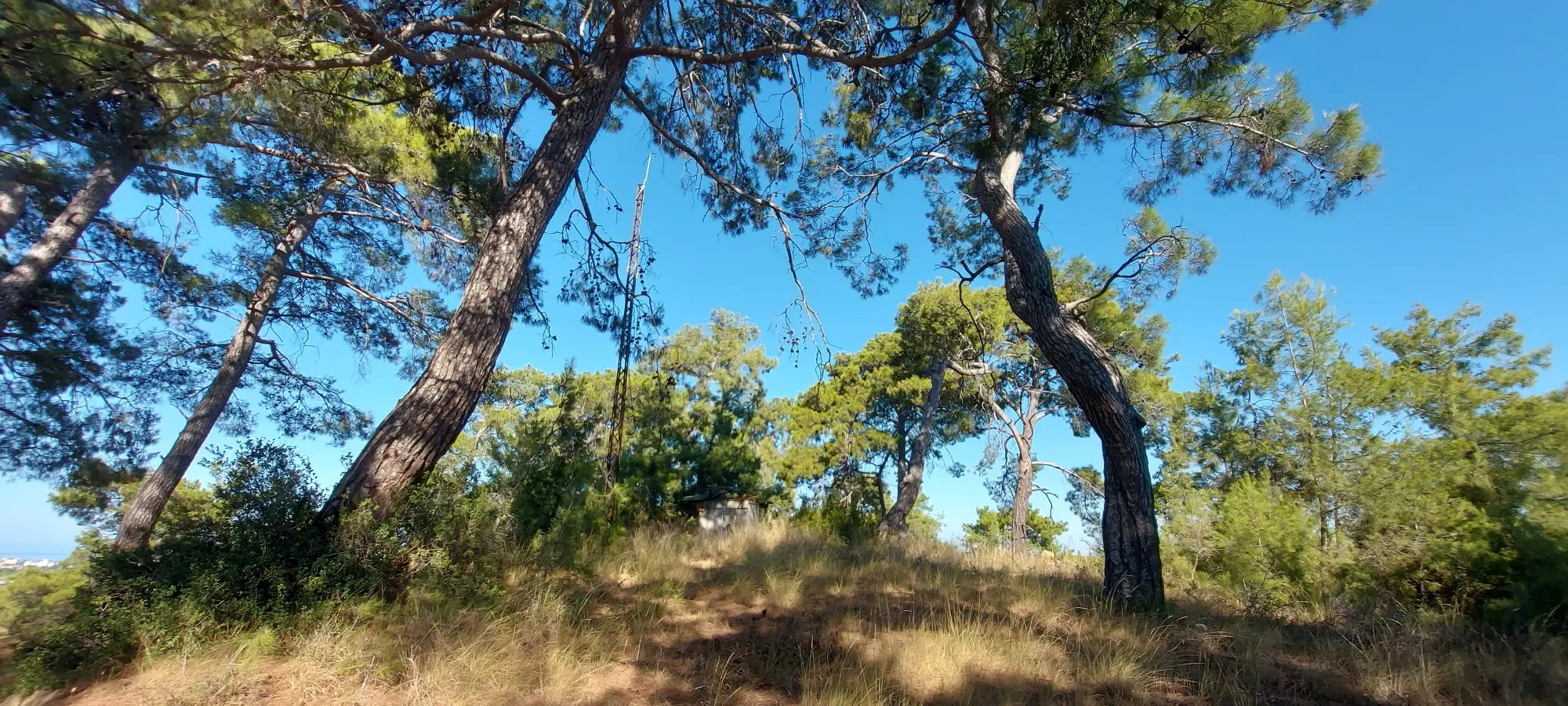
2. Çolaklı hill |
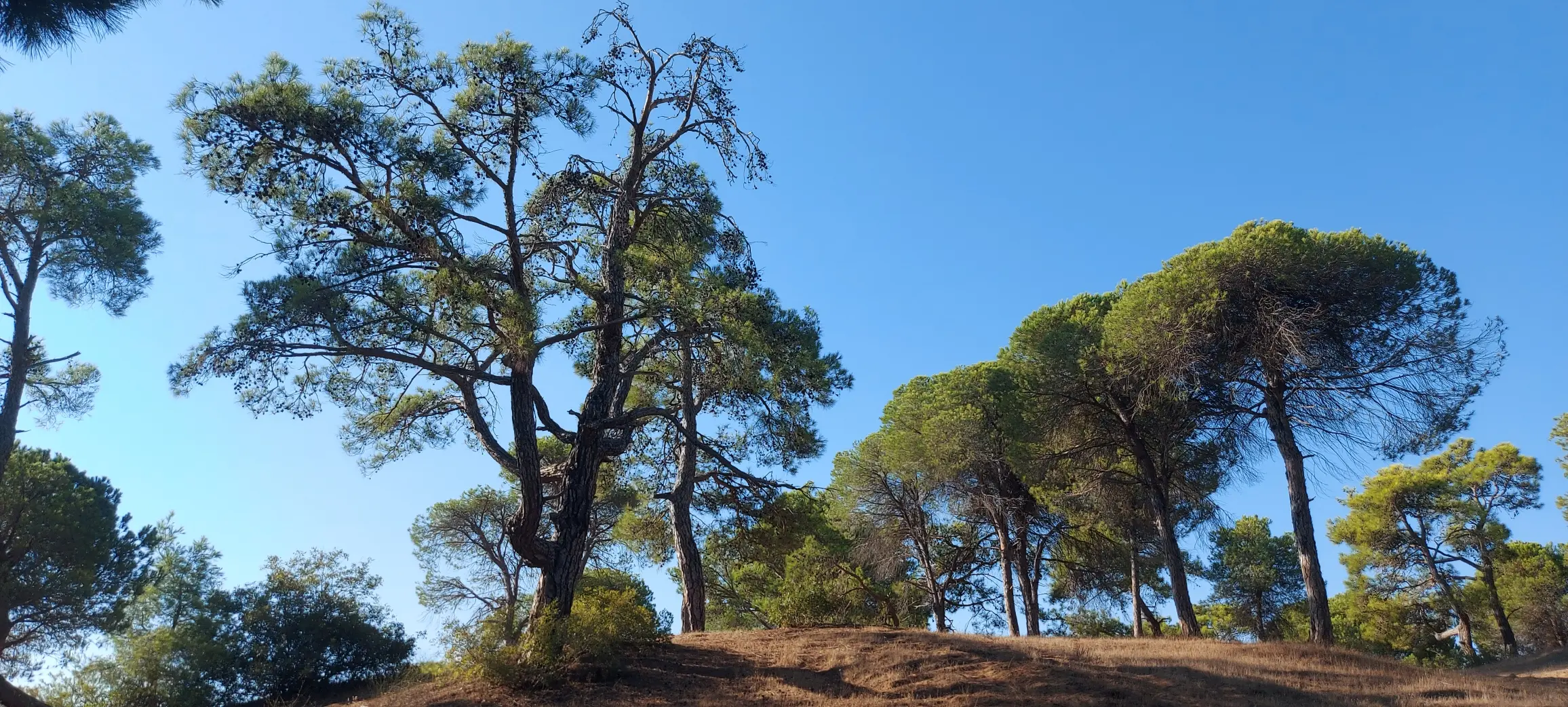
3. Manavgat pine dunes |
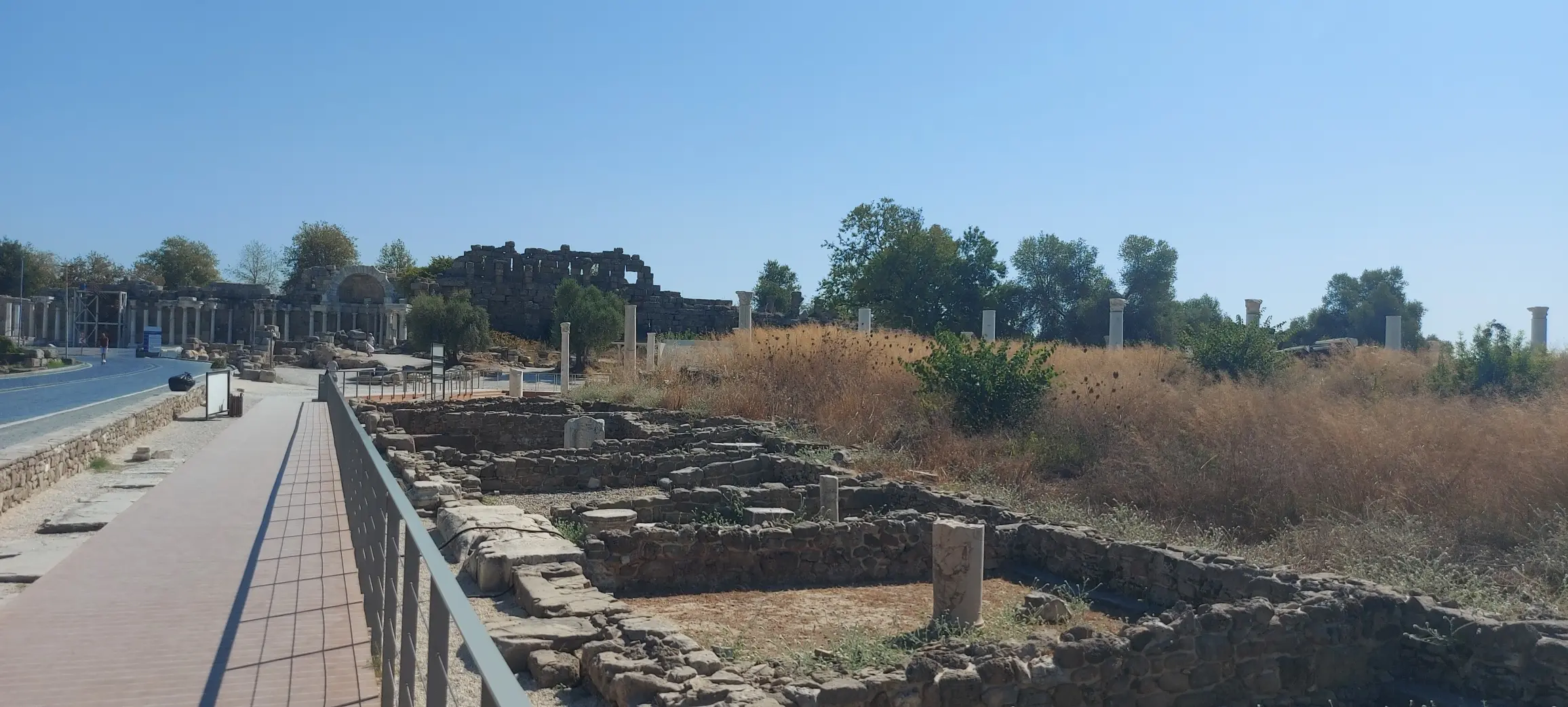
4. Antik Side |
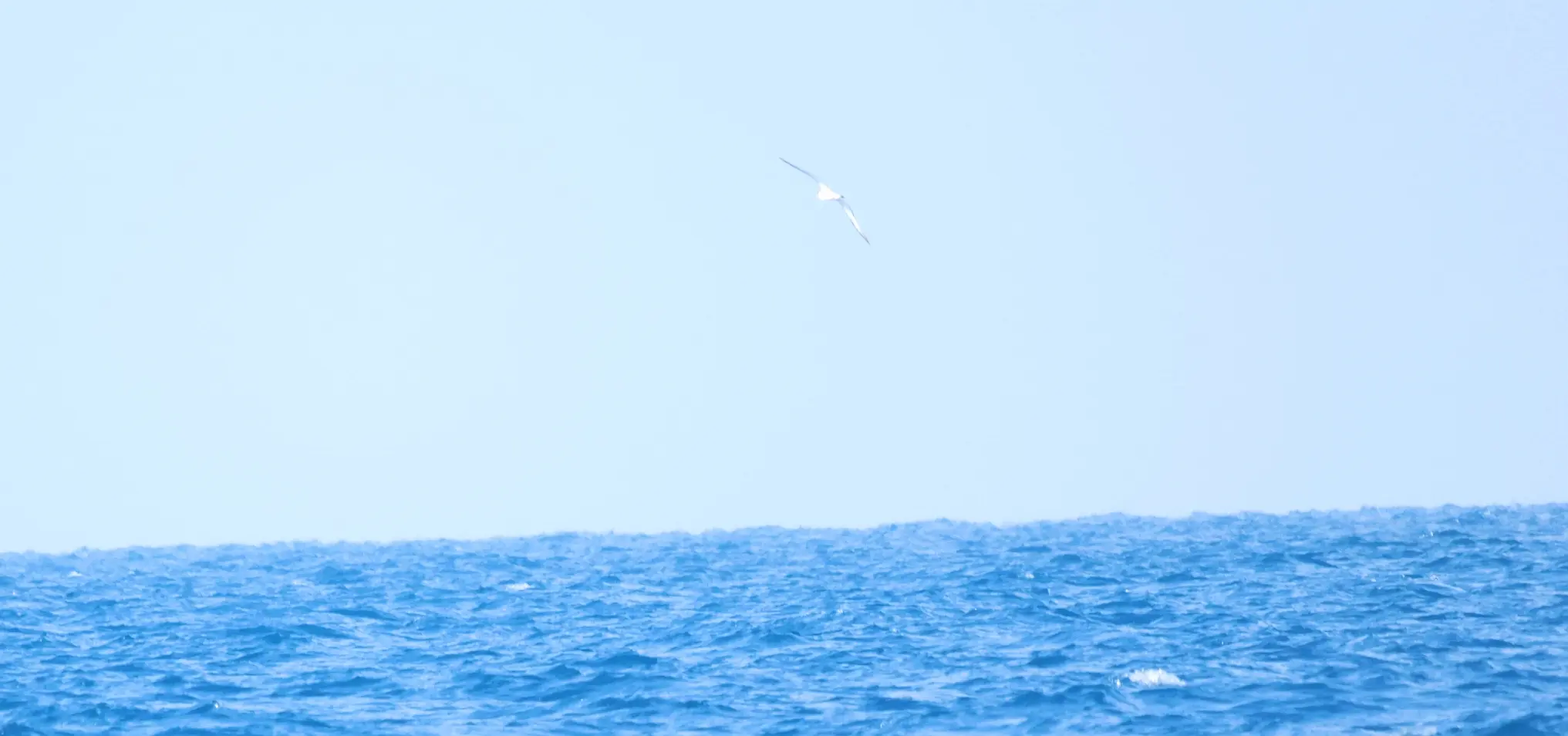
5. Gulf of Antalya |
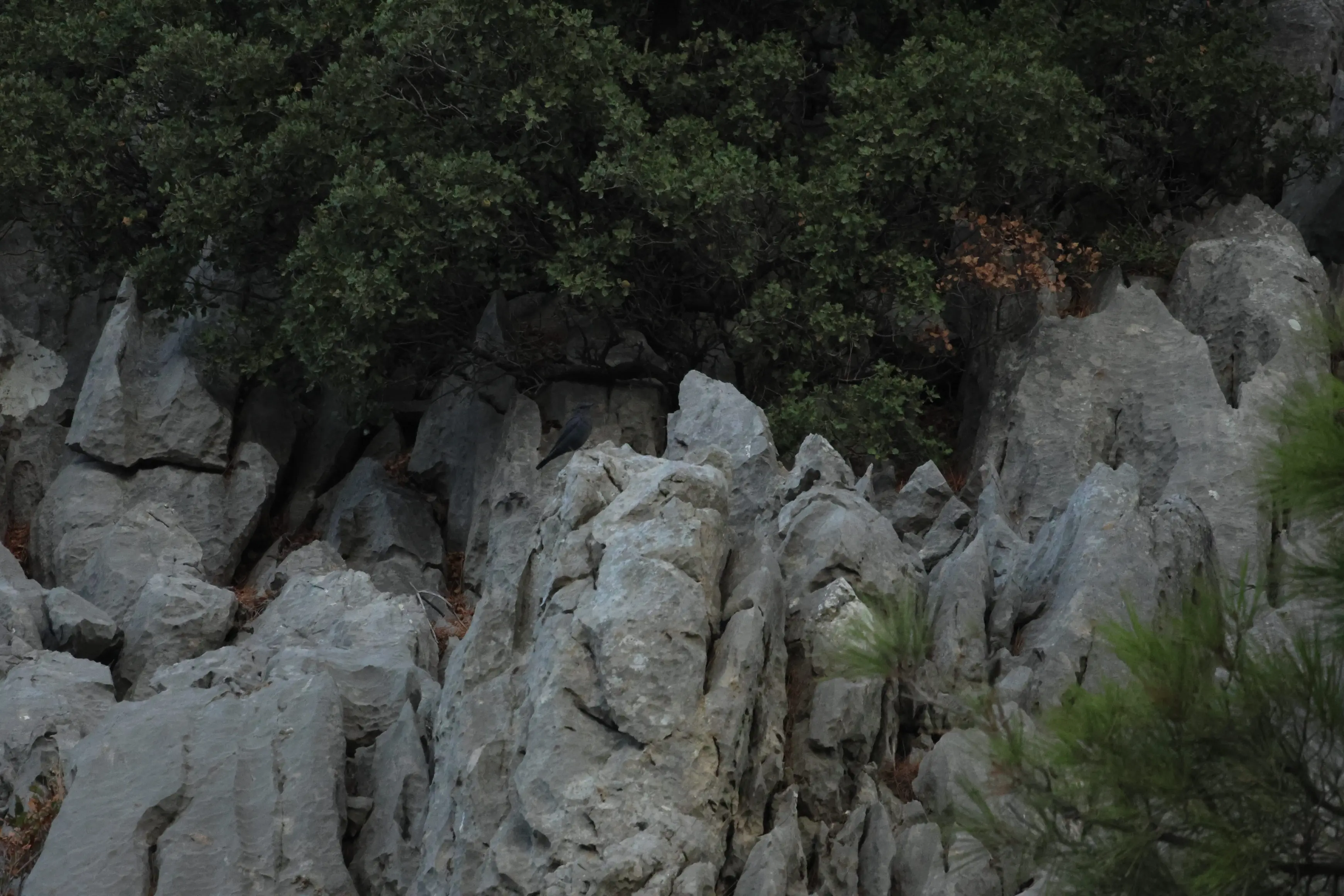
6. D687, mountainside |
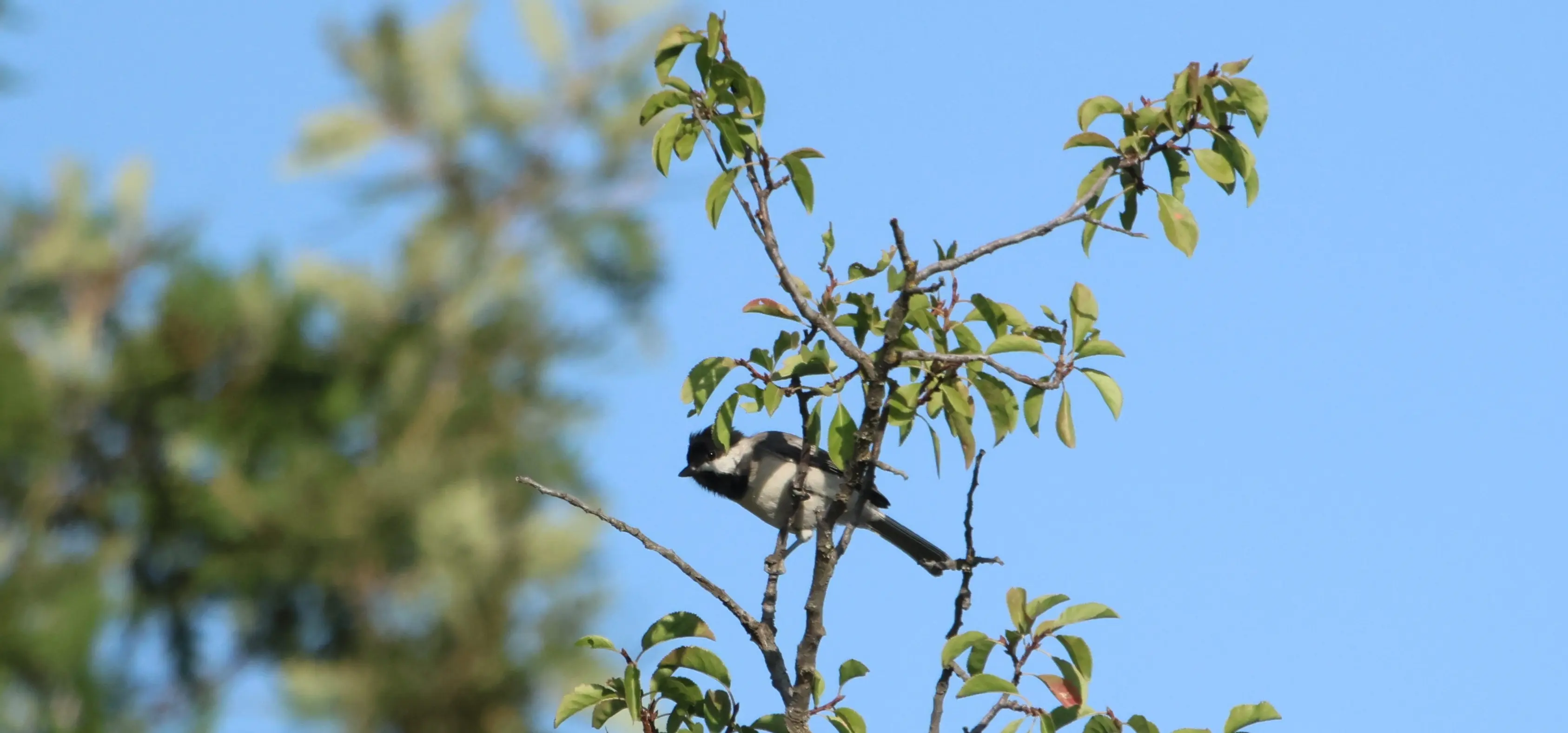
7. D687 junction, Başlar |
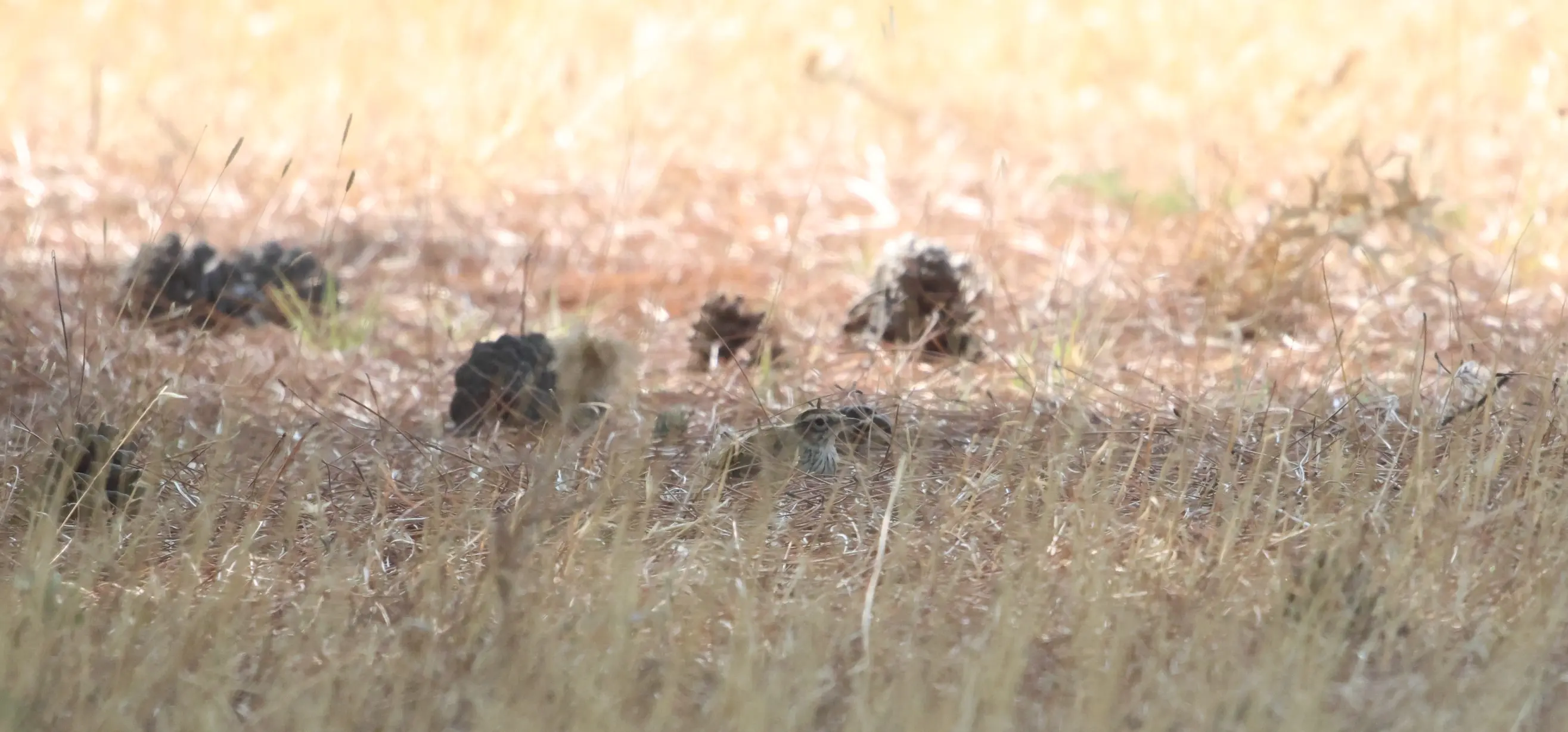
8. Dutluca, cemetery |
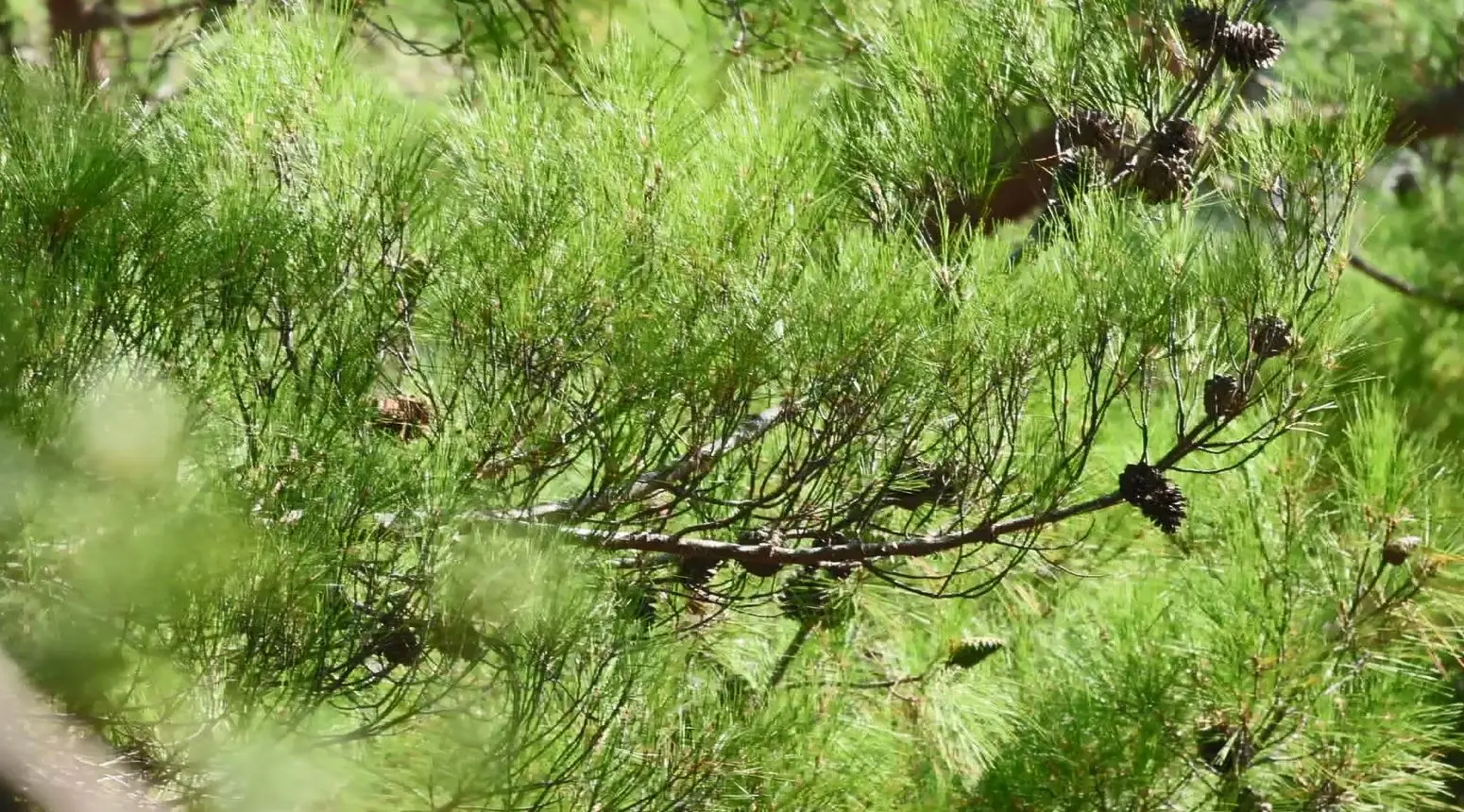
9. Dutluca, pine forest |
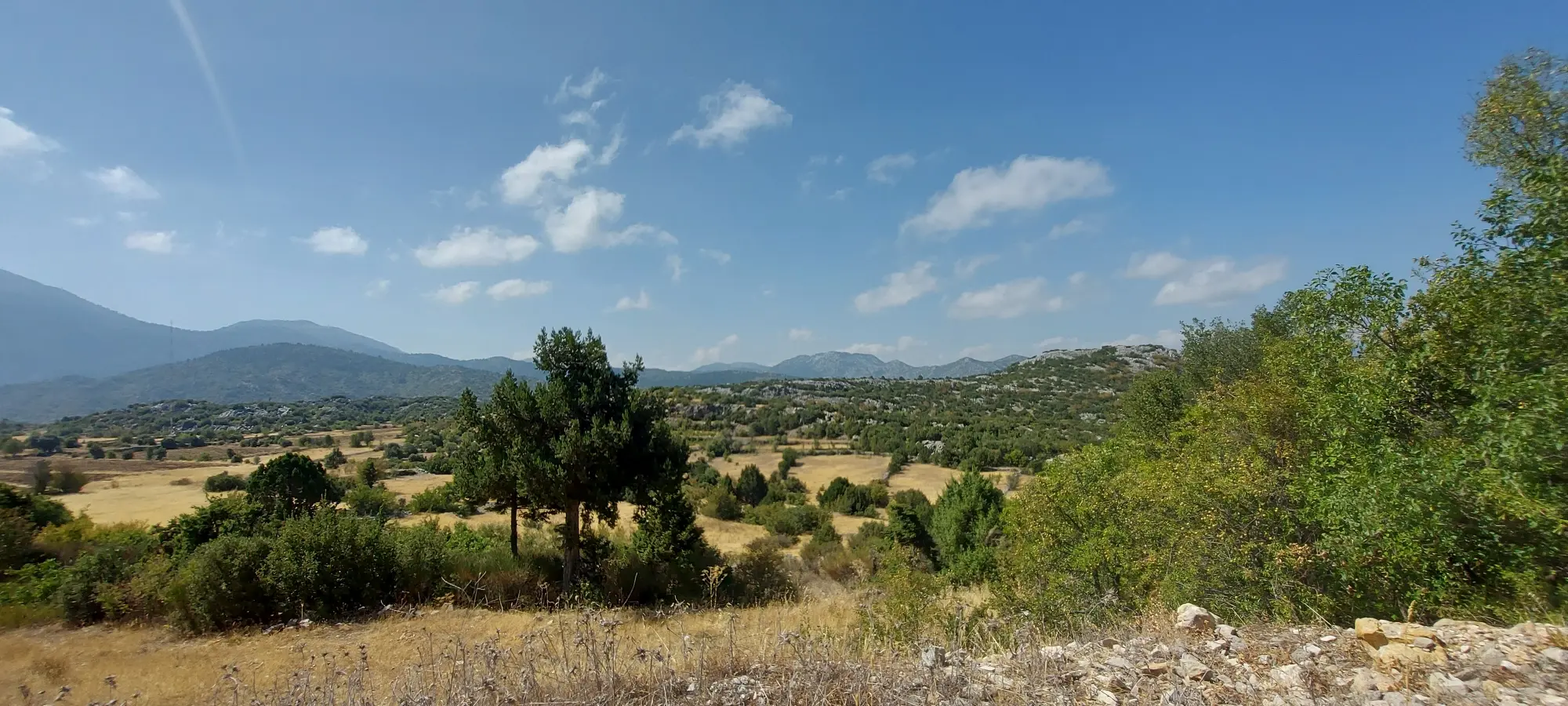
10. Çimiköy, grove at cemetery |
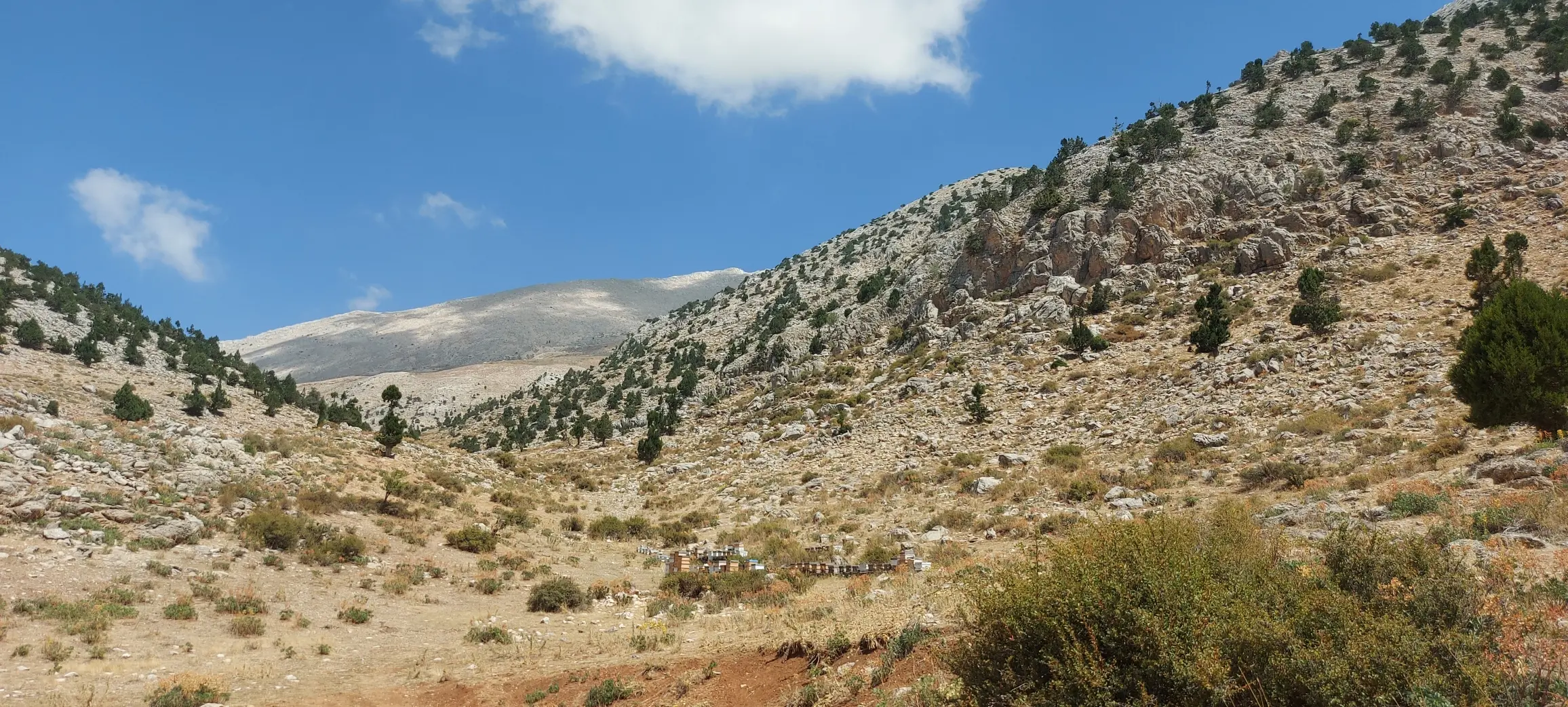
11. Çimiköy, roadside clearing |
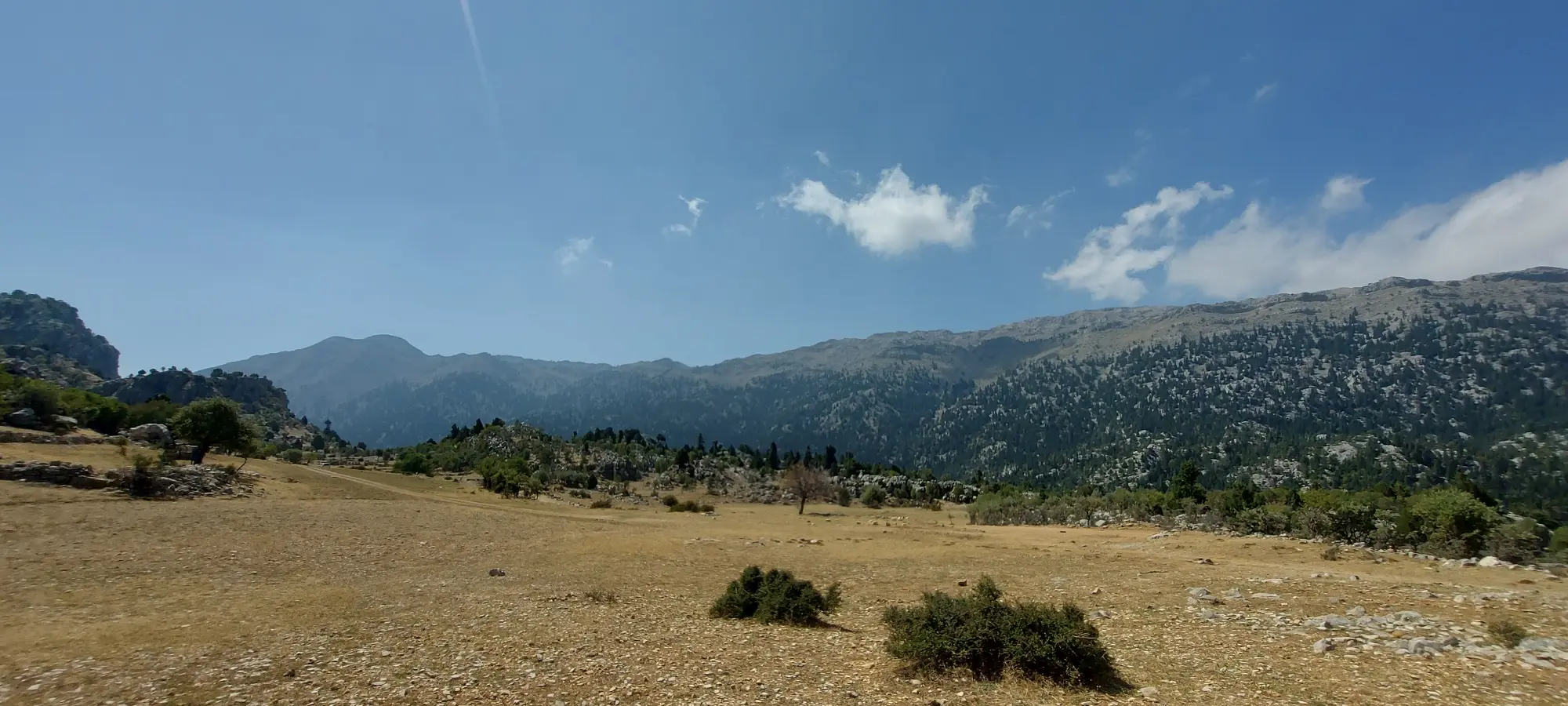
12. Çimiköy, ruined cabins |
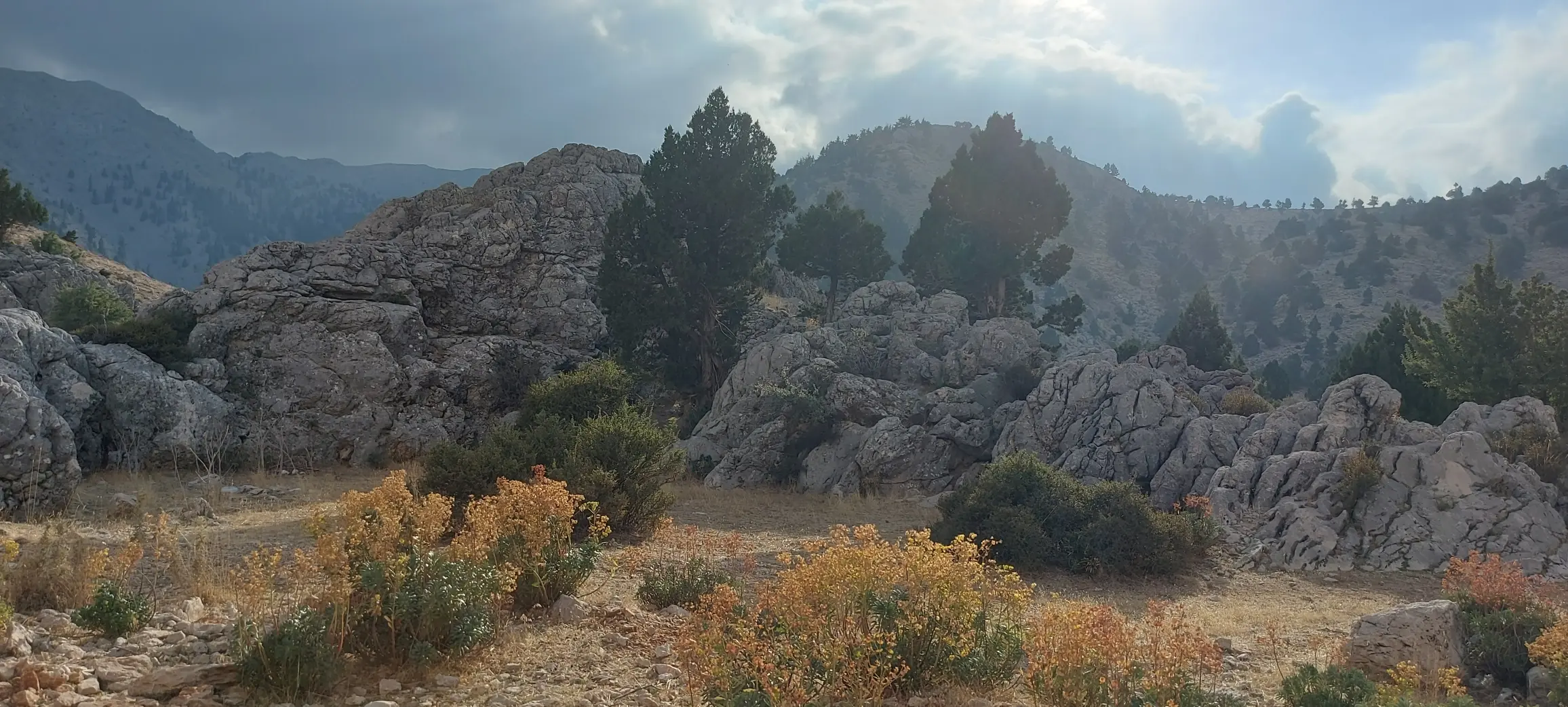
13. Çimiköy, Irania hotspot |
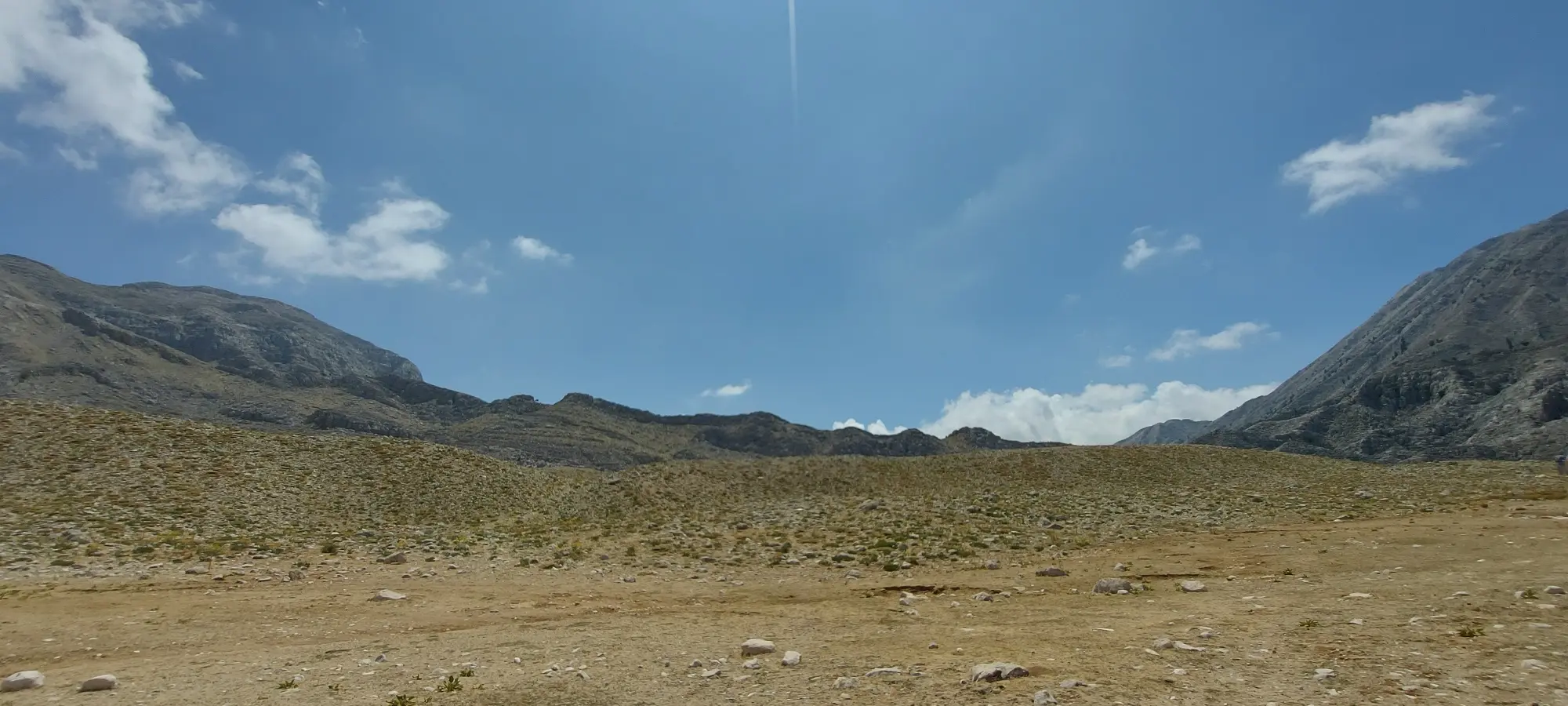
14. Çimiköy, plateau |
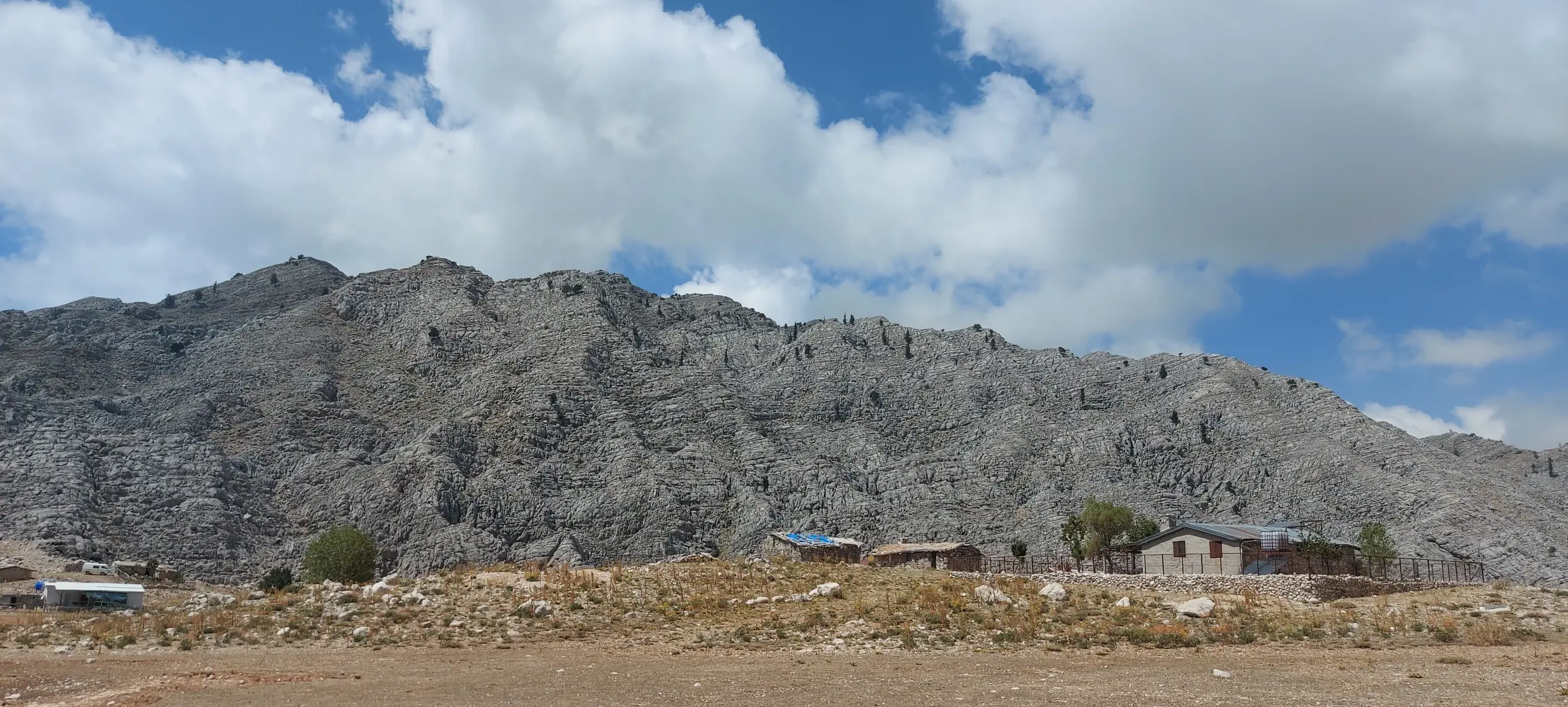
15. remote village |

16. mountain road |
|
|
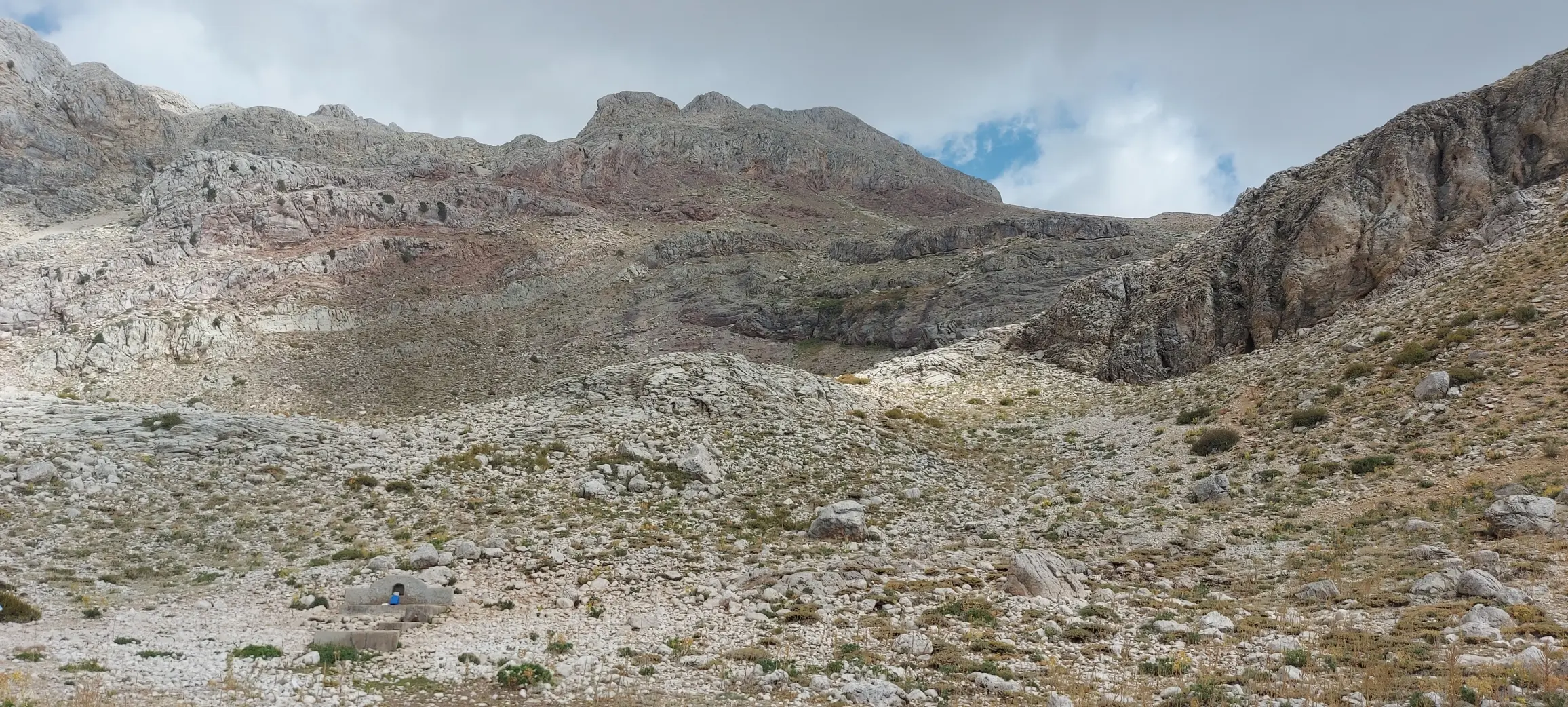
17. mountain well |

+1. Manavgat River, Fish-owl hotspot |
Bird stats and infos:
● 70 bird species of category A were observed during the 2-3 days, most of them (61) on the guided tour. For me it meant 16 new species and 14 new subspecies in the Western Palearctic. Apart from the guided tour, I found 28 category A species, of which are only 2 new: Delicate Prinia and Scopoli's Shearwater. These personal trips were mostly just morning walks around the accomodation, middays and afternoons were unbearable hot and humid in the coastal zone.
● No free-living category C or B species were seen. There are some cages here and there for parrots and ornamental poultry in the streets and on the beaches, and perhaps the Ruddy Shelducks on the beach were not so free-living as they looked like.
● Side and Taurus Mountains species list (18-25 August 2024)
● None of the birds were baited or set up. Two of them were called in by the bird guide: Krüper's Nuthatch and Lesser Spotted Woodpecker. On the other hand, sitting and waiting in a car-hide next to a mountain well in the middle of a bone-dry countryside might be baiting, but I don't know... Either way, we didn't feed them or didn't bring them extra water or didn't create any artificial environment for birdwatching and photography.
● Map pointer of the observations are accurate.
● Don't ask me for Fish-owl coordinates, please. It's not such a big secret in the internet age...
● Except for monotypic bird species, the third Latin name was always used.
● Latin names of monotypic bird species were marked with a dot instead of the non-existent third name.
● The Turkish names of animals were based on Wikipedia, names of places were based on Google Maps.
General comments:
● This week was a family vacation in Side, Türkiye, with one day out to go birding.
● July and August are maybe the worst months for birding in the region. It is very hot and the air is terribly humid in the seaside tourist zone. At 10 AM it's already hot and suffocating. The above-mentioned birds are mostly the results of a full-day guided tour (link) in the company of the excellent birder and tour guide Mehmet Özcan Kilic (Vigo Tours). Higher altitude mountain areas are less humid during this season. Some areas around the village of Çolaklı were also good places, where I found a few (really few) birds on some mornings.
● July and August are not recommended by Vigo Tours for birdwatching. The beach zone part is completely omitted from the program of the summer season.
● The Fish-Owl tour was led by the same guy, but it is a separate tour (link). Their website is a bit messy so note that there is no day-time Fish-Owl tours anymore, it starts in the evening from Side (or, as I did, with some rests, connected to the full-day tour). The search will countinue until the owl is found or as long as the birders can stand it.
● Mountain hiking in the areas described above requires a permit, birdwatching without an authorised guide is not allowed in the region according to the law. In practice, it is possible to explore, but it is strongly not recommended because of the bears, the wild boars, the really huge and free-ranging unfriendly sheepdogs common around roads and their herds, the free-living grazing herds of large animals like cattle, sheep, horses, donkeys, etc, the venomous small animals, the very few sources of drinking water, the lack of any help in a dangerous and remote terrain, and also beacause of the probable control of rangers. On the other hand you need a reliable 4x4 SUV to overcome terrain obstacles on mountain roads, and a reliable emergency service in case of problems. The guide of this tour (link) has a permit and license to walk and a pro car to drive on the mountain roads of the national park. The company also always knows the wheather, the currently accessible ways and the best birding sites throughout the year. This is not an advertisement, just a simple statement, there is no other option here.
● You must not sit, rest or do anything else on rock piles, old walls or ruins because of the scorpions inside, especially in the night when they become more active. Snakes also tend to hide in rock piles and bushes. Never leave the trails.
● Do not pay by card on the streets, as unsuspecting tourists can be easily scammed by fraudsters by card skimming or cloning.
● Prepare in advance for night photography, practice at home, construct a 'night mode' into your camera.
Technical info:
● Wildlife pictures were taken with Canon EOS R7 and Canon RF 600mm F11 IS STM. The RF-S18-150mm kit lens was also used a few times in very low light conditions.
● Many pictures were somewhat denoised or sharpened afterwards with Topaz Labs AI, cropping images and additional optimizations were made by IrfanvView and GIMP. Finally, file sizes were reduced by the free online COMPRESS JPEG (Webp Converter version).
● Plants were mostly identified by the famous and infamous Pl@ntNet.org online platform from cropped images. Only high percentage and reliable results have been accepted, but here can be problems, for sure...
![]() Phoca.cz free flag icon bundle (16-12px) has been used at translation of names (source). Here, slightly adapted 13-10px dimensions and somewhat darkened versions were applied.
Phoca.cz free flag icon bundle (16-12px) has been used at translation of names (source). Here, slightly adapted 13-10px dimensions and somewhat darkened versions were applied.
![]() Turkish language audio content is based on the Turkish version of the free online Play.ht (source, 'Turkish Text to Speech & Turkish Accent Generator'), voice: "Ahmet" (2nd in dropdown menu).
Turkish language audio content is based on the Turkish version of the free online Play.ht (source, 'Turkish Text to Speech & Turkish Accent Generator'), voice: "Ahmet" (2nd in dropdown menu).
● Published: 27th Jan 2025
Any comments or suggestions for corrections would be greatly appreciated.

